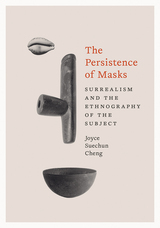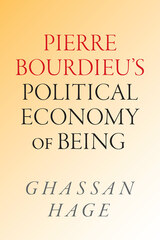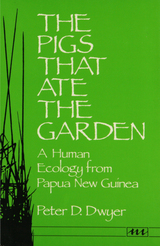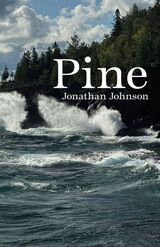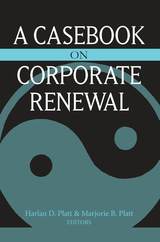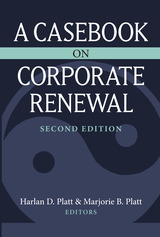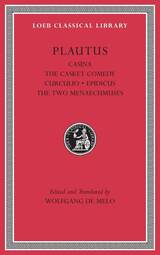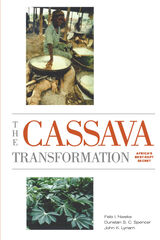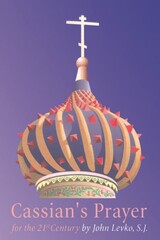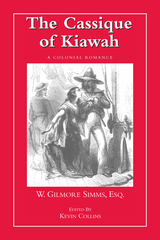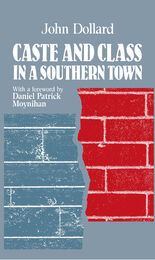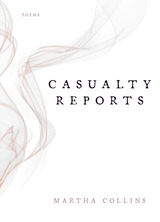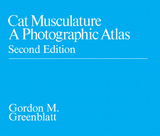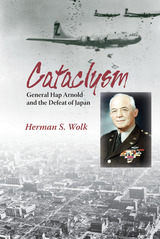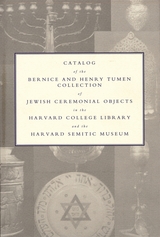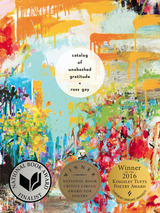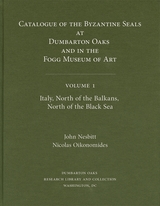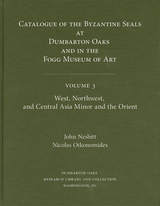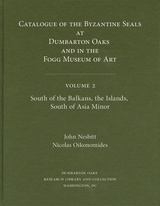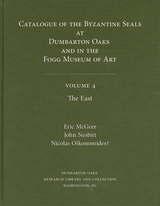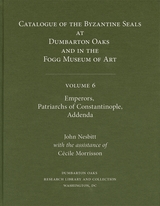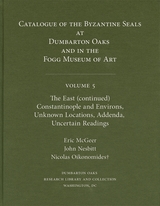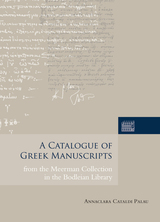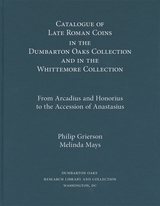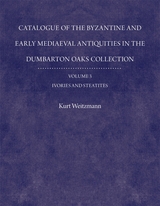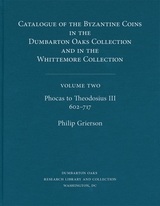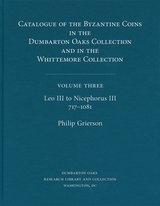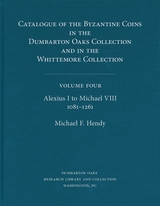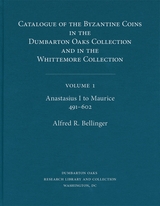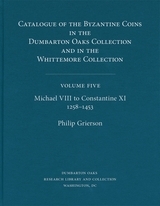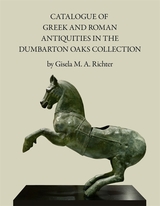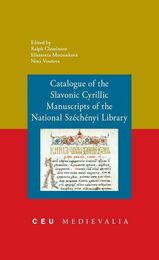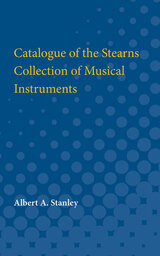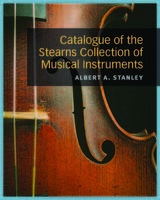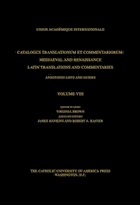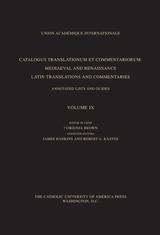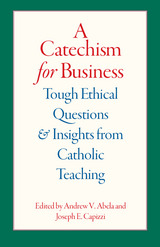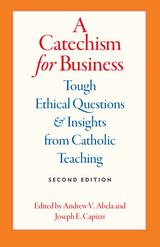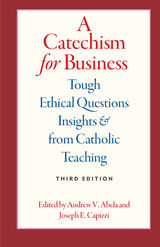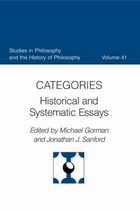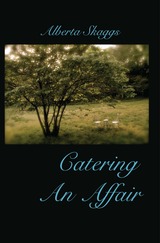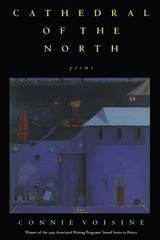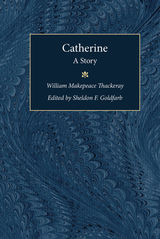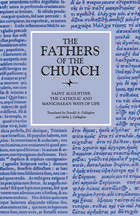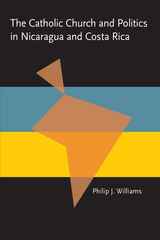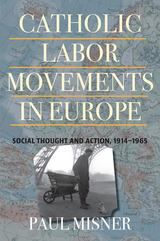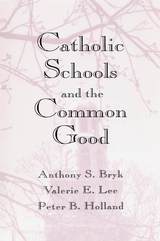 Case Selection in the United States Supreme Court
Doris Marie Provine
University of Chicago Press, 1980 For decades the Supreme Court has received more requests for review than it can possibly grant; it now rejects more than ninety percent of the petitions which fulfill jurisdictional requirements. Consequently, the process by which the justices select cases must be recognized as one of the most important aspects of the Court's work. But because it is hidden from public view and proceeds by secret ballot, the case-selection process has never been thoroughly analyzed.
This concise and accessible study provides an intimate view of the Court's case-selection process through an analysis of the docket books and other papers of Justice Harold H. Burton, who kept scrupulous records of the Court's work from 1945 to 1957. In her analysis of these invaluable records—the only records of case-selection votes made public since the advent of discretionary review in 1925—Provine provides two perspectives on the problematic issue of judicial motivation in case selection. The first perspective is an institutional one in which the Court is treated as the unit of analysis: the second is personal, in which differences among decision makers are the focus of analysis. Provine suggests that judicial role perceptions go far to explain both agreement and disagreement in case selection. She also considers the impact of the process upon litigants, since the system seems to favor petitioners with litigation expertise, especially the U.S. government. Yet, she claims, the secrecy of case selection fosters the popular misperception that any worthwhile case can be appealed "all the way to the Supreme Court." The Court thus maintains its image as a forum equally available to all litigants.
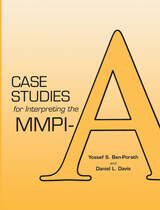 Case Studies for Interpreting the MMPI-A
Yossef S. Ben-Porath
University of Minnesota Press, 1996 An instrumental resource for professionals and students working with adolescents.
A landmark for MMPI instruments, this volume will serve as a vital contribution to the expanding base of successful MMPI-A applications. The authors' comprehensive approach to each of the sixteen clinically diverse cases constitutes an intrepretive model providing detailed information on the background of each case, profile validity, current level of adjustment, symptoms and traits, diagnostic and treatment recommendations, and outcome. Particular emphasis is placed on the new adolescent-specific scales developed to assess family and school problems, low self-esteem, and substance abuse.
Including background information on the development of the MMPI-A, the book is a useful resource for those new to the MMPI-A as well as an essential reference for those who have experience in MMPI interpretation with adolescents.
Yossef S. Ben-Porath is associate professor of psychology at Kent State University. Instrumental in the research on and development of the MMPI-A, he has coauthored numerous books on the MMPI-2 and MMPI-A.
Daniel L. Davis is an expert in the area of juvenile delinquency and has had an active career in the treatment and rehabilitation of youth in various programs. He currently works at the Ohio Department of Rehabilitation and Corrections.
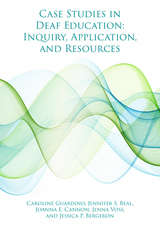 Case Studies in Deaf Education: Inquiry, Application, and Resources
Caroline Guardino
Gallaudet University Press, 2018 Case Studies in Deaf Education provides comprehensive materials that will prepare prospective teachers to work with the diverse spectrum of students who are d/Deaf and hard of hearing (d/Dhh) and empower them to better understand these complex and unique learners. The text presents an extensive series of case studies that are balanced and unbiased in both language and instructional approaches and that encourage readers to use background details, academic data, and evidence-based practices to make informed educational decisions.
The authors address the diversity of d/Dhh students by examining a multitude of learner characteristics that influence communication and educational services. These characteristics and their interactions include a student’s background experiences, language and communication mode (sign and/or listening and spoken language), language and academic proficiency levels, use of assistive hearing devices (hearing aids or cochlear implants), and family dynamics. The case studies are supported with authentic supplemental materials, such as audiograms and Individualized Educational Plans, and are accompanied by discussion questions, activities, resource lists, and a glossary of essential terms. Case Studies in Deaf Education will help teachers and allied professionals develop the knowledge and skills to use a collaborative, problem-solving process that leads to the provision of quality, effective services for students who are d/Dhh.
The accompanying Instructor’s Manual contains key information for each case study and provides PowerPoint slides that can be displayed during in-class or online discussions. Find it at the GU Press website as a downloadable file.
 Case Studies in Medical Ethics
Robert M. Veatch
Harvard University Press From prescriptions to pain killers to transplantation of human organs, the perplexities of medical ethics extend far beyond the confines of medicine. This book offers over 100 engrossing case studies that guide the reader to an understanding of the ethical aspects of medical care. The cases illustrate dilemmas arising in everyday practice—what to tell a dying patient, selecting a surgical approach, choosing between brand-name and generic drugs—as well as the ethical consequences of advanced technology—prenatal diagnosis that might result in the decision to abort, or keeping an irreversibly comatose patient alive with support methods.
Robert M. Veatch first shows readers how to identify ethical issues and points out that an important element in making a decision is to identify the person responsible for it. Then, in analyzing the classical moral question "What is the right thing to do?" he cites situations that were actually faced by patients and medical professionals. He explores a number of specific ethical problems in contemporary medicine: abortion, sterilization, contraception, transplantation, hemodialysis, genetic counseling, and human experimentation, among others. The last chapter focuses on death and dying.
Ethical positions are never forced upon the reader. Instead, the author is careful to present alternatives and to discuss the consequences of a particular decision. His book is written for patients, their families and friends, nurses, technicians, counselors, social workers, physicians, employers, and lawyers—indeed for anyone affected by the burgeoning power of medical intervention.
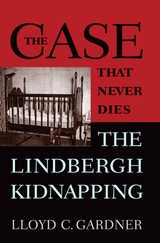 The Case That Never Dies: The Lindbergh Kidnapping
Lloyd C. Gardner
Rutgers University Press, 2012 Winner of the 2004 New Jersey Studies Academic Alliance Book Award for Scholarly Non-Fiction | Named a 2005 Honor Book by the New Jersey Council for the Humanities
Essential reading for anyone interested in the most famous American crime of the twentieth century
Since its original publication in 2004, The Case That Never Dies has become the standard account of the Lindbergh kidnapping. Now, in a new afterword, historian Lloyd C. Gardner presents a surprise conclusion based on recently uncovered pieces of evidence that were missing from the initial investigation as well as an evaluation of Charles Lindbergh’s role in the search for the kidnappers. Out of the controversies surrounding the actions of Colonel Lindbergh, Norman Schwarzkopf, commander of the New Jersey State Police, and FBI director J. Edgar Hoover, Gardner presents a well-reasoned argument for what happened on the night of March 1, 1932. The Case That NeverDies places the Lindbergh kidnapping, investigation, and trial in the context of the Depression, when many feared the country was on the edge of anarchy. Gardner delves deeply into the aspects of the case that remain confusing to this day, including Lindbergh’s dealings with crime baron Owney Madden, Al Capone’s New York counterpart, as well as the inexplicable exploits of John Condon, a retired schoolteacher who became the prosecution’s best witness. The initial investigation was hampered by Colonel Lindbergh, who insisted that the police not attempt to find the perpetrator because he feared the investigation would endanger his son’s life. He relented only when the child was found dead. After two years of fruitless searching, Bruno Richard Hauptmann, a German immigrant, was discovered to have some of the ransom money in his possession. Hauptmann was arrested, tried, and sentenced to death. Throughout the book, Gardner pays special attention to the evidence of the case and how it was used and misused in the trial. Whether Hauptmann was guilty or not, Gardner concludes that there was insufficient evidence to convict him of first-degree murder. Set in historical context, the book offers not only a compelling read, but a powerful vantage point from which to observe the United States in the 1930s as well as contemporary arguments over capital punishment.
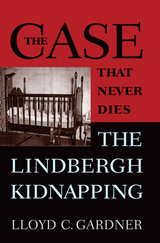 The Case That Never Dies: The Lindbergh Kidnapping
Lloyd C. Gardner
Rutgers University Press, 2004 The Case That NeverDies places the Lindbergh kidnapping, investigation, and trial in the context of the Depression, when many feared the country was on the edge of anarchy. Gardner delves deeply into the aspects of the case that remain confusing to this day, including Lindbergh’s dealings with crime baron Owney Madden, Al Capone’s New York counterpart, as well as the inexplicable exploits of John Condon, a retired schoolteacher who became the prosecution’s best witness. The initial investigation was hampered by Colonel Lindbergh, who insisted that the police not attempt to find the perpetrator because he feared the investigation would endanger his son’s life. He relented only when the child was found dead. After two years of fruitless searching, Bruno Richard Hauptmann, a German immigrant, was discovered to have some of the ransom money in his possession. Hauptmann was arrested, tried, and sentenced to death. Throughout the book, Gardner pays special attention to the evidence of the case and how it was used and misused in the trial. Whether Hauptmann was guilty or not, Gardner concludes that there was insufficient evidence to convict him of first-degree murder. Set in historical context, the book offers not only a compelling read, but a powerful vantage point from which to observe the United States in the 1930s as well as contemporary arguments over capital punishment.
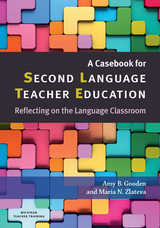 A Casebook for Second Language Teacher Education: Reflecting on the Language Classroom
Amy B. Gooden and Maria N. Zlateva
University of Michigan Press, 2018 This volume offers a series of actual dilemmas within language classrooms that are designed to promote reflection and discussion. It applies the case-based pedagogy often used in business and other fields to that of second language teacher education to encourage pre- and in-service teachers to grapple with the types of dilemmas and decisions teachers confront every day. Case-based pedagogy resists simple resolutions and easy answers; the activities that precede and follow each case are designed to stimulate analysis and discussion and allow users to draw on theoretical foundations while making critical practical connections.
The cases represent a range of classroom contexts: K–12 ESL/sheltered English immersion, modern foreign language, and post-secondary EAP; private, charter, and public schools; and urban and suburban settings. The book is ideally suited to College/School of Education and MA TESOL courses but will also be useful in professional development workshops for all types of language teachers.
 A Casebook of Decolonizing Pedagogical Practices for Second Language Teacher Education
Amy B. Gooden
University of Michigan Press, 2024 There is a compelling call to action for the educational field to develop fair and respectful practices that contribute to a brighter and more inclusive future. This comprehensive collection of case studies is designed to empower educators by providing them with the necessary pedagogical content knowledge, dispositions, and curricular insights to actively decolonize second/world language teaching in K–12 and university contexts. These authentic, problem-based cases shed light on the intricate dynamics present within diverse language learning settings, emphasizing the imperative for decolonizing and inclusive educational practices to support learning for all multilingual learners, including BIPOC, heritage language learners (HLL), SLIFE, refugees, and other L2 communities across ESL, SEI, World Language, Bilingual, and EAP settings. By encouraging readers to engage in critical reflection and praxis, this book fosters a transformative approach to language education that addresses historical injustices and promotes inclusive, anti-racist, and equitable learning environments for all students. In this book, readers will find: - practical tools and strategies for promoting awareness and reflexivity and for incorporating decolonizing and inclusive pedagogical practices.
- a rich array of viewpoints that encourages them to explore diverse perspectives within the realm of language education and decolonization.
- authentic, problem-based case studies that prompt critical reflection and a practical application of theoretical concepts.
- insights into navigating the evolving landscape of teaching, with a distinctive focus on decolonizing language education.
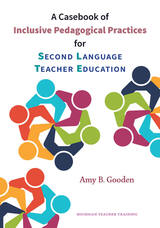 A Casebook of Inclusive Pedagogical Practices for Second Language Teacher Education
Amy B. Gooden
University of Michigan Press, 2021 This casebook is designed to broaden L2 teacher knowledge, thinking, and practice with regard to making language and learning accessible to all students. Language teachers are especially accountable for promoting socially just, inclusive, decolonizing, and multicultural pedagogical practices and curricula; at this critical juncture in history, this book is intended to raise language teachers’ awareness of the importance of critically examining and reflecting on the intersectionality of language education and inclusive pedagogical practices.
Language teacher educators can use this text in their courses and workshops to build on and extend theoretical foundations, while making critical practical connections.
The 12 cases presented here cover a range of inclusive language teaching and learning issues that practitioners are likely to face in their respective teaching contexts. All the cases are based on real-life dilemmas faced by practitioners in the field and have been informed by discussions with pre-service and in-service student teachers. The cases represent a range of classroom contexts: K–12 ESL/sheltered English immersion, world foreign language, and post-secondary EAP; private, charter, and public schools; and urban and suburban settings. The cases are accompanied by pre- and post-problem sets and in-class discussion questions.
This volume applies the case-based pedagogy often used in some fields to that of second language teacher education to encourage pre- and in-service teachers to grapple with the types of dilemmas and decisions teachers confront every day. The cases here are not intended as exemplars of practice to be emulated or illustrations of existing theories; instead, they are problem-based narratives that resist clear-cut answers or solutions and remain open ended to stimulate further investigation and reflection. The goal is to mimic the complexity of the classroom where teachers confront a range of pedagogical and learning challenges, and the ensuing experience requires critical, real-time decisions that demand keen professional discernment.
A Casebook on Corporate Renewal
Harlan D. Platt and Marjorie B. Platt, Editors
University of Michigan Press, 2004 A Casebook on Corporate Renewal spans a variety of business areas relevant to corporate renewal and turnaround management. Corporate renewal, as a topic taught and discussed in business schools, has surged in the past decade. The cases in this book were selected to cover the knowledge and skills needed by successful turnaround managers, including ethical and legal issues; developing a plan of reorganization; and defining problems and their solutions, including strategic, financial, and operating issues. The cases challenge students to actively engage in the decision-making process in order to learn how corporate renewal is practiced in real business settings. The Casebook is meant to accompany the second edition of Principles of Corporate Renewal by Harlan D. Platt, but it can be adopted separately or used with other management textbooks.
A Casebook on Corporate Renewal
Harlan D. Platt and Marjorie B. Platt, Editors
University of Michigan Press, 2023 A Casebook on Corporate Renewal spans a variety of business areas relevant to corporate renewal and turnaround management. Corporate renewal, as a topic taught and discussed in business schools, has surged in the past decade. The cases in this book were selected to cover the knowledge and skills needed by successful turnaround managers, including ethical and legal issues; developing a plan of reorganization; and defining problems and their solutions, including strategic, financial, and operating issues.
The cases challenge students to actively engage in the decision-making process in order to learn how corporate renewal is practiced in real business settings. The Casebook is meant to accompany the third edition of Principles of Corporate Renewal by Harlan D. Platt, but it can be adopted separately or used with other management textbooks.
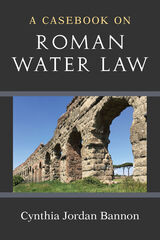 A Casebook on Roman Water Law
Cynthia Jordan Bannon
University of Michigan Press, 2020 The Romans are famous for constructing aqueducts, canals, and dams. But their law is also a lasting, if less visible, monument to their attempts to control water. A Casebook on Roman Water Law presents an analytical collection of Roman sources for water rights. The Romans recognized water as a natural resource, a public good, and an economic commodity, and they grappled with these issues as they developed law to regulate water. Early in their history the Romans crafted laws and institutions to regulate water in both public and private contexts. In later eras they revised and adapted their law to fit changing economic, cultural, and physical environments of an empire that spanned the Mediterranean. Each case documents the role of law in this history, and the study questions engage with key issues in legal and environmental history, ancient and modern.
This casebook aims to cross historical and disciplinary boundaries by making the primary evidence for Roman water rights accessible to students and researchers. Cases are presented in both original Latin and English translation. To prepare for study of the cases, each chapter opens with an overview of its topic while the introduction presents the evidence for water rights and contextualizes them within historical and conceptual frameworks.
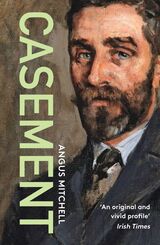 Casement
Angus Mitchell
Haus Publishing, 2026 An illumination of the life of diplomat Roger Casement.
At the time of his execution for treason in 1916, few were aware who Roger Casement was or what he represented. Since then, he has been lauded for his investigations into Belgian brutality in the Congo Free State and human rights abuses in the Peruvian rubber industry, but much else about him has remained obscured behind speculation about his sexuality and secret Irish revolutionary activity while in service of the British Empire. As such, his place in history has been ill-defined and multifarious: his involvement in the waging of war followed by the delicate negotiation of peace; his republicanism perceived variously as an eccentric enthusiasm and as a threat to the British Empire; his contemporary legacy overshadowed by the Black Diaries of disputed legitimacy, detailing alleged liaisons with young men.
In Casement, Angus Mitchell illuminates a life shrouded in mystery, which operated in the conflicting spheres of British foreign diplomacy and Irish revolutionary activity. Considering Casement’s rebellious nature, Mitchell asks if it was motivated as much by his “incorrigible” Irishness as by his exposure of the appalling crimes against humanity that he witnessed in Africa and South America. Most significantly, Casement demonstrates that his legacy cannot be ascribed to just one cause, whether as a critic of global colonialism or as a founding father of the modern Irish nation-state. Casement’s true commitment was to a universal understanding based on humanity, tolerance, and justice.
 Cases and Materials in the Law Merchant
Philip W. Thayer
Harvard University Press It is assumed that the material in this book will be used by students who already have some background in the law of Contracts, some with the impact of the law on individual conduct. The contents of the book are concerned more with the impact of individual conduct on the law; for the history of the particular relationship commonly associated with the law merchant has been in effect a history of the influence on the law of the usages of trade. It points, in one direction, to the technique of merchants in their dealings with one another; and, in the other, to the way in which the usages born of these associations, crystallizing into custom, become transmuted into law. Although there are numerous case-books on Sales, and others on Bills and Notes, this is the first to cover both in one volume. It is distinctive, furthermore, in making use of material from other than Anglo-American sources: it includes several cases from civil law countries as well as translations of their pertinent codes and statutes. A large percentage of the cases are of recent date, so that the book is of more than usual timely interest. Many of the cases are presented in abstracted form, thus making it possible to put nearly twice as many cases in the book as are generally found in volumes of this kind.
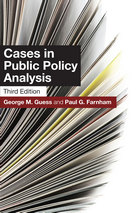 Cases in Public Policy Analysis: Third Edition
George M. Guess and Paul G. Farnham
Georgetown University Press, 2011 Combining the insights of an economist and a political scientist, this new third edition of Cases in Public Policy Analysis offers real world cases to provide students with the institutional and political dimensions of policy problems as well as easily understood principles and methods for analyzing public policies. Guess and Farnham clearly explain such basic tools as problem-identification, forecasting alternatives, cost-effectiveness analysis, and cost-benefit analysis and show how to apply these tools to specific cases. The new edition offers a revised framework for policy analysis, practical guidelines for institutional assessment, and five new action-forcing cases. Up-to-date materials involving complex policy issues, such as education reform, cigarette smoking regulation, air pollution control, public transit capital planning, HIV/AIDS prevention strategies, and prison overcrowding are also included. Bridging the gap between methods and their application in real life, Cases in Public Policy Analysis will be of interest to professors involved with upper-division and graduate-level policy courses, as well as an excellent sourcebook in applied policy training for government practitioners and consultants.
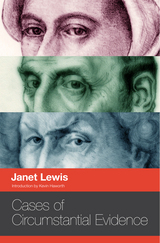 Cases of Circumstantial Evidence
Janet Lewis
Ohio University Press, 2013 This is the first digital version of Cases of Circumstantial Evidence, a collection of three historical novels by noted American writer Janet Lewis. For the first time, these works have been brought together in a single edition, each with a new introduction by Kevin Haworth: The Wife of Martin Guerre
Based on a notorious trial in sixteenth-century France, The Wife of Martin Guerre follows Bertrande de Rois and her lost-and-returned husband through a tale of impersonation, conspiracy, and small-town intrigue. Their fascinating story has also inspired a bestselling historical study and two films, including The Return of Martin Guerre. The Trial of Sören Qvist
Although set in seventeenth-century Denmark, The Trial of Sören Qvist has a contemporary feel and has been praised for its intriguing plot and for Lewis’s powerful writing. In this second novel in the Cases of Circumstantial Evidence, Lewis recounts the story of a murder, an investigation, and a pious town pastor who confesses to the crime, driven perhaps more by a recognition of his own moral flaws than by guilt for the acts of which he stood accused. The Ghost of Monsieur Scarron
The court of Louis XIV and a modest Paris street provide the incongruous settings for this tale of a humble bookbinder, his wife, and the young craftsman who seduces her and blackmails her husband into covering up a terrible crime. This third and last case of circumstantial evidence bristles with character, the smell of blood, and considerable suspense against a backdrop of national political unrest in the cruel and dingy Paris of the seventeenth century.
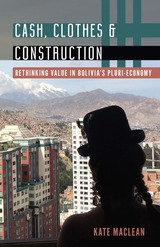 Cash, Clothes, and Construction: Rethinking Value in Bolivia's Pluri-economy
Kate Maclean
University of Minnesota Press, 2023 A groundbreaking feminist perspective on Movimiento al Socialismo (MAS) rule in Bolivia and the country’s radical transformation under Evo Morales
The presidency of Evo Morales in Bolivia (2006–2019) has produced considerable academic scholarship, much of it focused on indigenous social movements or extractivism, and often triumphalist about the successes of Morales’s Movimiento al Socialismo (MAS). Turning a new lens on the movement, Cash, Clothes, and Construction presents the first gender-based analysis of “pluri-economy,” a central pillar of Bolivia’s program under Morales, evaluating the potential of this vision of “an economy where all economies fit” to embrace feminist critiques of capitalism and economic diversity. Based on more than twelve years of empirical research exploring the remarkable transformations in Bolivia since 2006, this book focuses on three sectors—finance, clothing, and construction—in which indigenous women have defied gendered expectations. Kate Maclean presents detailed case studies of women selling secondhand high street clothes from the United States in the vast, peri-urban markets of Bolivian cities; Aymaran designers of new pollera (traditional Andean dress) fashions, one of whom exhibited her collection in New York City; and the powerful and rich chola paceña, whose real estate investments have transformed the cultural maps of La Paz and El Alto. Cash, Clothes, and Construction offers a gendered analysis of the mission of MAS to dismantle neoliberalism and decolonize politics and economy from the perspective of the Indigenous women who have radically transformed Bolivia’s economy from the ground up.
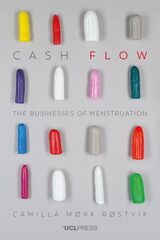 Cash Flow: The Businesses of Menstruation
Camilla Mørk Røstvik
University College London, 2022 Commerce and menstruation from the twentieth century to today.
The menstrual product industry has played a large role in shaping the past hundred years of menstrual culture, including technological innovation, creative advertising, and education in classrooms. How much do we know about this sector and how has it changed in later decades? What constitutes “the industry,” who works in it, and how is it adapting to the current menstrual equity movement?
Cash Flow provides a new academic study of the menstrual corporate landscape that links its twentieth-century origins to the current day. Drawing on a range of previously unexplored archival materials and interviews with industry insiders, each chapter examines one key company and brand: Saba in Norway, Essity in Sweden, Tambrands in the Soviet Union, Procter & Gamble in Britain and Europe, Kimberly-Clark in North America, and start-ups Clue and Thinx. The book provides timely insights into a secretive and largely unexamined corporate world and the ongoing political and industry-wide debate about the cost of menstrual products. Cash Flow will be of interest to a wide range of groups within and outside academia, including scholars in the emerging field of critical menstruation studies and menstrual activists.
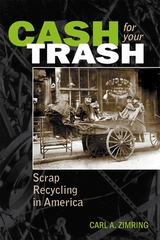 Cash For Your Trash: Scrap Recycling in America
Carl A. Zimring
Rutgers University Press, 2005 Over the past two decades, concern about the environment has brought with it a tremendous increase in recycling in the United States and around the world. For many, it has become not only a civic, but also a moral obligation. Long before our growing levels of waste became an environmental concern, however, recycling was a part of everyday life for many Americans, and for a variety of reasons. From rural peddlers who traded kitchen goods for scrap metal to urban children who gathered rags in exchange for coal, individuals have been finding ways to reuse discarded materials for hundreds of years. In Cash for Your Trash, Carl A. Zimring provides a fascinating history of scrap recycling, from colonial times to the present. Moving beyond the environmental developments that have shaped modern recycling enterprises, Zimring offers a unique cultural and economic portrait of the private businesses that made large-scale recycling possible. Because it was particularly common for immigrants to own or operate a scrap business in the nineteenth century, the history of the industry reveals much about ethnic relationships and inequalities in American cities. Readers are introduced to the scrapworkers, brokers, and entrepreneurs who, like the materials they handled, were often marginalized. Integrating findings from archival, industrial, and demographic records, Cash for Your Trash demonstrates that over the years recycling has served purposes far beyond environmental protection. Its history and evolution reveals notions of Americanism, the immigrant experience, and the development of small business in this country.
 Cash on the Block: The Broken Promise of Reinvestment in Black Urban Neighborhoods
Beryl Satter
Harvard University Press An incisive history of government and corporate failures to infuse capital into Black urban neighborhoods—as well as the organizers and activists who stood up to predatory financial practices.
In the 1960s, conditions in impoverished Black neighborhoods attracted mainstream attention as civil unrest erupted in hundreds of cities across the United States. Finally recognizing the dire effects of racial segregation and urban disinvestment, politicians and corporations joined community activists to call for capital infusion, or reinvestment, in struggling communities. Proposals for reinvestment universally claimed the shared goal of reviving Black neighborhoods, but most of these efforts—some well-meaning, others cynical and predatory—failed to do so.
As renowned historian Beryl Satter shows, private and government interests have long manipulated reinvestment programs to benefit outside business, finance, and real estate professionals. Because these programs focused on corporate tax breaks and federal insurance for lenders, they were easily exploited by private interests to divert funding from poor urban neighborhoods. Meanwhile, community organizers proposed much bolder reinvestment plans that directly confronted institutionally racist practices. They called for a significant reallocation of resources, including government investments in depleted areas and guaranteed incomes for poor people. Activists, often working-class women, also united across racial divides to challenge predatory finance and real estate practices. Yet while they successfully advocated for laws to impede such behaviors, reform legislation often contained loopholes that accommodated racism and corporate greed.
To revive depleted neighborhoods, we must not only challenge institutional racism in finance and real estate but also resist government policies that enable predatory practices. Cash on the Block envisions a future in which reinvestment policy, guided by community leaders, at last benefits those who it is meant to serve.
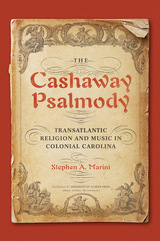 The Cashaway Psalmody: Transatlantic Religion and Music in Colonial Carolina
Stephen A. Marini
University of Illinois Press, 2019 Singing master Durham Hills created The Cashaway Psalmody to give as a wedding present in 1770. A collection of tenor melody parts for 152 tunes and sixty-three texts, the Psalmody is the only surviving tunebook from the colonial-era South and one of the oldest sacred music manuscripts from the Carolinas. It is all the more remarkable for its sophistication: no similar document of the period matches Hills's level of musical expertise, reportorial reach, and calligraphic skill. Stephen A. Marini, discoverer of The Cashaway Psalmody, offers the fascinating story of the tunebook and its many meanings. From its musical, literary, and religious origins in England, he moves on to the life of Durham Hills; how Carolina communities used the book; and the Psalmody's significance in understanding how ritual song—transmitted via transatlantic music, lyrics, and sacred singing—shaped the era's development. Marini also uses close musical and textual analyses to provide a critical study that offers music historians and musicologists valuable insights on the Pslamody and its period. Meticulous in presentation and interdisciplinary in scope, The Cashaway Psalmody unlocks an important source for understanding life in the Lower South in the eighteenth century.
Casina. The Casket Comedy. Curculio. Epidicus. The Two Menaechmuses
Plautus
Harvard University Press, 2011 Funny happenings.
The rollicking comedies of Plautus, who brilliantly adapted Greek plays for Roman audiences ca. 205–184 BC, are the earliest Latin works to survive complete and are cornerstones of the European theatrical tradition from Shakespeare and Molière to modern times. This second volume of a new Loeb edition of all twenty-one of Plautus’ extant comedies presents Casina, Cistellaria, Curculio, Epidicus, and Menaechmi with freshly edited texts, lively modern translations, introductions, and ample explanatory notes.
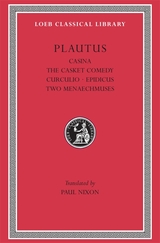 Casina. The Casket Comedy. Curculio. Epidicus. The Two Menaechmuses
Plautus
Harvard University Press Plautus (Titus Maccius), born about 254 BCE at Sarsina in Umbria, went to Rome, engaged in work connected with the stage, lost his money in commerce, then turned to writing comedies.
Twenty-one plays by Plautus have survived (one is incomplete). The basis of all is a free translation from comedies by such writers as Menander, Diphilus, and Philemon. So we have Greek manners of Athens about 300250 BCE transferred to the Roman stage of about 225185, with Greek places, people, and customs, for popular amusement in a Latin city whose own culture was not yet developed and whose manners were more severe. To make his plays live for his audience, Plautus included many Roman details, especially concerning slavery, military affairs, and law, with some invention of his own, notably in management of metres. The resulting mixture is lively, genial and humorous, with good dialogue and vivid style. There are plays of intrigue (Two Bacchises, The Haunted House, Pseudolus); of intrigue with a recognition theme (The Captives, The Carthaginian, Curculio); plays which develop character (The Pot of Gold, Miles Gloriosus); others which turn on mistaken identity (accidental as in the Menaechmi; caused on purpose as in Amphitryon); plays of domestic life (The Merchant, Casina, both unpleasant; Trinummus, Stichus, both pleasant).
The Loeb Classical Library edition of Plautus is in five volumes.
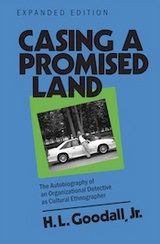 Casing a Promised Land, Expanded Edition: The Autobiography of an Organizational Detective as Cultural Ethnographer
H.L. Goodall, Jr.
Southern Illinois University Press, 1994 H. L. Goodall’s ground-breaking study of what people do with symbols and what symbols do to people explores the lives led by people in organizations. His narratives take on the form of six detective mysteries in which the narrator figures into the plot of the intrigue and then works out its essential patterns.
In the first mystery, "Notes on a Cultural Evolution: The Remaking of a Software Company," Goodall looks at the transition of a Huntsville regional office of a Boston-based computer software company where the lives and social dramas of the participants reflect the current state of high technology. The second essay and perhaps the most insightful, "The Way the World Ends: Inside Star Wars," penetrates the various defenses of the Star Wars command office in Huntsville to discover its secrets and surprises. Goodall shows how media, technology, fear of relationships, and symbolic images of the future unite into the day-to-day operations of people who believe they are responsible for the outer limits of our nation’s defense.
"Lost in Space: The Layers of Illusion Called Adult Space Camp" illustrates how a supposedly innocent theme park invites participation in rituals and ceremonies designed to influence a future generation of taxpayers. In "Articles of Faith," Goodall enters a super mall in Huntsville, noting how shopping centers provide consumers with far more than places to purchase goods and services. "How I Spent My Summer Vacation" finds Goodall back in an academic environment, at a conference of communication scholars, where he demonstrates the difficult task of translating cultural understandings from one context to another. "The Consultant as Organizational Detective" offers the sobering message that real-life mysteries may surprise even the most accomplished sleuth. A concluding chapter, "Notes on Method," and a new autobiographical afterword round out Goodall’s penetrating look at our symbol-making culture.
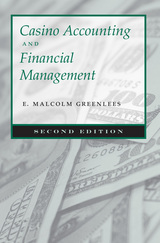 Casino Accounting and Financial Management: Second Edition
E. Malcolm Greenlees
University of Nevada Press, 2008 In this work, author E. Malcolm Greenlees provides detailed information about the role of state governments in the regulation of gaming. He also discusses the dominance of slot machines as the major revenue source in most casinos; he provides information about changes in the types and operation of slot machines, as well as accounting procedures for slot revenues. The book covers every aspect of the financial management of a casino, from the details of licensing and regulation to revenue taxation; the management of slot machines and other gaming devices, table games, and betting operations; revenue flows and internal cash controls; cashiering; accounting; and financial reporting. Casino Accounting and Financial Management has been recognized as the essential manual for gaming industry professionals since its first publication in 1988. This 2008 edition is updated throughout and greatly expands the original text, addressing growth and changes in the casino industry as gaming has spread into new venues both nationwide and internationally, incorporated new games and new technology, and become subject to new management policies and new government regulations.
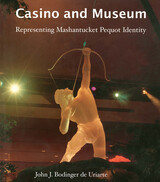 Casino and Museum: Representing Mashantucket Pequot Identity
John J. Bodinger de Uriarte
University of Arizona Press, 2007 The past twenty-five years have seen enormous changes in Native America. One of the most profound expressions of change has been within the Mashantucket Pequot Tribal Nation. The Nation has overcome significant hurdles to establish itself as a potent cultural and economic force highlighted by the Mashantucket Pequot Museum and Research Center and Foxwoods, the largest casino in the Western Hemisphere. In Casino and Museum, John J. Bodinger de Uriarte sees these two main commercial structures of the reservation as mutually supporting industries generating both material and symbolic capital.
To some degree, both institutions offer Native representations yet create different strategies for attracting and engaging visitors. While the casino is crucial as an economic generator, the museum has an important role as the space for authentic Mashantucket Pequot images and narratives. The book’s focus is on how the casino and the museum successfully deploy different strategies to take control of the tribe’s identity, image, and cultural agency.
Photographs in the book provide a view of Mashantucket, allowing the reader to study the spaces of the book’s central arguments. They are a key methodology of the project and offer a non-textual opportunity to navigate the sites as well as one finely focused way to work through the representation and formation of the Native American photographic subject—the powerful popular imagining of Native Americans. Casino and Museum presents a unique understanding of the prodigious role that representation plays in the contemporary poetics and politics of Native America. It is essential reading for scholars of Native American studies, museum studies, cultural studies, and photography.
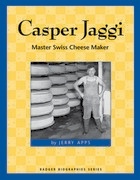 Casper Jaggi: Master Swiss Cheese Maker
Jerry Apps
Wisconsin Historical Society Press, 2008 Have you ever wondered why Swiss cheese has holes? You'll find out in this story about a Swiss cheese maker named Casper Jaggi. Casper Jaggi was only six years old when his father taught him how to make cheese in the Swiss Alps. In 1913, Jaggi left Switzerland in search of new opportunities in the United States. Like many other Swiss, he settled in Green County, Wisconsin, where the rolling hills dotted with grazing cows reminded him of home. And soon, he'd be turning cow's milk into cheese, just as he did in Switzerland.
The book opens the doors to Jaggi's Brodhead Swiss Cheese Factory - largest factory of its kind in Wisconsin in the 1950s. Archival photos help illustrate, step-by-step, the process Jaggi and his workers followed to transform 2,000 pounds of milk in a copper kettle into a 200-pound wheel of Swiss cheese.
Jaggi was one of the many European immigrants who helped establish Wisconsin's reputation for delicious cheese. The artisan cheese makers crafting award-winning cheeses today are continuing this rich tradition in America's Dairyland.
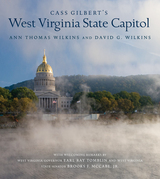 Cass Gilbert's West Virginia State Capitol
Ann Wilkins
West Virginia University Press, 2014 At the turn of the twentieth century, West Virginia was in the throes of its formative years as a state. After more than two decades of alternating its government seat between Wheeling and Charleston and the destruction of the Gothic Revival Capitol in Charleston by fire in 1921, a building commission was formed to create a permanent Capitol that would display the young state’s pride, wealth, and sophistication to the entire nation. To achieve these goals, the legislature approved a budget of more than $6.5 million for the design and construction of this statehouse and the Commission appointed by the Governor hired internationally renowned Cass Gilbert as its architect. After much debate, an impressive site along the shore of the Kanawha River in Charleston was selected as its location. As one of the most influential architects of the early twentieth century, Cass Gilbert is known for structures such as the Woolworth Building, the United States Supreme Court building, and the Minnesota State Capitol. He believed architecture should reflect historic tradition and established social order, and this conservative philosophy is evinced within the classic form and proportions of the West Virginia State Capitol. As one of his final commissions, the West Virginia Capitol, with its golden “dome of majestic proportion,” marble interiors, ornamental reliefs, and rich woodwork, remains a distinguished example of noble simplicity in American architecture. Cass Gilbert’s West Virginia State Capitol narrates the intricate story behind this architectural feat. Its close examination of the design, construction, and execution of this commission not only reveals the social, political, and financial climate of West Virginia during this period but also provides insight into the cultural importance of this public building. As Cass Gilbert’s design process is traced through unpublished documentation, drawings, and letters from several archives, the over one hundred accompanying photographs—many historical and others newly commissioned for this book—divulge the subtle beauty of the Capitol complex. At the same time, an extensive analysis of historical and contemporary illustrations and primary sources further elucidates the architectural value of this structure. With welcomes by West Virginia Governor Earl Ray Tomblin and State Senator Brooks F. McCabe, Jr., a prologue by art historians Bernard Schultz and Mary L. Soldo Schultz, and an epilogue by Chad Proudfoot, this revealing and comprehensive study examines the importance of this often overlooked architectural accomplishment, solidifying its significance as a socio-political symbol as well as its place within the history of American public architecture.
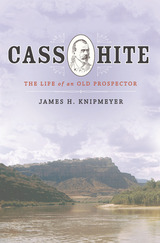 Cass Hite: The Life of an Old Prospector
James H. Knipmeyer
University of Utah Press, 2016 In the late 1800s and early 1900s, Cass Hite was a well-known prospector in the Glen Canyon area of southern Utah. He lived as a recluse yet knew most of the river runners, trekkers, cowboys, and Native Americans that passed through the region. He often wrote to newspapers and was in turn sought out by reporters for his vibrant comments. Hite followed the trail of gold and silver to destinations throughout the West—a time recounted in a memoir he penned in rhyming verse. After his death, his name remained prominent in the region. The tiny hamlet of Hite was an important ferry crossing of the Colorado River (since replaced by a bridge), and the nearby Hite Marina kept the name in the public eye for thousands of boaters.
Despite this notoriety, no one has written a full-length, scholarly account of Hite’s life. This biography fills that void, detailing Hite’s story from his birth in central Illinois in 1845 to his death in Glen Canyon in 1914. It corrects some of the long-accepted stories about Hite and puts others in their proper perspective, while revealing new information. Scores of photographs and excerpts from Hite’s own writing further illuminate this colorful prospector’s life.
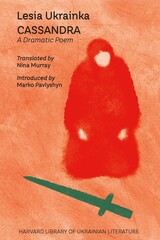 Cassandra: A Dramatic Poem
Lesia Ukrainka
Harvard University Press, 2024 Cassandra, the daughter of King Priam of Troy, is cursed with the gift of true prophecies that are not believed by anyone. She foretells the city’s fall should Paris bring Helen as his wife, as well as the death of several of Troy’s heroes and her family. The classic myth turns into much more in Lesia Ukrainka’s rendering: Cassandra’s prophecies are uttered in highly poetic language—fitting for the genre of the work—and are not believed for that reason, rather than because of Apollo’s curse. Cassandra as poet and as woman are the focal points of the drama.
Cassandra: A Dramatic Poem encapsulates the complexities of Ukrainka’s late works: use of classical mythology and her intertextual practice; intense focus on issues of colonialism and cultural subjugation—and allegorical reading of the asymmetric relationship of Ukrainian and Russian culture; a sharp commentary on patriarchy and the subjugation of women; and the dilemma of the writer-seer who knows the truth and its ominous implications but is powerless to impart that to contemporaries and countrymen.
This strongly autobiographical work commanded a significant critical reception in Ukraine and projects Ukrainka into the new Ukrainian cultural canon. Presented here in a contemporary and sophisticated English translation attuned to psychological nuance, it is sure to attract the attention of the modern-day reader.
The Cassava Transformation: Africa's Best-Kept Secret
Felix I. Nweke
Michigan State University Press, 2002 Cassava is Africa's "poverty fighter" and second most important food crop. This book discusses Cassava's real role and traces research over the past 65 years. The "Cassava transformation" that is now underway in Africa has changed this traditional, reserve crop to a high-yield cash crop. However, Cassava is being neglected by governments and donor agencies because of myths and half-truths about its nutritional value and role in farm systems.
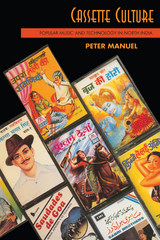 Cassette Culture: Popular Music and Technology in North India
Peter Manuel
University of Chicago Press, 1993 In Cassette Culture, Peter Manuel tells how a new mass medium—the portable cassette player—caused a major upheaval in popular culture in the world's second-largest country. The advent of cassette technology in the 1980s transformed India's popular music industry from the virtual monopoly of a single multinational LP manufacturer to a free-for-all among hundreds of local cassette producers. The result was a revolution in the quantity, quality, and variety of Indian popular music and its patterns of dissemination and consumption.
Manuel shows that the cassette revolution, however, has brought new contradictions and problems to Indian culture. While inexpensive cassettes revitalized local subcultures and community values throughout the subcontinent, they were also a vehicle for regional and political factionalism, new forms of commercial vulgarity, and, disturbingly, the most provocative sorts of hate-mongering and religious chauvinism.
Cassette Culture is the first scholarly account of Indian popular music and the first case study of a technological revolution now occurring throughout the world. It will be an essential resource for anyone interested in modern India, communications theory, world popular music, or contemporary global culture.
Cassian's Prayer for the 21st Century
John Levko
University of Scranton Press, 2000 Though Saint John Cassian lived and wrote centuries ago (c. 360-435), his spiritual writings continue to be important to contemporary church life and personal spirituality. The rich religious traditions of Eastern Christianity influenced the course and development of monasticism in the West. Today, all Christians can, through Saint Cassian's focus on prayer, reach a higher state.
The Cassique of Kiawah: A Colonial Romance
William Gilmore Simms
University of Arkansas Press, 2003 First drafted as a novel called Oyster Point when the author was only eighteen, The Cassique of Kiawah was finally published thirty-five years later, in 1859, at the height of William Gilmore Simms’s career. It is a history through fiction of early Charleston, South Carolina, and completed Simms’s series of Revolutionary War novels. Through satire and realism he portrays the charm and the corruption of late seventeenth-century Charleston society, and he contrasts the quiet majesty of the wilderness with the violence of man. The book was widely reviewed and highly praised, and it confirmed Simms’s position as the nation’s best-known novelist.
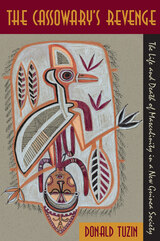 The Cassowary's Revenge: The Life and Death of Masculinity in a New Guinea Society
Donald Tuzin
University of Chicago Press, 1997 Donald Tuzin first studied the New Guinea village of Ilahita in 1972. When he returned many years later, he arrived in the aftermath of a startling event: the village’s men voluntarily destroyed their secret cult that had allowed them to dominate women for generations. The cult’s collapse indicated nothing less than the death of masculinity, and Tuzin examines the labyrinth of motives behind this improbable, self-devastating act. The villagers' mythic tradition provided a basis for this revenge of Woman upon the dominion of Man, and, remarkably, Tuzin himself became a principal figure in its narratives. The return of the magic-bearing "youngest brother" from America had been prophesied, and the villagers believed that Tuzin’s return "from the dead" signified a further need to destroy masculine traditions.
The Cassowary's Revenge is an intimate account of how Ilahita’s men and women think, emote, dream, and explain themselves. Tuzin also explores how the death of masculinity in a remote society raises disturbing implications for gender relations in our own society. In this light Tuzin's book is about men and women in search of how to value one another, and in today's world there is no theme more universal or timely.
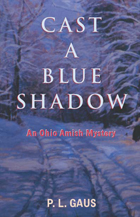 Cast a Blue Shadow: An Amish Country Mystery
P. L. Gaus
Ohio University Press, 2003 In Cast a Blue Shadow, his fourth Amish mystery, P. L. Gaus spins a suspenseful tale of power, pride, and tested faith. As always, Gaus explores the threshold of culture and faith among the Amish sects and their English neighbors, combining it here with the political divisions unique to the academic world. After an early winter blizzard in Holmes County, Ohio, a wealthy socialite is found murdered in her mansion. That same morning, a troubled student, Martha Lehman, turns up at her psychiatrist’s office, bloody and unable to speak. Professor Michael Branden and Sheriff Bruce Robertson begin an investigation that threatens to tear Millersburg College apart. Mute for many years as a child, Martha is once again unable (or unwilling) to speak. As Branden wrestles with the murder of the college’s leading benefactor, the real story of Martha Lehman begins to emerge—born Amish, converted to Mennonite, and drawn to the “English” world for the worst of reasons. This new edition of Cast a Blue Shadow features an exclusive interview with the author, reading group materials, and a detailed map and driving guide to Holmes County, Ohio, with everything one needs to visit the iconic scenes depicted in the story.
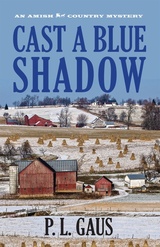 Cast a Blue Shadow: An Amish Country Mystery
P. L. Gaus
Ohio University Press, 2003 In Cast a Blue Shadow, his fourth Amish mystery, P. L. Gaus spins a suspenseful tale of power, pride, and tested faith. As always, Gaus explores the threshold of culture and faith among the Amish sects and their English neighbors, combining it here with the political divisions unique to the academic world. After an early winter blizzard in Holmes County, Ohio, a wealthy socialite is found murdered in her mansion. That same morning, a troubled student, Martha Lehman, turns up at her psychiatrist’s office, bloody and unable to speak. Professor Michael Branden and Sheriff Bruce Robertson begin an investigation that threatens to tear Millersburg College apart. Mute for many years as a child, Martha is once again unable (or unwilling) to speak. As Branden wrestles with the murder of the college’s leading benefactor, the real story of Martha Lehman begins to emerge—born Amish, converted to Mennonite, and drawn to the “English” world for the worst of reasons. This new edition of Cast a Blue Shadow features an exclusive interview with the author, reading group materials, and a detailed map and driving guide to Holmes County, Ohio, with everything one needs to visit the iconic scenes depicted in the story.
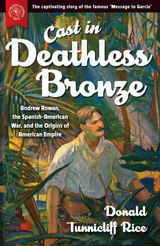 Cast in Deathless Bronze: Andrew Rowan, the Spanish-American War, and the Origins of American Empire
Donald Tunnicliff Rice
West Virginia University Press, 2016 In 1898, when war with Spain seemed inevitable, Andrew Summers Rowan, an American army lieutenant from West Virginia, was sent on a secret mission to Cuba. He was to meet with General Calixto García, a leader of the Cuban rebels, in order to gather information for a U.S. invasion. Months later, after the war was fought and won, a flamboyant entrepreneur named Elbert Hubbard wrote an account of Rowan’s mission titled “A Message to García.” It sold millions of copies, and Rowan became the equivalent of a modern-day rock star. His fame resulted in hundreds of magazine and newspaper articles, radio shows, and two movies. Even today he is held up as an exemplar of bravery and loyalty. The problem is that nothing Hubbard wrote about Rowan was true.
Donald Tunnicliff Rice reveals the facts behind the story of “A Message to García” while using Rowan’s biography as a window into the history of the Spanish-American War, the Philippine War, and the Moro Rebellion. The result is a compellingly written narrative containing many details never before published in any form, and also an accessible perspective on American diplomatic and military history in the late nineteenth and early twentieth centuries.
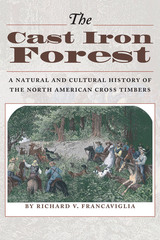 The Cast Iron Forest: A Natural and Cultural History of the North American Cross Timbers
By Richard V. Francaviglia
University of Texas Press, 2000 Winner, Friends of the Dallas Public Library Award, Texas Institute of Letters, 2001 A complex mosaic of post oak and blackjack oak forests interspersed with prairies, the Cross Timbers covers a north-south belt of southern Kansas, eastern Oklahoma, and North Central Texas. Home to Native Americans over several thousand years, the Cross Timbers became a barrier to westward expansion in the nineteenth century, until roads and railroads opened it up to farmers and ranchers, coal miners, and modern city developers, all of whom changed its character in far-reaching ways. This landmark book fully describes the natural environment of the Cross Timbers and the role that people have played in transforming the region. Richard Francaviglia opens with a natural history that discusses the region's geography and geology, vegetation, and climate. He then traces the interaction of people and the landscape, from the earliest Native American inhabitants and European explorers to the developers and residents of today's ever-expanding cities and suburbs. Many historical and contemporary maps and photographs illustrate the text.
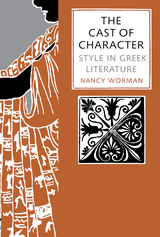 The Cast of Character: Style in Greek Literature
By Nancy Worman
University of Texas Press, 2003 Well before Aristotle's Rhetoric elucidated the elements of verbal style that give writing its persuasive power, Greek poets and prose authors understood the importance of style in creating compelling characters to engage an audience. And because their works were composed in predominantly oral settings, their sense of style included not only the characters' manner of speaking, but also their appearance and deportment. From Homeric epic to classical tragedy and oratory, verbal and visual cues work hand-in-hand to create distinctive styles for literary characters. In this book, Nancy Worman investigates the development and evolution of ideas about style in archaic and classical literature through a study of representations of Odysseus and Helen. She demonstrates that, as liars and imitators, pleasing storytellers, and adept users of costume, these two figures are especially skillful manipulators of style. In tracing the way literary representations of them changed through time—from Homer's positive portrayal of their subtle self-presentations to the sharply polarized portrayals of these same subtleties in classical tragedy and oratory—Worman also uncovers a nascent awareness among the Greek writers that style may be used not only to persuade but also to distract and deceive.
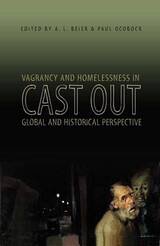 Cast Out: Vagrancy and Homelessness in Global and Historical Perspective
A. L. Beier
Ohio University Press, 2008 Throughout history, those arrested for vagrancy have generally been poor men and women, often young, able-bodied, unemployed, and homeless. Most histories of vagrancy have focused on the European and American experiences. Cast Out: Vagrancy and Homelessness in Global and Historical Perspective is the first book to consider the shared global heritage of vagrancy laws, homelessness, and the historical processes they accompanied. In this ambitious collection, vagrancy and homelessness are used to examine a vast array of phenomena, from the migration of labor to social and governmental responses to poverty through charity, welfare, and prosecution. The essays in Cast Out represent the best scholarship on these subjects and include discussions of the lives of the underclass, strategies for surviving and escaping poverty, the criminalization of poverty by the state, the rise of welfare and development programs, the relationship between imperial powers and colonized peoples, and the struggle to achieve independence after colonial rule. By juxtaposing these histories, the authors explore vagrancy as a common response to poverty, labor dislocation, and changing social norms, as well as how this strategy changed over time and adapted to regional peculiarities. Part of a growing literature on world history, Cast Out offers fresh perspectives and new research in fields that have yet to fully investigate vagrancy and homelessness. This book by leading scholars in the field is for policy makers, as well as for courses on poverty, homelessness, and world history. Contributors:
Richard B. Allen
David Arnold
A. L. Beier
Andrew Burton
Vincent DiGirolamo
Andrew A. Gentes
Robert Gordon
Frank Tobias Higbie
Thomas H. Holloway
Abby Margolis
Paul Ocobock
Aminda M. Smith
Linda Woodbridge
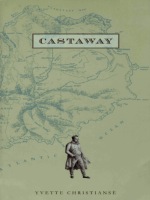 Castaway
Yvette Christiansë
Duke University Press, 1999 In Castaway Yvette Christiansë presents an epic yet fragmented poetic story set off the coast of Africa on the island of St. Helena: Napoleon Bonaparte’s final place of exile, a port of call for the slave trade, and birthplace of the poet’s grandmother. Amid echoes of racialized identity and issues of displacement, the poems in Castaway speak with a multiplicity of voices—from Ferñao Lopez (the island’s first exile) and Napoleon to that of a contemporary black woman. Castaway is simultaneously a song of discovery, an anthem of conquest, and a tortured lamentation of exiles and slaves.
Instead of offering a linear narrative, Christiansë renders the poems as if they were emerging from the pages of imaginary books, documents now disrupted and scattered. An emperor’s point of view is juxtaposed with the perspectives of various explorers, sailors, and unknown slaves until finally they all open upon the book’s “castaway,” the authorial female voice that negotiates a way to write about love and desire after centuries of oppression and exploitation.
Daring and sophisticated, Castaway challenges and captivates the reader with not only its lyrical richness and conceptual depth but also its implicit and haunting reflections on diaspora and postcolonialism. It will be highly regarded by readers and writers of poetry and will appeal to those engaged with issues of race, gender, exile, multiculturalism, colonialism, and history.
Caste and Class in a Southern Town
John Dollard
University of Wisconsin Press, 1989 An extraordinary powerful exposition of social patterns in a small town, Caste and Class in a Southern Town has become a benchmark in social science methodology and a classic in American studies. Now fifty years after its original publication, John Dollard’s most famous work offers timeless insights and remains essential to those interested in race-related social issues.
In 1937, W. E. B. Du Bois observed, "Dr. Dollard’s study is one of the most interesting and penetrating that has been made concerning the South and is marked by courage and real insight. . . . Dr. Dollard’s book marks a distinct advance in the study of the Southern scene."
 Caste, Country, and Creed: Struggles for Social Justice in the Contemporary Indian Diaspora
Nisha Thapliyal
Rutgers University Press, 2026 What happens when ancient systems of oppression travel across oceans? How do Indian diaspora communities across five nations challenge centuries-old systems of oppression while building new forms of solidarity? Caste, Country, and Creed:Struggles for Social Justice in the Contemporary Indian Diaspora takes readers inside the dynamic world of contemporary social justice activism spanning Aotearoa New Zealand, Australia, Canada, the United States, and the United Kingdom. This groundbreaking collection brings together the voices of artists, activists, and scholar-activists who are reshaping conversations about caste discrimination, Islamophobia, and Hindu nationalism beyond India's borders. Through intimate first-person accounts and critical reflections, contributors reveal how diaspora activists are creating powerful counter-narratives and mobilizing collective resistance across local and transnational networks. The book documents the lived realities of organizing—the values, knowledge traditions, and pivotal moments that spark political protest. Caste, Country, and Creed shows how activists construct alternative knowledge to dissent, build solidarity, and inspire political participation. Contributors offer nuanced insights into the complex relationships and power dynamics that sustain collective action for social justice in the Indian diaspora. For copyright reasons this edition is not for sale in India.
 The Caste of Merit: Engineering Education in India
Ajantha Subramanian
Harvard University Press, 2019 How the language of “merit” makes caste privilege invisible in contemporary India.
Just as Americans least disadvantaged by racism are most likely to endorse their country as post‐racial, Indians who have benefited from their upper-caste affiliation rush to declare their country post‐caste. In The Caste of Merit, Ajantha Subramanian challenges this comfortable assumption by illuminating the controversial relationships among technical education, caste formation, and economic stratification in modern India. Through in-depth study of the elite Indian Institutes of Technology (IITs)—widely seen as symbols of national promise—she reveals the continued workings of upper-caste privilege within the most modern institutions.
Caste has not disappeared in India but instead acquired a disturbing invisibility—at least when it comes to the privileged. Only the lower castes invoke their affiliation in the political arena, to claim resources from the state. The upper castes discard such claims as backward, embarrassing, and unfair to those who have earned their position through hard work and talent. Focusing on a long history of debates surrounding access to engineering education, Subramanian argues that such defenses of merit are themselves expressions of caste privilege. The case of the IITs shows how this ideal of meritocracy serves the reproduction of inequality, ensuring that social stratification remains endemic to contemporary democracies.
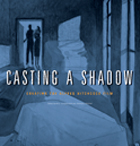 Casting a Shadow: Creating the Alfred Hitchcock Film
Edited by Will Schmenner and Corinne Granof
Northwestern University Press, 2007 Alfred Hitchcock is often held up as the prime example of the one-man filmmaker, conceiving and controlling all aspects of his films’ development—the archetype of genius over collaboration. An exhibition at the Block Museum of Art at Northwestern University, however, put the lie to Hitchcock-as-auteur, presenting more than seventy-five sketches, designs, watercolors, paintings, and storyboards that, together, examine Hitchcock’s very collaborative filmmaking process. The four essays in this collection were written to accompany the exhibition and delve further into Hitchcock’s contributions to the collaborative process of art in film.
Scott Curtis considers the four functions of Hitchcock’s sketches and storyboards and how they undermine the impression of Hitchcock as a lone artist. Tom Gunning examines the visual vocabulary and cultural weight of Hitchcock’s movies. Bill Krohn focuses sharply on the film I Confess, tracking its making over a very cooperative path.
Finally, Jan Olsson draws on the television series, Alfred Hitchcock Presents, to show the ways that collaboration contributes to the formation of his well known public persona. Anchored by editor Will Schmenner’s introduction, this book represents an important contribution to Hitchcock scholarship and a provocative glimpse at his unsung strength as a collaborative artist.
 Castings: Monuments and Monumentality in Poems by Elizabeth Bishop, Robert Lowell, James Merrill, Derek Walcott, and Seamus Heaney
Guy Rotella
Vanderbilt University Press, 2004 Whether looming over public squares or dotting old battlefields, monuments certify a culture's present by securing its past and pledging its future. They embody exemplary persons or events and the shared ideals they stood for, prompting an obligation to keep those ideals standing now and forever. But monuments also exaggerate the staying power of civilizations and of art. In the second half of the twentieth century, postmodern critics often decried monuments not only for their pretensions and stiffness but also for their supposed role in perpetuating oppressive cultural conventions. Even so, many artists and thinkers of the same period tried to reimagine monuments in ways that were humbler and more provisional but still culturally confirming. In Castings, Guy Rotella examines the work of five important poets who have engaged in that effort: Elizabeth Bishop, Robert Lowell, James Merrill, Derek Walcott, and Seamus Heaney. Considering their wider careers as well as particular poems--including Bishop's "The Monument," Lowell's "For the Union Dead," Merrill's "Bronze," Walcott's "The Sea Is History," and Heaney's "In Memoriam Francis Ledwidge"--Rotella argues that these writers are less concerned with defending or condemning monuments than with pursuing ancient and current debates about the political, aesthetic, and broadly cultural issues that monuments condense. Among these concerns are the competing claims of life and art, persistence and change, meaning and meaninglessness, the self and society, and the governing and the governed. Original and provocative, Rotella's readings will make us ponder how the human impulse to build to last, to reify our culturally derived and ideologically driven faiths, might coexist with those other creeds of our place and time: relativism, multiculuralism, and diversity.
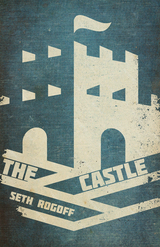 The Castle: A Novel
Seth Rogoff
University of Alabama Press, 2024 A fictional return to the unsettling world of Franz Kafka’s iconic unfinished novel, The Castle. Seth Rogoff's masterful and mesmerizing novel, The Castle, draws inspiration from the enigmatic and incomplete final sentence of Franz Kafka's influential work of the same title. Follow renowned translator Sy Kirschbaum as he finds his way into the deserted landscape of Kafka’s world where the village of Z. lies eerily silent. The inhabitants vanished like phantoms leaving only remnants of their lives. From these fragments, Kirschbaum pieces together a vision of a world in crisis triggered by the arrival of a stranger named K. To unravel this mystery, not just for the sake of the vanished village of Z. but for the world beyond, Kirschbaum is compelled to venture where K. could not—the deepest core of the castle. The Castle is built upon lost documents, forgotten stories, and imagined histories. Unbound by the constraints of an authoritarian and doomed reality, Kirschbaum embarks on an extraordinary journey, seeking meaning through the fertile ground of imagination and embracing the inherent paradox of existence.
 Castle and Cathedral: Longing for the Sacred in a Skeptical Age
Bruce R. Berglund
Central European University Press, 2017 This book takes a new approach to interwar Prague by addressing religion as an integral part of the city's cultural history. Berglund views Prague's cultural history in the broader context of religious change and secularization in 20th-century Europe. Based on detailed knowledge of sources, the monograph explores the interdisciplinary linkages between politics, architecture and theology in the building of symbolism and a "new mythology" of the first Czechoslovak republic (1918-1938). Berglunds text provides an important service for understanding both Czech history as well as current Czech political debate. The author's method can be characterized as culture history, able to connect several disciplines, emphasizing common topic (religion, politics, symbolics). Modern Czech elites, superficially characterized as "ateistic", appears in a new light to be deeply religious, a transition from more traditional, (mostly) Catholic religiosity, to a concept of a new, modern, ethical religion. The study incorporates biographical research, focusing on three principal characters: Tomás Garrigue Masaryk, Czechoslovakia's first president; his daughter Alice Garrigue Masaryková, founding director of the Czechoslovak Red Cross; and Joze Plecnik, the Slovenian architect who directed the renovations of Prague Castle.
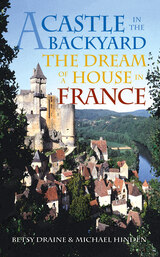 A Castle in the Backyard: The Dream of a House in France
Betsy Draine and Michael Hinden
University of Wisconsin Press, 2006 In one of the most beautiful river valleys in Europe, in the region known as Périgord in southwest France, castles crown the hills, and the surrounding villages seem carved all of a piece out of the local stone. In 1985, in the shadow of one of these medieval castles, Betsy Draine and Michael Hinden fell in love with a small stone house that became their summer home.
Like any romance, this one has had its ups and downs, and Betsy and Michael chart its course in this delightful memoir. They offer an intimate glimpse of a region little known to Americans—the Dordogne valley, its castles and prehistoric art, its walking trails and earthy cuisine—and describe the charms and mishaps of setting up housekeeping thousands of miles from home.
Along with the region’s terrain and culture, A Castle in the Backyard introduces us to the people of Périgord—the castle’s proprietor, the village children, the gossipy real-estate agent, the rascally mason, and the ninety-year-old widow with a tale of heartbreak. A celebration of a place and its people, the book also reflects on the future of historic Périgord as tourism and development pose a challenge to its graceful way of life.
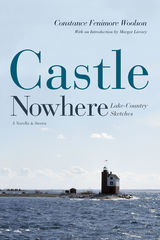 Castle Nowhere: Lake-Country Sketches
Constance Fenimore Woolson
University of Michigan Press, 2004 Castle Nowhere is Constance Woolson's collection of stories set for the most part in the Great Lakes, in particular northern Lake Michigan and Lake Huron near Detroit. Several themes inhabit Woolson's writing: an environmental consciousness and concern with landscapes; an awareness of the complexities of race; and an abidingly careful eye for the shallowness that sometimes accompanies wealth or social pretensions. She also had a unique perspective as a woman who pioneered the use of controversial subjects---such as unrequited or misplaced passion---and methods in fiction during a time that valorized domesticity. As Margot Livesey notes in her introduction, reading about thwarted love is only one of the pleasures to be found in Castle Nowhere. "The majority of these stories are set in remote areas on the shores of Lake Michigan, which Woolson evokes with great vividness and beauty while always remaining keenly aware that beauty in no way mitigates hardship. As a writer, she was nearly always looking over her shoulder, and many, if not all, of these stories were written at a time when she no longer visited the Lake and her beloved Mackinac Island." Contemporary readers will find a curiously modern atmosphere in Woolson's stories, as well as a distinct regional flavor in her careful renderings of the Great Lakes landscape. As such, Castle Nowhere represents a rare woman's voice in literature of its period and setting. Constance Fenimore Woolson (1840-1894) was born in New Hampshire and moved to Cleveland shortly thereafter. She spent time on Mackinac Island, Michigan, then traveled to Florida before moving to Europe. Much of her time there was spent in Italy. She died in Venice in 1894. Novelist Margot Livesey is the author of Eva Moves the Furniture and Homework.
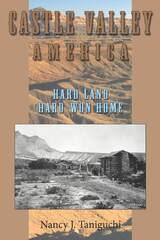 Castle Valley America: Hard Land, Hard-won Home
Nancy Taniguchi
Utah State University Press, 2004 This is American history told through the stories of an atypical, for Utah, region. Castle Valley is roughly conterminous with two counties, Carbon and Emery, which together formed a rural, industrial enclave in a mostly desert environment behind the mountain range that borders Utah's principal corridor of settlement. In Castle Valley, coal mining and the railroad attracted diverse, multiethnic communities and a fair share of historic characters, from Butch Cassidy, who stole its largest payroll, to Mother Jones, who helped organize its workers against its mining companies. Among the last major segments of the state to be settled, it was also a generally poor region that stretched the capabilities of people to scratch a living from a harsh landscape. The people of Castle Valley experienced complex, unusual combinations of both social cohesion and conflict, but they struggled through poverty, labor disputes, major mining disasters, and other challenges to build communities whose stories reflected the historical course of the nation as a whole. In order to convey her subject's both unique and representative qualities, Nancy Taniguchi has written an epic history that is not just local history, but American history written locally. Nancy J. Taniguchi, who lived for thirteen years in Castle Valley and was previously on the faculty of the College of Eastern Utah in Price, is professor of history at California State University, Stanislaus. She is the author of numerous published articles in mining, legal, women's, western, and Utah history and of one book, Necessary Fraud: Progressive Reform
and Utah Coal.
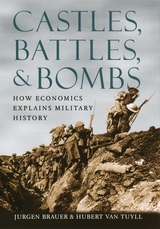 Castles, Battles, and Bombs: How Economics Explains Military History
Jurgen Brauer and Hubert van Tuyll
University of Chicago Press, 2008 Castles, Battles, and Bombs reconsiders key episodes of military history from the point of view of economics—with dramatically insightful results. For example, when looked at as a question of sheer cost, the building of castles in the High Middle Ages seems almost inevitable: though stunningly expensive, a strong castle was far cheaper to maintain than a standing army. The authors also reexamine the strategic bombing of Germany in World War II and provide new insights into France’s decision to develop nuclear weapons. Drawing on these examples and more, Brauer and Van Tuyll suggest lessons for today’s military, from counterterrorist strategy and military manpower planning to the use of private military companies in Afghanistan and Iraq. "In bringing economics into assessments of military history, [the authors] also bring illumination. . . . [The authors] turn their interdisciplinary lens on the mercenary arrangements of Renaissance Italy; the wars of Marlborough, Frederick the Great, and Napoleon; Grant's campaigns in the Civil War; and the strategic bombings of World War II. The results are invariably stimulating."—Martin Walker, Wilson Quarterly "This study is serious, creative, important. As an economist I am happy to see economics so professionally applied to illuminate major decisions in the history of warfare."—Thomas C. Schelling, Winner of the 2005 Nobel Prize in Economics
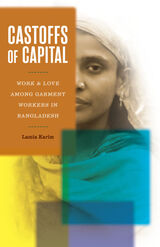 Castoffs of Capital: Work and Love among Garment Workers in Bangladesh
Lamia Karim
University of Minnesota Press, 2022 FINALIST FOR THE GREGORY BATESON PRIZE FROM THE AMERICAN ANTHROPOLOGICAL ASSOCIATION
Dispelling stereotypes about garment workers in the global apparel industry
Castoffs of Capital examines how female garment workers experience their work and personal lives within the stranglehold of global capital. Drawing on fieldwork in Bangladesh, anthropologist Lamia Karim focuses attention onto the lives of older women aged out of factory work, heretofore largely ignored, thereby introducing a new dimension to the understanding of a female-headed workforce that today numbers around four million in Bangladesh. Bringing a feminist labor studies lens, Castoffs of Capital foregrounds these women not only as workers but as mothers, wives, sisters, lovers, friends, and political agents. Focusing on relations among work, gender, and global capital’s targeting of poor women to advance its market penetration, Karim shows how women navigate these spaces by adopting new subject formations. She locates these women’s aspirations for the “good life” not only in material comforts but also in their longings for love and sexual fulfillment that help them momentarily forget the precarity of their existence under the shadow of capital. Through richly detailed ethnographic studies, this innovative and beautifully written book examines the making and unmaking of these women’s wants and desires, loves and tribulations, hopes and despairs, and triumphs and struggles.
 The Casual: Downplaying Art Since California Conceptualism
Jacob Stewart-Halevy
University of Chicago Press, 2026 Considers the enduring legacy of California Conceptualism, known for its lax approaches to creating, writing about, and exhibiting art.
Moving away from making objects, and turning instead to staging scenes, the artists associated with California Conceptualism—including Eleanor Antin, John Baldessari, David Lamelas, Tony Ramos, Ilene Segalove, and William Wegman—behaved indifferently toward their art, denied making it and knowing what it was about, and displayed a lack of concern for its future. Their casual attitude and aesthetic transformed relationships between artists, critics, and viewers, separating those who could recognize these practices from those who could not.
Contemporary artists have continued this trajectory, finding new ways to act casually through their “stance.” In the humanities, this term is often taken to mean the beliefs, values, and intentions of authors, and it has offered a useful way to think about how artists position themselves toward their work and audiences. Jacob Stewart-Halevy builds on recent social theory to show how artists, critics, and other members of the art world wield stance to make sense of artworks and their social circumstances, arguing that, through the rise of conceptual art, stance has come to supplement—and in some cases replace—the aesthetic quality of artworks.
 Casual Groups of Monkeys and Men: Stochastic Models of Elemental Social Systems
Joel E. Cohen
Harvard University Press, 1971 When many individuals aggregate and no special organization is imposed, casual social groups form among monkeys in tree tops and among human beings on sidewalks, beaches, and playgrounds. Joel Cohen shows that previously existing probabilistic models do not describe the details of available data on the sizes of such casual groups. He proposes a new family of models, called linear one-step transition (LOST) models, which predict observed equilibrium group size distributions, and also describe the dynamics of systems of social groups.
For the first time, he presents recorded observations of the dynamics of group formation and dissolution among human children in free play. These observations are consistent with the dynamics assumed by the LOST models. Such models suggest generalizations that may apply to epidemiology, the sociology of rumors, and traffic control. Within biology, this approach offers ways of linking the behavior of individuals with the population ecology of a species.
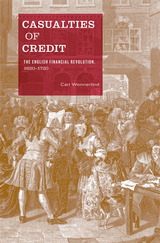 Casualties of Credit: The English Financial Revolution, 1620–1720
Carl Wennerlind
Harvard University Press, 2011 Modern credit, developed during the financial revolution of 1620–1720, laid the foundation for England’s political, military, and economic dominance in the eighteenth century. Possessed of a generally circulating credit currency, a modern national debt, and sophisticated financial markets, England developed a fiscal–military state that instilled fear in its foes and facilitated the first industrial revolution. Yet a number of casualties followed in the wake of this new system of credit. Not only was it precarious and prone to accidents, but it depended on trust, public opinion, and ultimately violence.
Carl Wennerlind reconstructs the intellectual context within which the financial revolution was conceived. He traces how the discourse on credit evolved and responded to the Glorious Revolution, the Scientific Revolution, the founding of the Bank of England, the Great Recoinage, armed conflicts with Louis XIV, the Whig–Tory party wars, the formation of the public sphere, and England’s expanded role in the slave trade. Debates about credit engaged some of London’s most prominent turn-of-the-century intellectuals, including Daniel Defoe, John Locke, Isaac Newton, Jonathan Swift and Christopher Wren. Wennerlind guides us through these conversations, toward an understanding of how contemporaries viewed the precariousness of credit and the role of violence—war, enslavement, and executions—in the safeguarding of trust.
Casualty Reports: Poems
Martha Collins
University of Pittsburgh Press, 2022 Stylistically innovative, deeply moving, carefully researched, Martha Collins’s eleventh volume of poetry combines her well-known attention to social issues with the elegiac mode of her previous book. She focuses here on race, gun violence, recent wars, and, in an extended sequence, the history of coal—first as her ancestors mined it, then from its geological origins to our ecologically threatened present. Casualty Reports is both indictment and lament, a work that speaks forcefully to our troubled history and our present times.
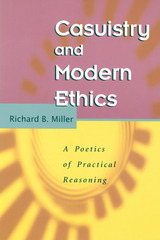 Casuistry and Modern Ethics: A Poetics of Practical Reasoning
Richard B. Miller
University of Chicago Press, 1996 Did the Gulf War defend moral principle or Western oil interests? Is violent pornography an act of free speech or an act of violence against women? In Casuistry and Modern Ethics, Richard B. Miller sheds new light on the potential of casuistry—case-based reasoning—for resolving these and other questions of conscience raised by the practical quandaries of modern life.
Rejecting the packaging of moral experience within simple descriptions and inflexible principles, Miller argues instead for identifying and making sense of the ethically salient features of individual cases. Because this practical approach must cope with a diverse array of experiences, Miller draws on a wide variety of diagnostic tools from such fields as philosophy of science, legal reasoning, theology, literary theory, hermeneutics, and moral philosophy.
Opening new avenues for practical reasoning, Miller's interdisciplinary work will challenge scholars who are interested in the intersections of ethics and political philosophy, cultural criticism, and debates about method in religion and morality.
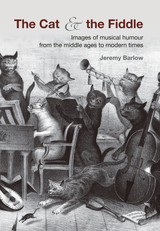 The Cat and the Fiddle: Images of Musical Humour from the Middle Ages to Modern Times
Jeremy Barlow
Bodleian Library Publishing, 2005
In The Cat and the Fiddle, Jeremy Barlow explores 700 years of musical humor, a topsy-turvy world in which monkeys fiddle and pigs play the bagpipes. It is a vision of chaos and devilry as depicted in a variety of sources—the illuminated borders of medieval manuscripts, eighteenth-century prints of urban life, and even the illustrations of children's books.
Barlow reveals the shifting meanings behind such images, as they were often symptomatic of larger cultural trend such as rapid industrialization and urbanization, an emerging class system, and the moral movements of the late nineteenth century. As he compellingly argues, the development of the printing press, the popular spectacle of public concerts, and the rise of new political uses for music all played a critical role in musical history and were distinctly evident in images of musical humor.
The archives of Oxford's Bodleian Library provided a rich supply of previously unpublished material for Barlow's research. With full-color images throughout, The Cat and the Fiddle will be a delight for scholars of art and political history as well as lovers of music everywhere.
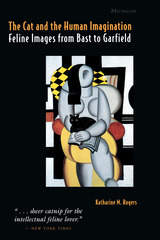 The Cat and the Human Imagination: Feline Images from Bast to Garfield
Katharine M. Rogers
University of Michigan Press, 2001 The Cat and the Human Imagination is a fascinating historical survey of the changing cultural attitudes towards cats and the myriad ways that they have been depicted in literature and art. Feline images have permeated civilization since the time of the ancient Egyptians, and during this time the status of the cat has changed dramatically. The book examines the changing images-- fertility goddess, sly little predator, agent of Satan, avenging witness, aristocrat, friend, spirit of the home, bloodthirsty killer, seductive female--and relates them to the contexts in which they arose. It also analyzes how human attitudes towards cats seem to have evolved in parallel with attitudes towards animals, towards authority, and towards gender.
Western literature and visual art have reflected this change, developing from bare sketches to richly varied expressions of feline personality and human interaction with cats. Katharine M. Rogers seeks out the cats who make appearances in an impressive range of literary and artistic works, providing the first critical look at the symbolic functioning of cat characters in Poe's "The Black Cat," Dickens's Bleak House, and Zola's Therese Raquin, among other literary works. The historical and artistic range covered is impressive, creating a rich compendium that is the ideal book for the cat lover seeking a refreshingly substantial and scholarly work about this fascinating animal.
"This book is a classic-- something every cat-loving intellectual will have to own. (No one, of course, ever really owns a cat--but everyone should own this book.) It's the kind of book you want to quote from at the vet's, or cocktail parties, or whenever you get the urge to convert a dog lover to the true faith." --Emily Toth, Louisiana State University
Katharine M. Rogers is Professor Emerita of English, City University of New York. Her previous books include Feminism in Eighteenth-Century England and Frances Burney: The World of "Female Difficulties."
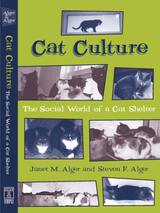 Cat Culture: The Social World Of A Cat Shelter
Janet M. Alger and Steven F. Alger
Temple University Press, 2002 Even people who live with cats and have good reason to know better insist that cats are aloof and uninterested in relating to humans. Janet and Steven Alger contend that the anti-social cat is a myth; cats form close bonds with humans and with each other. In the potentially chaotic environment of a shelter that houses dozens of uncaged cats, they reveal a sense of self and build a culture—a shared set of rules, roles, and expectations that organizes their world and assimilates newcomers.As volunteers in a local cat shelter for eleven years, the Algers came to realize that despite the frequency of new arrivals and adoptions, the social world of the shelter remained quite stable and pacific. They saw even feral cats adapt to interaction with humans and develop friendships with other cats. They saw established residents take roles as welcomers and rules enforcers. That is, they saw cats taking an active interest in maintaining a community in which they could live together and satisfy their individual needs. Cat Culture's intimate portrait of life in the shelter, its engaging stories, and its interpretations of behavior, will appeal to general readers as well as academics interested in human and animal interaction.
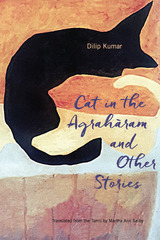 Cat in the Agraharam and Other Stories
Dilip Kumar, Translated from the Tamil by Martha Ann Selby
Northwestern University Press, 2020 This collection of stories from celebrated author Dilip Kumar offers a distinct perspective on everyday life in the South Indian cities of Coimbatore and Chennai. The stories set in the Sowcarpet neighborhood of Chennai give readers a glimpse into the orthodox world of Gujarati Vaishnavas, transplants from the northwestern region of Kutch, who find themselves living usually at odds—and occasionally in harmony—with the Tamil-speaking community.
The volume is introduced by its award-winning translator, Martha Ann Selby, who worked closely with the author. The universal appeal of these stories is rooted in their utterly truthful local specificity as they explore complex themes of abduction and restoration, humiliation and despair, and related issues of identity and wholeness. Known by Tamil readers for his description and detail, Dilip Kumar also writes with humor and a deep compassion for his characters, highlighting their strengths in the face of degradation and strife. His perspective and insight build on his own status as a northerner in this southern setting for whom Tamil is a second language—much like his characters.
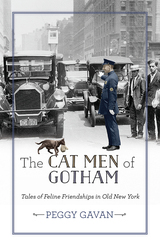 The Cat Men of Gotham: Tales of Feline Friendships in Old New York
Peggy Gavan
Rutgers University Press, 2019 Winner of the 2019 Certificate of Excellence and MUSE Medallion from the Cat Writers Association
The nineteenth century was a rough time to be a stray cat in New York City. The city’s human residents dealt with feline overpopulation by gassing unwanted cats or tossing them in rivers. But a few lucky strays were found by a diverse array of men—including firemen, cops, athletes, and politicians—who rescued them from the streets and welcomed them into their homes and hearts.
This book tells the stories of these heroic cat men of Gotham and their beloved feline companions. Not only does it introduce us to some remarkable men, but we get to meet many extraordinary cats as well, from Chinese stowaways prowling the Chelsea Piers to the sole feline survivor of the USS Maine explosion. Among the forty-two profiles, we find many feline Cinderella stories, as humble alley cats achieved renown as sports team mascots, artists’ muses, and even presidential pets.
Sure to appeal to cat fanciers and history fans alike, The Cat Men of Gotham will give you a new appreciation for Old New York and the people and animals who made it their home. As it takes you on a journey through the streets of Manhattan and Brooklyn, it will amuse and astound you with tales of powerful men and their pussycats.
Cat Musculature: A Photographic Atlas
Gordon Greenblatt
University of Chicago Press, 1981 A complete visual guide to the dissection of cats
This series of brilliant photographs shows the dissection of the cat musculature. It is designed for use in conjunction with the third edition of Hyman's Comparative Vertebrate Anatomy, edited by Marvalee Wake, although it can be used with other textbooks. Every possible step has been taken to make the photographs easy to interpret and to follow. Reference indications to the Wake texts are included, and also concise data on the origin, insertion, and action of each muscle. The scale is such that in most cases no more than five muscles are shown per photograph, thus simplifying the task of visualizing the individual muscles. An invaluable aid for every student of cat anatomy.
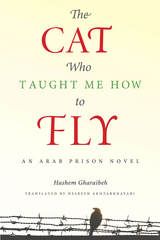 The Cat Who Taught Me How to Fly: An Arab Prison Novel
Hashem Gharaibeh
Michigan State University Press, 2017 In his masterpiece The Cat Who Taught Me How to Fly, Hashem Gharaibeh tells the moving story of a political prisoner during Jordan’s martial law era, which spanned from 1967 to 1989. Gharaibeh defies the taboos of politics, sex, and religion to tell a thrilling and brutally honest story about the horrors and insanities of everyday life in an Arab prison. At once both a novel and an autobiography, the author draws from his own experiences as a Jordanian youth arrested and imprisoned for nearly a decade for his affiliation with the Jordanian Communist Party. The novel uniquely portrays prison culture intertwined with tribal, ideological, and political perspectives to explain both mundane and esoteric aspects of prison life in this time and era, illustrating an experience that is traumatic, humane, and inspiring. A heartwrenching story of learning, survival, and the quest for the freedom of thought is told with powerful defiance and grace, exposing us to human frailty, strength, and one man’s dream to soar beyond the walls of prison, society, and self.
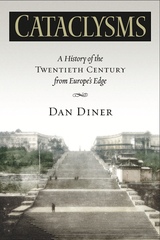 Cataclysms: A History of the Twentieth Century from Europe’s Edge
Dan Diner, Translated by William Templer with Joel Golb
University of Wisconsin Press, 2007 Cataclysms is a profoundly original look at the last century. Approaching twentieth-century history from the periphery rather than the centers of decision-making, the virtual narrator sits perched on the legendary stairs of Odessa and watches as events between the Baltic and the Aegean pass in review, unfolding in space and time between 1917 and 1989, while evoking the nineteenth century as an interpretative backdrop.
Influenced by continental historical, legal, and social thought, Dan Diner views the totality of world history evolving from an Eastern and Southeastern European angle. A work of great synthesis, Cataclysms chronicles twentieth century history as a “universal civil war” between a succession of conflicting dualisms such as freedom and equality, race and class, capitalism and communism, liberalism and fascism, East and West.
Diner’s interpretation rotates around cataclysmic events in the transformation from multinational empires into nation states, accompanied by social revolution and “ethnic cleansing,” situating the Holocaust at the core of the century’s predicament. Unlike other Eurocentric interpretations of the last century, Diner also highlights the emerging pivotal importance of the United States and the impact of decolonization on the process of European integration.
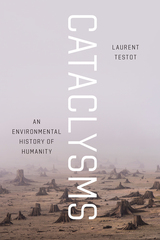 Cataclysms: An Environmental History of Humanity
Laurent Testot
University of Chicago Press, 2020 Humanity is by many measures the biggest success story in the animal kingdom; but what are the costs of this triumph? Over its three million years of existence, the human species has continuously modified nature and drained its resources. In Cataclysms, Laurent Testot provides the full tally, offering a comprehensive environmental history of humanity’s unmatched and perhaps irreversible influence on the world.
Testot explores the interconnected histories of human evolution and planetary deterioration, arguing that our development from naked apes to Homo sapiens has entailed wide-scale environmental harm. Testot makes the case that humans have usually been catastrophic for the planet, “hyperpredators” responsible for mass extinctions, deforestation, global warming, ocean acidification, and unchecked pollution, as well as the slaughter of our own species. Organized chronologically around seven technological revolutions, Cataclysms unspools the intertwined saga of humanity and our environment, from our shy beginnings in Africa to today’s domination of the planet, revealing how we have blown past any limits along the way—whether by exploding our own population numbers, domesticating countless other species, or harnessing energy from fossils. Testot’s book, while sweeping, is light and approachable, telling the stories—sometimes rambunctious, sometimes appalling—of how a glorified monkey transformed its own environment beyond all recognition.
In order to begin reversing our environmental disaster, we must have a better understanding of our own past and the incalculable environmental costs incurred at every stage of human innovation. Cataclysms offers that understanding and the hope that we can now begin to reform our relationship to the Earth.
A Catalog of Biblical Passages in the Dead Sea Scrolls
David L. Washburn
SBL Press, 2003 Material from the Dead Sea Scrolls appears in many publications. While much of the corpus has now appeared in the Discoveries in the Judaean Desert series, there are still fragments buried in obscure journals and books that can be virtually impossible to find. This book identifies all the passages in the Qumran documents that contain biblical text, both in the biblical and non-biblical scrolls. It provides specific bibliographic information, in canonical order, for locating each passage in the published scrolls and compares each one to the ancient Hebrew and Greek versions of the Hebrew Bible, noting both similarities and differences. It is designed to help those who want to work with manuscripts and versions to discover the original text of the Hebrew Bible. This work will appeal to students of Qumran, and both scholars and nonspecialists interested in textual criticism of the Hebrew Bible.
Catalog of Unabashed Gratitude
Ross Gay
University of Pittsburgh Press, 2015 Winner, 2015 National Book Critics Circle Award, poetry category
Winner, 2016 Kingsley Tufts Poetry Prize
Finalist, 2015 National Book Award, poetry category
Finalist, 2015 NAACP Image Awards, poetry category
Catalog of Unabashed Gratitude is a sustained meditation on that which goes away—loved ones, the seasons, the earth as we know it—that tries to find solace in the processes of the garden and the orchard. That is, this is a book that studies the wisdom of the garden and orchard, those places where all—death, sorrow, loss—is converted into what might, with patience, nourish us.
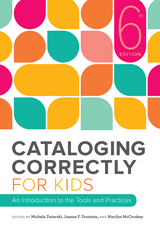 Cataloging Correctly for Kids
Michele Zwierski, Marilyn McCroskey, and Joanna F. Fountain
American Library Association, 2021 Cataloging library materials for children in the internet age has never been as challenging or as important. RDA: Resource Description and Access is now the descriptive standard, there are new ways to find materials using classifications, and subject heading access has been greatly enhanced by the keyword capabilities of today’s online catalogs. It’s the perfect moment to present a completely overhauled edition of this acclaimed bestseller. The new sixth edition guides catalogers, children’s librarians, and LIS students in taking an effective approach towards materials intended for children and young adults. Informed by recent studies of how children search, this handbook’s top-to-bottom revisions address areas such as - how RDA applies to a variety of children’s materials, with examples provided;
- authority control, bibliographic description, subject access, and linked data;
- electronic resources and other non-book materials; and
- cataloging for non-English-speaking and preliterate children.
Catalogue of Byzantine Seals at Dumbarton Oaks and in the Fogg Museum of Art
Edited by John Nesbitt and Nicolas Oikonomides
Harvard University Press The vast collection of 17,000 Byzantine lead seals in the Harvard collections has long been recognized as an important source for the study of the Byzantine provinces. This volume, the first in a series of catalogues of geographical seals, covers the Empire’s western territories and its possessions North of Thessaly.
The sections begin with a short essay on the region’s location and history. Each seal is illustrated and is accompanied—where appropriate—by full commentary regarding the specimen’s date, biographical information on its owner, peculiarities of orthography, and special features of iconography. These small seals are a large contribution to historical geography, the evolution of the Byzantine provincial administration, prosopography, development in the Greek language, and decorative vogues.
Catalogue of Byzantine Seals at Dumbarton Oaks and in the Fogg Museum of Art
Edited by John Nesbitt and Nicolas Oikonomides
Harvard University Press The combined Dumbarton Oaks and Fogg collection of Byzantine seals is one of the largest in the world, containing 17,000 specimens. Volume 3 in the catalogue includes seals with place names from west, northwest, and central Asia Minor and the Orient. Each section begins with a short essay on the region’s history. Each seal is illustrated and is accompanied—where appropriate—by full commentary regarding the specimen’s date, biographical information on its owner, peculiarities of orthography, and special features of iconography. These seals contribute significantly to historical geography, the evolution of the Byzantine imperial administration, development in the Greek language, and decorative vogues.
Catalogue of Byzantine Seals at Dumbarton Oaks and in the Fogg Museum of Art
Edited by John Nesbitt and Nicolas Oikonomides
Harvard University Press The combined Dumbarton Oaks and Fogg collection of Byzantine seals is one of the largest in the world, containing 17,000 specimens. Volume 2 in the catalogue includes seals with place names from south of the Balkans, the islands, and the south of Asia Minor. Each section begins with a short essay on the region’s history. Each seal is illustrated and is accompanied—where appropriate—by full commentary regarding the specimen’s date, biographical information on its owner, peculiarities of orthography, and special features of iconography. These seals contribute significantly to historical geography, the evolution of the Byzantine imperial administration, development in the Greek language, and decorative vogues.
Catalogue of Byzantine Seals at Dumbarton Oaks and in the Fogg Museum of Art
Edited by Eric McGeer, John Nesbitt, and Nicolas Oikonomides
Harvard University Press The vast collection of 17,000 Byzantine lead seals in the Harvard collections has long been recognized as an important source for the study of the Byzantine provinces. This volume is the fourth in the series of catalogues of geographical seals, and presents photographs, descriptions, and commentaries on the seals from the East.
Catalogue of Byzantine Seals at Dumbarton Oaks and in the Fogg Museum of Art
Edited by John Nesbit
Harvard University Press The combined Dumbarton Oaks and Fogg collection of Byzantine seals is one of the largest in the world, containing 17,000 specimens. Volume 6 in the catalogue presents the seals of emperors and patriarchs of Constantinople. Imperial seals are presented in conjunction with a representative coin of the appropriate emperor or empress to help the reader compare the iconography. Also included are select seals from patriarchs of Constantinople. More than 250 seals are illustrated and accompanied—where appropriate—by a full commentary regarding each specimen’s date, biographical information on its owner, peculiarities of orthography, and iconographic features. These seals contribute significantly to historical geography, the evolution of the Byzantine imperial administration, development in the Greek language, and decorative vogues.
Catalogue of Byzantine Seals at Dumbarton Oaks and in the Fogg Museum of Art
Edited by Eric McGeer, John Nesbitt, and Nicolas Oikonomides
Harvard University Press The combined Dumbarton Oaks and Fogg collection of Byzantine seals is one of the largest in the world, containing 17,000 specimens. Volume 5 in the catalogue includes seals with place names from the East, Constantinople and its environs, and seals with uncertain readings. Each section begins with a short essay on the region’s history. Each seal is illustrated and is accompanied—where appropriate—by full commentary regarding the specimen’s date, biographical information on its owner, peculiarities of orthography, and special features of iconography. These seals contribute significantly to historical geography, the evolution of the Byzantine imperial administration, development in the Greek language, and decorative vogues.
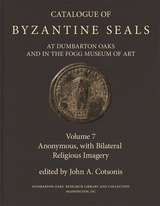 Catalogue of Byzantine Seals at Dumbarton Oaks and in the Fogg Museum of Art
John A. Cotsonis
Harvard University Press Dumbarton Oaks houses the largest collection of Byzantine lead seals in the world, with approximately 17,000 specimens. Volume 7 of the ongoing series of Dumbarton Oaks catalogues presents a distinct part of the collection: 572 anonymous seals bearing sacred images on both sides. The seals, almost all previously unpublished, are fully illustrated and accompanied by a detailed commentary that provides transcriptions of the identifying sigla. This volume represents the first attempt to analyze this group of seals chronologically and typologically.
The depictions of Christ, the Virgin, and a remarkably wide array of saints and narrative scenes offer rich and untapped material for scholars interested in Byzantine piety and culture. Discernible trends within this body of seals help to track the popularity of various saints and the changes in devotional images over time. The variety of these images, enhanced by reference to examples in other collections, will also enable scholars to compare the renderings of holy figures on lead seals to those appearing in other Byzantine religious images.
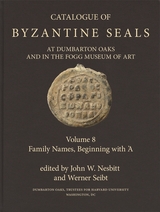 Catalogue of Byzantine Seals at Dumbarton Oaks and in the Fogg Museum of Art
John W. Nesbitt and Werner Seibt
Harvard University Press Dumbarton Oaks houses the largest collection of Byzantine lead seals in the world, with approximately 17,000 specimens. Volume 8 of the Catalogue of Byzantine Seals represents the first in an ambitious series of studies focused on family names. It opens with an essay on the history and use of family names throughout the Byzantine world, which ranged from the ordinary—Antiochites, “of Antioch”—to the suggestive—Alopos, “the Fox”—to the humorous—Barymichael, “Big Mike.” Following this introductory study, the volume discusses ninety Byzantine families, starting with Aaron and ending with Auzentiotes, that can be traced through almost 350 seals. We encounter interesting lineages like the Angelos (“Angel”) family, several of whom became emperors, and the Akapnes (“Smokeless”) family, whose members mostly served in the lower rungs of the bureaucracy. Through these seals, we gain a better understanding of the civil and military administration of the Byzantine Empire and how it related to Byzantium’s more prominent and more modest families.
 Catalogue of Fungi of Colombia
Edited by Rafael F. De Almeida, Robert Lücking, Aída Vasco-Palacios, Ester Gaya, and Mauricio Diazgranados
Royal Botanic Gardens, Kew, 2022 A thorough listing of Colombia’s known fungi.
Catalogue of Fungi of Colombia is the first comprehensive listing of the known Colombian fungi. It was compiled by a team of Colombian and international mycologists from the Royal Botanic Gardens, Kew, the Humboldt Institute, and other partner organizations. The catalog is accompanied by fifteen chapters written by specialists providing perspectives on the state of knowledge of the Colombian fungi covering a range of topics, from the diversity of the main groups of fungi and history of mycological studies in Colombia to aspects of the biogeography, ecology, biotechnology, conservation, and uses of Colombian fungi. The catalog is further enriched by supplementary material that allows readers to explore open questions, develop new ideas on the use of fungi and their conservation, and foster social and environmental awareness.
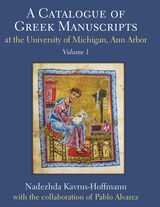 A Catalogue of Greek Manuscripts at the University of Michigan, Ann Arbor
Nadezhda Kavrus-Hoffmann with the collaboration of Pablo Alvarez
University of Michigan Press, 2021 A Catalogue of Greek Manuscripts at the University of Michigan, Ann Arbor is a comprehensive, fully illustrated catalogue of the largest collection of Greek manuscripts in America, including 110 codices and fragments ranging from the fourth to the nineteenth century. The collection, held in the Special Collections Research Center of the University of Michigan Library, contains many manuscripts from Epirus and the Meteora monasteries built on high pinnacles of rocks in Thessaly. Nadezhda Kavrus-Hoffmann has based the manuscript descriptions on the latest developments in the fields of paleography and codicology, including the newest recommendations of the Institute for Research and History of Texts in Paris. The catalogue includes high-resolution plates of all the manuscripts, allowing researchers to compare the entries with other Greek manuscripts around the world. This catalogue contains a trove of fascinating information related to Byzantine culture that will be available for the first time to scholars working on various disciplines of the humanities such as Classical and Byzantine Studies, Art History, Medieval Studies, Theology, and History.
This is the first volume of a projected two-volume set. Volume 2, also by Nadezhda Kavrus-Hoffmann, will contain descriptions of remaining Greek manuscripts in the Library’s collection, starting with Mich. Ms. 59 and ending with Mich. Ms. 238, for a total of 53 manuscripts and 8 fragments. Both volumes will have the same format – catalogue entries for each manuscript together with extensive illustrations. The publication date for Volume 2 has not been established.
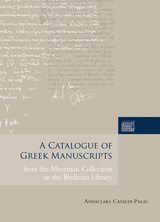 A Catalogue of Greek Manuscripts from the Meerman Collection in the Bodleian Library
Annaclara Cataldi Palau
Bodleian Library Publishing, 2011 This catalogue of forty manuscripts contained in the Meerman collection of medieval and renaissance Greek manuscripts at the Bodleian Library includes an introduction with extensive research on the provenance of the collection, detailed descriptions of each manuscript, and forty illustrations of manuscript pages.
The collection of the Dutch bibliophile Gerard Meerman, the manuscripts were bought for the Bodleian Library in 1824 at auction at the Hague. The collection is composed almost exclusively of manuscripts that once belonged to the Jesuits of Clermont in Paris, though the works had several subsequent owners, including English collector Sir Thomas Phillipps and Guillaume Pellicier, a French ambassador to Venice in the first half of the sixteenth century. This catalogue fully demonstrates the importance of these manuscripts and is an essential scholarly resource for each item in the collection.
Catalogue of Late Roman Coins in the Dumbarton Oaks Collection and in the Whittemore Collection
Philip Grierson and Melinda Mays
Harvard University Press, 1992 This is the first fully illustrated catalogue of a major collection of late Roman and early Byzantine imperial coins. It follows the general layout of the Byzantine volumes in the Dumbarton Oaks series, with a substantial introduction dealing with the history of the coinage, including iconography, mints, and the monetary system.
Catalogue of the Byzantine and Early Mediaeval Antiquities in the Dumbarton Oaks Collection
Marvin C. Ross
Harvard University Press, 2005 Marvin Ross’s groundbreaking catalogue of jewelry in the Byzantine Collection at Dumbarton Oaks was first published in 1965. The volume has long been out of print, but its enormous popularity and enduring status led to a reprint, this time with color photographs. Accompanying the reprint edition is an addendum by Susan Boyd and Stephen Zwirn with twenty-two new objects acquired by Dumbarton Oaks Collection between 1962 and 1999.
Catalogue of the Byzantine Coins in the Dumbarton Oaks Collection and in the Whittemore Collection
Philip Grierson
Harvard University Press The 12,000 coins in the Dumbarton Oaks Collection and the Whittemore Collection at the Fogg Art Museum form one of the greatest specialized collections of Byzantine coins in the world. The catalogue, edited by Alfred R. Bellinger and Philip Grierson, publishes the majority of these coins, dating between 491 and 1453, in five volumes.
The second volume in this catalogue is in two parts. Part I examines Phocas and Heraclius (602–641) and Part II covers the period between Heraclius Constantine to Theodosius III (602–717). The extensive introduction treats the historical background, the monetary system, mints and mint activity, and types and inscriptions. Each reign also includes a longer introduction that covers chronology, main features of the coinage, and types issued by mint.
Catalogue of the Byzantine Coins in the Dumbarton Oaks Collection and in the Whittemore Collection
Philip Grierson
Harvard University Press The 12,000 coins in the Dumbarton Oaks Collection and the Whittemore Collection at the Fogg Art Museum form one of the greatest specialized collections of Byzantine coins in the world. The catalogue, edited by Alfred R. Bellinger and Philip Grierson, publishes the majority of these coins, dating between 491 and 1453, in five volumes.
The third volume in this catalogue is in two parts. Part I examines Leo III to Michael III (717–867) and Part II covers the period between Basil I and Nicephorus III (867–1081). Continuing the practice established in volume two, an extensive general introduction treats the historical background, the monetary system, mints and mint activity, and types and inscriptions, while the introduction to each reign covers chronology, main features of the coinage, and types issued by mint.
Catalogue of the Byzantine Coins in the Dumbarton Oaks Collection and in the Whittemore Collection
Michael F. Hendy
Harvard University Press The fourth in a series of five catalogues, this volume’s sections have a more extensive treatment, featuring imperial costume and regalia, their importance in coin designs; the coordination, control, and methods of coin production; and an excursus on the main issues of the years around 1204. The introductions to each reign have also been expanded to take account of the historical and numismatic complexities of the period, and many more specimens from outside Dumbarton Oaks have been illustrated, offering a greater degree of coverage.
This volume is in two parts. Part I covers the reigns of Alexius I to Alexius V (1081–1204), and Part II covers the emperors of Nicea and their contemporaries (1204–1261).
Catalogue of the Byzantine Coins in the Dumbarton Oaks Collection and in the Whittemore Collection
Alfred R. Bellinger
Harvard University Press The 12,000 coins in the Dumbarton Oaks Collection and the Whittemore Collection at the Fogg Art Museum form one of the greatest specialized collections of Byzantine coins in the world. The catalogue, edited by Alfred R. Bellinger and Philip Grierson, publishes the majority of these coins, dating between 491 and 1453, in five volumes.
The first volume in the catalogue covers the coins of Anastasius I through Maurice, and includes a history of the collections.
Catalogue of the Byzantine Coins in the Dumbarton Oaks Collection and in the Whittemore Collection
Philip Grierson
Harvard University Press The final volume in the series, this catalogue follows the general plan of volumes II–IV but differs from them in its use of the sylloge format for the catalogue proper. The collection of Palaeologan coins at Dumbarton Oaks is by far the largest that exists, and the field is one in which great advances have been made over the last half-century. This volume supersedes the previous accounts of Palaeologan coinage, and is definitive in its field.
Part I includes the introduction, appendices, and bibliography, while Part II continues with the catalogue, concordances, and indexes.
 A Catalogue of the Everett D. Graff Collection of Western Americana
Compiled by Colton Storm
University of Chicago Press, 1968 The Everett D. Graff Collection of Western Americana consists of some 10,000 books, manuscripts, maps, pamphlets, broadsides, broadsheets, and photographs, of which about half are described in the present catalogue. The Graff Collection displays the remarkable breadth of interest, knowledge, and taste of a great bibliophile and student of Western American history. From this rich collection, now in The Newberry Library, Chicago, its former Curator, Colton Storm, has compiled a discriminating and representative Catalogue of the rarer and more unusual materials.
Collectors, bibliographers, librarians, historians, and book dealers specializing in Americana will find the Graff Catalogue an interesting and essential tool. Detailed collations and binding descriptions are cited, and many of the more important works have been annotated by Mr. Graff and Mr. Storm. An extensive index of persons and subjects makes the book useful to the scholar as well as to the collector and dealer. The book is not a bibliography but rather a guide to rare or unique source materials now enriching The Newberry Library's outstanding holdings in American history.
 A Catalogue of the Pre-1500 Western Manuscript Books at the Newberry Library
Paul Saenger
University of Chicago Press, 1989 The Newberry Library in Chicago possesses one of the most distinguished collections of medieval and Renaissance manuscript books in North America. Based on two major private collections of the late nineteenth century—those of Henry Probasco and Edward E. Ayer—and scrupulously added to in this century, the holdings include late medieval bibles and breviaries, books of hours and books of homilies, and seminal texts on astronomy.
Some of the books, such as those from the libraries of Philip the Good and Anne of Brittany, are beautifully illuminated. But the collection also includes an unusual array of "typical" medieval books, chosen not for their beauty but for their paleographical, codicological, and textual interest. Such codices include an eleventh-century Carthusian monk, and numerous books of hours adapted for feminine use. Paul Saenger has painstakingly identified the text, illumination, physical structure, and provenance for each of the more than 200 books in the collection to provide an exemplary guide to literate culture in the late Middle Ages.
This catalogue, carefully researched and handsomely illustrated, will be an invaluable resource for historians, art historians, paleographers, bibliographers, and collectors.
Catalogue of the Sculpture in the Dumbarton Oaks Collection from the Ptolemaic Period to the Renaissance
Gary Vikan
Harvard University Press, 1995 This catalogue highlights the fifty-two sculptures in the Byzantine Collection at Dumbarton Oaks. The objects range from the third-century BC miniature portrait head of a Ptolemaic emperor to the sixteenth-century lindenwood “Queen of Heaven” by Tilmann Riemenschneider.
These sculptures are not representative of any one culture or period, but rather are characteristic of the Blisses’ wide-ranging tastes and extraordinary connoisseurship. About a quarter of the objects are Greco-Roman in date, and nearly two-thirds of the remainder are Late Antique, predominantly limestone carvings from Early Byzantine Egypt. Sculpture from the Middle Byzantine period is very rare, making the four pieces in this collection especially significant.
Catalogue of the Slavonic Cyrillic Manuscripts of the National Szechenyi Library
Ralph Cleminson
Central European University Press, 2007 This volume provides a thorough introduction to the Cyrillic collection, and contains the detailed descriptions of the fifty-six Slavonic Cyrillic codices or fragments thereof held by the National Széchényi Library in Budapest, the vast majority of which are here described for the first time. The analysis of the codices has been done using the resources of modern technology. Written from the thirteenth to early nineteenth century, the codices were mostly produced within the confines of the historical Kingdom of Hungary. The catalogue is extensively illustrated with pictures of the most characteristic and decorative pages and a few covers of the codices.This publication is a further step towards the complete documentation of the Cyrillic manuscript heritage of Central Europe.
Catalogue of the Stearns Collection of Musical Instruments
Albert A. Stanley
University of Michigan Press, 1918 These two volumes are a catalog of the various instruments held by the University of Michigan's Stearns Collection of Musical Instruments. This collection grew out of a donation by private collector, Frederick Stearns. The Stearns collection includes instruments from around the world, including items from the Caribbean, West Africa, Brazil, India, Japan, Southeast Asia, and China, as well as folk instruments from Europe and instruments used by various Native American peoples from Alaska, the Southwest, and Hawai'i, among others. The collection also includes more familiar western instruments such as pianos, organs, harps, wind and brass instruments, etc., as well as music boxes, early Victrolas, and other related items. The catalog includes a bibliography, as well as information about Stearns and other donors to the collection.
Catalogue of the Stearns Collection of Musical Instruments
Albert A. Stanley
University of Michigan Press, 1921 These two volumes are a catalog of the various instruments held by the University of Michigan's Stearns Collection of Musical Instruments. This collection grew out of a donation by private collector, Frederick Stearns. The Stearns collection includes instruments from around the world, including items from the Caribbean, West Africa, Brazil, India, Japan, Southeast Asia, and China, as well as folk instruments from Europe and instruments used by various Native American peoples from Alaska, the Southwest, and Hawai'i, among others. The collection also includes more familiar western instruments such as pianos, organs, harps, wind and brass instruments, etc., as well as music boxes, early Victrolas, and other related items. The catalog includes a bibliography, as well as information about Stearns and other donors to the collection.
 Catalogue of Useful Plants of Colombia
Edited by Raquel Negrão, Alexandre K. Monro, Carolina Castellanos-Castro, and Mauricio Diazgranados
Royal Botanic Gardens, Kew, 2022 A thorough listing of Colombia’s rich and useful biodiversity.
The Catalogue of Useful Plants of Colombia is the most comprehensive listing of the known useful plants found in Colombia. It was compiled by a team of Colombian and international botanists from the Royal Botanic Gardens, Kew, the Humboldt Institute, and other partner organizations. The catalog is accompanied by eleven chapters written by specialists covering a range of topics, from taxonomic, geographic, and conservation aspects to the plants’ uses in sustainable value chains and contributions to the bioeconomy. Specific topics such as medicinal, edible, and insecticide plants and their representation in the Amazon region are also covered. The catalog includes supplementary material that allows readers to explore open questions and opportunities, develop new ideas on the use of plants and their conservation, and foster social and environmental awareness.
 Catalogue of Watermarks in Italian Printed Maps, ca. 1540-1600
David Woodward
University of Chicago Press, 1996 This catalogue presents over three-hundred photographic images of watermarks found in Italian printed maps of the sixteenth century. Such watermarks are essential tools in identifying paper moulds and are part of the evidence that bibliographers use in dating the paper on which maps and other documents were printed. The images reproduced in the catalogue have been selected from some 1200 beta-radiographs of watermarks gathered from Italian printed maps issued mostly in composite atlases printed in Venice and Rome between 1540 and 1600. These beta-radiographs reveal minute variations that are almost invisible to the eye. A special feature of the book is a visual index of miniature black-and-white line tracings of the watermarks.
Fifteen years in the making, this catalogue will be an essential reference for bibliographers and archivists dealing with rare books and maps of the period, for map collectors, map librarians, and scholars and librarians working with early printed items and manuscripts.
Catalogus Translationum et Commentariorum, Volume 8
Virginia Brown
Catholic University of America Press, 1960 Considered a definitive source for scholars and students, this highly acclaimed series illustrates the impact of Greek and Latin texts on the Middle Ages and Renaissance.
Catalogus Translationum et Commentariorum, Volume 9
Virginia Brown
Catholic University of America Press, 1960 Considered a definitive source for scholars and students, this highly acclaimed series illustrates the impact of Greek and Latin texts on the Middle Ages and Renaissance.
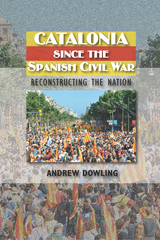 Catalonia Since the Spanish Civil War: Reconstructing the Nation
Andrew Dowling
Sussex Academic Press, 2022 Catalonia Since the Spanish Civil War examines the transformation of the Catalan nation in socio-economic, political, and historical terms, offering an innovative interpretation of the determinants of its nationalist mobilization. With Franco's and Spanish nationalism's victory in 1939, and the consolidation of a long-lasting dictatorship, it appeared certain that the Catalan national movement would be crushed. Yet, this did not happen, and Catalan nationalism and identity re-emerged at the end of Franco's dictatorship in 1975 more firmly rooted than before. The core of the book traces the Francoist repression and the nationalist response to it, demonstrating how new political actors reconfigured Catalan nationalism over the course of the Franco regime (1939-1975). Post-Franco, Catalan cultural and political identity was consolidated and Catalonia became the most successful state-less nationalism in Western Europe. The 21st century has been marked by an ever-growing independence movement, culminating in the vast demonstration in the city of Barcelona in July 2010. The book provides multi-faceted viewpoints in historic perspective, and reflects on possible steps and outcomes for this new pro-independence turn in Catalan nationalism. Catalonia Since the Spanish Civil War will appeal not only to students of Spain, but also to those interested in nationalism as a separate issue of enquiry. The themes treated in the book - Franco's Spain, nationalism, anarchism, Catholicism, communism, and the Catalan role in Spain's transition to democracy - make this work an essential point of reference for students and researchers in Hispanic studies, modern European history, and political science. (Series: Sussex Studies in Spanish History)
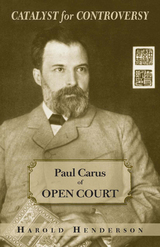 Catalyst for Controversy: Paul Carus of Open Court
Harold Henderson
Southern Illinois University Press, 2009 "I am not a common atheist; I am an atheist who loves God."—Paul Carus, "The God of Science," 1904 In the summer of 1880, while teaching at the military academy of the Royal Corps of Cadets of Saxony in Dresden, Paul Carus published a brief pamphlet denying the literal truth of scripture and describing the Bible as a great literary work comparable to the Odyssey. This unremarkable document was Carus’s first step in a wide-ranging intellectual voyage in which he traversed philosophy, science, religion, mathematics, history, music, literature, and social and political issues. The Royal Corps, Carus later reported, found his published views "not in harmony with the Christian spirit, in accordance with which the training and education of the Corps of Cadets should be conducted." And so the corps offered the young teacher the choice of asking "most humbly for forgiveness for daring to have an opinion of my own and to express it, perhaps even promise to publish nothing more on religious matters, or to give up my post. I chose the latter. . . . There was thus no other choice for me but to emigrate and, trusting in my own powers, to establish for myself a new home." His resignation was effective on Easter Sunday, 1881. Carus toured the Rhine, lived briefly in Belgium, and taught in a military college in England to learn English well enough to "thrive in the United States." By late 1884 or early 1885 he was on his way to the New World. Thriving in the United States proved more difficult than it had in England, but before 1885 ended he had published his first philosophical work in English, Monism and Meliorism. The book was not widely read, but it did reach Edward C. Hegeler, a La Salle, Illinois, zinc processor who became his father-in-law as well as his ideological and financial backer. Established in La Salle, Carus began the work that would place him among the prominent American philosophers of his day and make the Open Court Publishing Company a leading publisher of philosophical, scientific, and religious books. He edited The Open Court and The Monist, offering the finest view of Oriental thought and religion then available in the West, and sought unsuccessfully to bring about a second World Parliament of Religions. He befriended physicist-philosopher Ernst Mach. For eleven years he employed D. T. Suzuki, who later became a great Zen Buddhist teacher. He published more articles by Charles S. Peirce, now viewed as one of the great world philosophers, in The Monist than appeared in any other publication. Biographer Harold Henderson concludes his study of this remarkable man: "Whenever anyone is so fired with an idea that he or she can’t wait to write it down, there the spirit of Paul Carus remains, as he would have wished, active in the world."
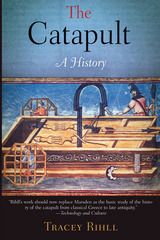 The Catapult: A History
Tracey Rihll
Westholme Publishing, 2007 A Major Contribution to the History of Technology and Ancient Warfare The most recognized military device of ancient times and the source of continued fascination and popular appeal, the catapult represented a major shift in the conduct of warfare. The catapult which literally means a device to “hurl [an object] across” was originally a sort of crossbow invented at the beginning of the fourth century B.C. in Syrakuse. Bows soon grew to the length of a modern bus, and in due course a completely new and better power source was invented. Instead of compound bows made of stretched sinew and compressed horn, the energy used to launch an object was stored in twisted ropes made of animal sinews: the torsion catapult had arrived. The torsion catapult quickly became the chief weapon of ancient arsenals and gave armies for the first time a weapon that could strike enemies at a distance with devastating effect, including shooting to and from ships, battering fortifications, and sending projectiles over walls. Catapults of all sizes became part of the regular equipment of the Roman army, and were used for centuries across the length and breadth of the empire to seize territory, and to defend it. In The Catapult: A History, an authority on this device, historian Tracey Rihll, uses ancient literary sources and the latest archaeological findings to tell the story of this first machine of war. Dispelling any notion that the catapult was precision engineered in the modern sense, the author explains how a robust formulaic design allowed a variety of machines and missiles to be used for particular battlefield conditions or military tasks. Also included are details of the author’s intriguing discovery that there were little personal catapults that were used like rifles. Although the catapult was displaced by the introduction of gunpowder and cannon, this device marks the beginning of mechanized warfare, the hallmark of modern fighting. Complete with line drawings and photographs, The Catapult is a major contribution to the history of technology and conflict.
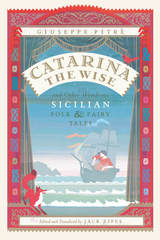 Catarina the Wise and Other Wondrous Sicilian Folk and Fairy Tales
Collected by Giuseppe Pitrè
University of Chicago Press, 2017 Well, gentlemen, here’s a tale that people have told time and again . . . .
So begins the title story in this collection of fifty Sicilian folk and fairy tales edited and translated by noted folklore scholar Jack Zipes. But while some of the stories may sound as if they’ve been told time and again—such as variations on Cinderella and Puss in Boots—many will enchant English-language readers and storytellers for the first time. From “The Pot of Basil” to “The Talking Belly,” “The Little Mouse with the Stinky Tail” to “Peppi, Who Wandered out into the World,” the stories in Catarina the Wise range from simple tales of getting a new dress or something good to eat to fantastical plots for outwitting domineering husbands, rescuing impoverished fathers, or attracting wealthy suitors (frequently the Prince of Portugal). Many feature strong, clever women (usually daughters who become queen). Many are funny; many are wise. Some are very, very strange.
As Zipes relates, the true story of their origins is as extraordinary as the tales themselves. Born to a poor family of sailors in Palermo, Giuseppe Pitrè would go on to serve with Garibaldi, become a traveling country doctor, and gather one of the most colossal collections of folk and fairy tales of the nineteenth century. But while his work as a folklorist rivaled that of the Brothers Grimm, Pitrè remains a relative unknown. Catarina the Wise highlights some of the most delectable stories at the heart of his collection. Featuring new, original illustrations, this book is a beautiful, charming treasure for any fan of story, storytelling, and heroines and heroes living happily ever after—sometimes.
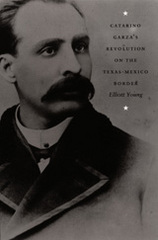 Catarino Garza's Revolution on the Texas-Mexico Border
Elliott Young
Duke University Press, 2004 Catarino Garza’s Revolution on the Texas-Mexico Border rescues an understudied episode from the footnotes of history. On September 15, 1891, Garza, a Mexican journalist and political activist, led a band of Mexican rebels out of South Texas and across the Rio Grande, declaring a revolution against Mexico’s dictator, Porfirio Díaz. Made up of a broad cross-border alliance of ranchers, merchants, peasants, and disgruntled military men, Garza’s revolution was the largest and longest lasting threat to the Díaz regime up to that point. After two years of sporadic fighting, the combined efforts of the U.S. and Mexican armies, Texas Rangers, and local police finally succeeded in crushing the rebellion. Garza went into exile and was killed in Panama in 1895.
Elliott Young provides the first full-length analysis of the revolt and its significance, arguing that Garza’s rebellion is an important and telling chapter in the formation of the border between Mexico and the United States and in the histories of both countries. Throughout the nineteenth century, the borderlands were a relatively coherent region. Young analyzes archival materials, newspapers, travel accounts, and autobiographies from both countries to show that Garza’s revolution was more than just an effort to overthrow Díaz. It was part of the long struggle of borderlands people to maintain their autonomy in the face of two powerful and encroaching nation-states and of Mexicans in particular to protect themselves from being economically and socially displaced by Anglo Americans. By critically examining the different perspectives of military officers, journalists, diplomats, and the Garzistas themselves, Young exposes how nationalism and its preeminent symbol, the border, were manufactured and resisted along the Rio Grande.
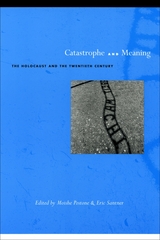 Catastrophe and Meaning: The Holocaust and the Twentieth Century
Edited by Moishe Postone and Eric Santner
University of Chicago Press, 2003 How should we understand the relation of the Holocaust to the broader historical processes of the century just ended? How do we explain the bearing of the Holocaust on problems of representation, memory, memorialization, and historical practice? These are some of the questions explored by an esteemed group of scholars in Catastrophe and Meaning, the most significant multiauthored book on the Holocaust in over a decade.
This collection features essays that consider the role of anti-Semitism in the recounting of the Holocaust; the place of the catastrophe in the narrative of twentieth-century history; the questions of agency and victimhood that the Holocaust inspires; the afterlife of trauma in literature written about the tragedy; and the gaps in remembrance and comprehension that normal historical works fail to notice.
Contributors:
Omer Bartov, Dan Diner, Debòrah Dwork, Saul Friedländer, Geoffrey Hartman, Dominick LaCapra, Paul Mendes-Flohr, Anson Rabinbach, Frank Trommler, Shulamit Volkov, Froma Zeitlin
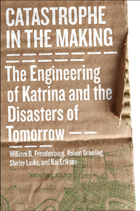 Catastrophe in the Making: The Engineering of Katrina and the Disasters of Tomorrow
William R. Freudenburg, Robert Gramling, Shirley Laska, and Kai T. Erikson
Island Press, 2011 When houses are flattened, towns submerged, and people stranded without electricity or even food, we attribute the suffering to “natural disasters” or “acts of God.” But what if they’re neither? What if we, as a society, are bringing these catastrophes on ourselves?
That’s the provocative theory of Catastrophe in the Making, the first book to recognize Hurricane Katrina not as a “perfect storm,” but a tragedy of our own making—and one that could become commonplace.
The authors, one a longtime New Orleans resident, argue that breached levees and sloppy emergency response are just the most obvious examples of government failure. The true problem is more deeply rooted and insidious, and stretches far beyond the Gulf Coast.
Based on the false promise of widespread prosperity, communities across the U.S. have embraced all brands of “economic development” at all costs. In Louisiana, that meant development interests turning wetlands into shipping lanes. By replacing a natural buffer against storm surges with a 75-mile long, obsolete canal that cost hundreds of millions of dollars, they guided the hurricane into the heart of New Orleans and adjacent communities. The authors reveal why, despite their geographic differences, California and Missouri are building—quite literally—toward similar destruction.
Too often, the U.S. “growth machine” generates wealth for a few and misery for many. Drawing lessons from the most expensive “natural” disaster in American history, Catastrophe in the Making shows why thoughtless development comes at a price we can ill afford.
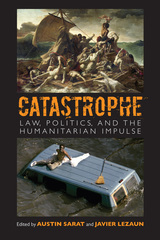 Catastrophe: Law, Politics, and the Humanitarian Impulse
Austin Sarat
University of Massachusetts Press, 2009
From 9/11 to Katrina, from Darfur to the Minnesota bridge collapse, ours is an "age of catastrophe." In this era, catastrophic events seem to have a revelatory quality: they offer powerful reminders of the fragility of our social and institutional architectures, making painfully evident vulnerabilities in our social organization that were otherwise invisible. By disrupting the operation of fundamental mechanisms and infrastructures of the social order, they lay bare the conditions that make our sense of normalcy possible.
At a time when societies are directing an unprecedented level of resources and ingenuity to anticipating and mitigating catastrophic events, Catastrophe: Law, Politics, and the Humanitarian Impulse examines the tests that catastrophe poses to politics and humanitarianism as well as to the law. It explores legal, political, and humanitarian responses during times when the sudden, discontinuous, and disastrous event has become, perhaps paradoxically, a structural component of our political imagination. It asks whether law, politics, and humanitarianism live up to the tests posed by disaster, and the role all of them play in creating a more resilient world.
Taken together the essays in this book ask us to see through and beyond the myths that surround catastrophe and our responses to it. They ask us to rethink our understanding of catastrophe and to imagine new legal, political, and humanitarian responses.
In addition to the editors, contributors include Thomas Birkland, Michele Landis Dauber, Kim Fortun, Edward Rackley, Peter Redfield, Peter H. Schuck, and Susan Sterett.
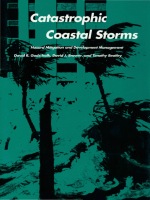 Catastrophic Coastal Storms: Hazard Mitigation and Development Management
David R. Godschalk, David J. Brower, and Timothy Beatley
Duke University Press, 1988 As people cluster on the coast in increasing numbers, coastal populations become more vulnerable to severe damage from catastrophic coastal storms. The authors contented that current public policy has proved unable to cope with the growing problem, and in response they present a comprehensive analysis of coastal storm hazards, standard policy approaches, and promising new means of managing coastal growth. Catastrophic Coastal Storms offers a solution to the policy problem by proposing a merger of hazard mitigation with development management, basing this on extensive surveys of at-risk coastal locations and case studies of post-hurricane recovery. Starting with the local level of government and proceeding to state and federal levels, the authors propose a strategy for overcoming the formidable obstacles to safeguarding the shoreline population and its structures from hurricanes and other severe storms.
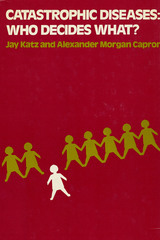 Catastrophic Diseases: Who Decides What?
Jay Katz
Russell Sage Foundation, 1975 People do not choose to suffer from catastrophic illnesses, but considerable human choice is involved in the ways in which the participants in the process treat and conduct research on these diseases. Catastrophic Diseases draws a powerful and humane portrait of the patients who suffer from these illnesses as well as of the physician-investigators who treat them, and describes the major pressures, conflicts, and decisions which confront all of them. By integrating a discussion of "facts" and "values," the authors highlight the forces which affect new developments in medicine—such as kidney and heart transplants—and the controversial issues they generate. Katz and Capron explore these issues through the use of dual conceptual perspectives. Their study first examines and evaluates the authority which should be vested in each of the chief participants in the catastrophic disease process—the physician-investigator, the patient-subject and his relatives, the professionals, and the state. Challenging questions are raised concerning medical education, informed consent, and professional responsibility. The authors next explore how the roles and capacities of the participants vary not only according to the basic issues they face but also according to the point in decision-making at which these issues arise. The process of investigating and treating catastrophic diseases, the authors believe, can thus usefully be divided into three decision-making stages—the formulation of policy, the administration of research and therapy, and the review of the decisions and their consequences. In conclusion, Katz and Capron demonstrate the need for a variety of individuals and groups with diverse values to be involved in decision-making in a manner which will not unnecessarily impede the scientific investigation of these diseases.
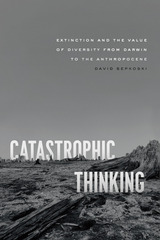 Catastrophic Thinking: Extinction and the Value of Diversity from Darwin to the Anthropocene
David Sepkoski
University of Chicago Press, 2020 A history of scientific ideas about extinction that explains why we learned to value diversity as a precious resource at the same time as we learned to “think catastrophically” about extinction.
We live in an age in which we are repeatedly reminded—by scientists, by the media, by popular culture—of the looming threat of mass extinction. We’re told that human activity is currently producing a sixth mass extinction, perhaps of even greater magnitude than the five previous geological catastrophes that drastically altered life on Earth. Indeed, there is a very real concern that the human species may itself be poised to go the way of the dinosaurs, victims of the most recent mass extinction some 65 million years ago.
How we interpret the causes and consequences of extinction and their ensuing moral imperatives is deeply embedded in the cultural values of any given historical moment. And, as David Sepkoski reveals, the history of scientific ideas about extinction over the past two hundred years—as both a past and a current process—is implicated in major changes in the way Western society has approached biological and cultural diversity. It seems self-evident to most of us that diverse ecosystems and societies are intrinsically valuable, but the current fascination with diversity is a relatively recent phenomenon. In fact, the way we value diversity depends crucially on our sense that it is precarious—that it is something actively threatened, and that its loss could have profound consequences. In Catastrophic Thinking, Sepkoski uncovers how and why we learned to value diversity as a precious resource at the same time as we learned to think catastrophically about extinction.
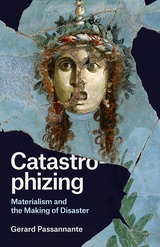 Catastrophizing: Materialism and the Making of Disaster
Gerard Passannante
University of Chicago Press, 2019 When we catastrophize, we think the worst. We make too much of too little, or something of nothing. Yet what looks simply like a bad habit, Gerard Passannante argues, was also a spur to some of the daring conceptual innovations and feats of imagination that defined the intellectual and cultural history of the early modern period.
Reaching back to the time between the Renaissance and the Enlightenment, Passannante traces a history of catastrophizing through literary and philosophical encounters with materialism—the view that the world is composed of nothing but matter. As artists, poets, philosophers, and scholars pondered the physical causes and material stuff of the cosmos, they conjured up disasters out of thin air and responded as though to events that were befalling them. From Leonardo da Vinci’s imaginative experiments with nature’s destructive forces to the fevered fantasies of doomsday astrologers, from the self-fulfilling prophecies of Shakespeare’s tragic characters to the mental earthquakes that guided Kant toward his theory of the sublime, Passannante shows how and why the early moderns reached for disaster when they ventured beyond the limits of the sensible. He goes on to explore both the danger and the critical potential of thinking catastrophically in our own time.
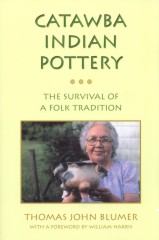 Catawba Indian Pottery: The Survival of a Folk Tradition
Thomas John Blumer, with a foreword by William L. Harris
University of Alabama Press, 2004 Traces the craft of pottery making among the Catawba Indians of North Carolina from the late 18th century to the present
When Europeans encountered them, the Catawba Indians were living along the river and throughout the valley that carries their name near the present North Carolina-South Carolina border. Archaeologists later collected and identified categories of pottery types belonging to the historic Catawba and extrapolated an association with their protohistoric and prehistoric predecessors.
In this volume, Thomas Blumer traces the construction techniques of those documented ceramics to the lineage of their probable present-day master potters or, in other words, he traces the Catawba pottery traditions. By mining data from archives and the oral traditions of contemporary potters, Blumer reconstructs sales circuits regularly traveled by Catawba peddlers and thereby illuminates unresolved questions regarding trade routes in the protohistoric period. In addition, the author details particular techniques of the representative potters—factors such as clay selection, tool use, decoration, and firing techniques—which influence their styles.
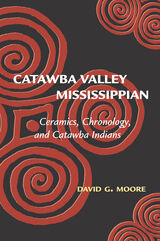 Catawba Valley Mississippian: Ceramics, Chronology, and Catawba Indians
David G. Moore
University of Alabama Press, 2002 An excellent example of ethnohistory and archaeology working together, this model study reveals the origins of the Catawba Indians of North Carolina
By the 18th century, the modern Catawba Indians were living along the river and throughout the valley that bears their name near the present North Carolina-South Carolina border, but little was known of their history and origins. With this elegant study, David Moore proposes a model that bridges the archaeological record of the protohistoric Catawba Valley with written accounts of the Catawba Indians from the 17th, 18th, and 19th centuries, thus providing an ethnogenesis theory for these Native Americans.
Because the Catawba Confederacy had a long tradition of pottery making, dating ceramics and using them for temporal control was central to establishing a regional cultural chronology. Moore accomplishes this with a careful, thorough review and analysis of disparate data from the whole valley. His archaeological discoveries support documentary evidence of 16th century Spaniards in the region interacting with the resident Indians. By tracking the Spanish routes through the Catawba River valley and comparing their reported interactions with the native population with known archaeological sites and artifacts, he provides a firm chronological and spatial framework for Catawba Indian prehistory.
With excellent artifact photographs and data-rich appendixes, this book is a model study that induces us to contemplate a Catawba genesis and homeland more significant than traditionally supposed. It will appeal to professional archaeologists concerned with many topics—Mississippian, Lamar, early historic Indians, de Soto, Pardo, and chiefdom studies—as well as to the broader public interested in the archaeology of the Carolinas.
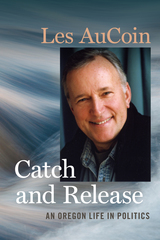 Catch and Release: An Oregon Life in Politics
Les AuCoin
Oregon State University Press, 2019 In 1974, at the age of thirty-two, Les AuCoin became the first Democrat to win a US House seat in Oregon’s First District. He was one of the post-Watergate reformers who shook up an insular, autocratic Congress and led fights for affordable housing, “trickle-up” economics, wilderness protection, abortion rights, and nuclear arms control. In the 1980s, the Oregonian called him “the most powerful congressman in Oregon.”
In this compelling collection of life stories, AuCoin traces his unlikely rise from a fatherless childhood in Central Oregon to the top ranks of national power. Then came a painful defeat in one of the most controversial races in US Senate history, against incumbent Bob Packwood.
A fly fisher, AuCoin uses “catch and release” as a metaphor for succeeding and letting go of loss with dignity and equanimity. His memories are in turn funny, suspenseful, and revealing. AuCoin takes us to the Kremlin, pre-industrial China, the Arctic National Wildlife Refuge, and into the tortuous politics of the Northwest spotted owl crisis. He interacted with world figures like Mikhail Gorbachev, Ronald Reagan, House Speakers Tip O’Neill and Jim Wright, and Oregon legends Tom McCall and Mark Hatfield. Closer to home, AuCoin allied himself with activists like Sidney Lasseigne of the Newport Fishermen’s Wives.
Catch and Release offers readers a revealing glimpse behind the scenes of congressional life, as lived by the 535 souls who inhabit the US House and Senate—including the author, who assesses his own strengths and foibles with humility and candor.
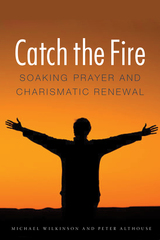 Catch the Fire: Soaking Prayer and Charismatic Renewal
Michael Wilkinson
Northern Illinois University Press, 2014 A recent phenomenon of charismatic renewal took place in Toronto in the mid-1990s. Commonly known as the “Toronto Blessing” and operated by the former Vineyard Church leaders John and Carol Arnott, the renewal was defined by reports of uncontrollable laughter, weeping, speaking in tongues, animal noises, and falling on the floor during worship. Sympathetic Christians embraced these practices while others who believed that this form of worship boarded on spectacle rejected them. By the end of the 1990s most people thought that the renewal was over.
Yet, in the first decade of the 21st century, the authors—a sociologist and a theologian—heard rumors that the Toronto church, now known as “Catch the Fire,” was still holding mass meetings with upwards of 2,000 people in attendance. They also learned of an emerging practice of “soaking prayer,” an adaption of Pentecostal-charismatic prayer that, participants and leaders claim, facilitates and expands the reception of divine love in order to give it away in acts of forgiveness, reconciliation, compassion, and benevolence. Soaking, the authors reveal, is a metaphor for practices like resting in the Spirit, prayer for spiritual gifts, healing, prophecy, impartation, and supports overall charismatic spirituality. Attending “Catch the Fire” conferences, churches, and house meetings in the United States, Canada, Britain, Australia, and New Zealand, Wilkinson and Althouse observed first-hand how people soak, what it means to soak, and why soaking is considered an important practice among charismatics.
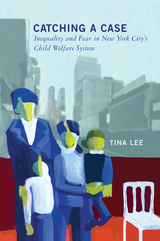 Catching a Case: Inequality and Fear in New York City's Child Welfare System
Lee, Tina
Rutgers University Press, 2016 Influenced by news reports of young children brutalized by their parents, most of us see the role of child services as the prevention of severe physical abuse. But as Tina Lee shows in Catching a Case, most child welfare cases revolve around often ill-founded charges of neglect, and the parents swept into the system are generally struggling but loving, fighting to raise their children in the face of crushing poverty, violent crime, poor housing, lack of childcare, and failing schools. Lee explored the child welfare system in New York City, observing family courts, interviewing parents and following them through the system, asking caseworkers for descriptions of their work and their decision-making processes, and discussing cases with attorneys on all sides. What she discovered about the system is troubling. Lee reveals that, in the face of draconian budget cuts and a political climate that blames the poor for their own poverty, child welfare practices have become punitive, focused on removing children from their families and on parental compliance with rules. Rather than provide needed help for families, case workers often hold parents to standards almost impossible for working-class and poor parents to meet. For instance, parents can be accused of neglect for providing inadequate childcare or housing even when they cannot afford anything better. In many cases, child welfare exacerbates family problems and sometimes drives parents further into poverty while the family court system does little to protect their rights. Catching a Case is a much-needed wake-up call to improve the child welfare system, and to offer more comprehensive social services that will allow all children to thrive.
 Catching Babies: The Professionalization of Childbirth, 1870-1920
Charlotte Borst
Harvard University Press, 1995 Childbirth is a quintessential family event that simultaneously holds great promise and runs the risk of danger. By the late nineteenth century, the birthing room had become a place where the goals of the new scientific professional could be demonstrated, but where traditional female knowledge was in conflict with the new ways. Here the choice of attendants and their practices defined gender, ethnicity, class, and the role of the professional.
Using the methodology of social science theory, particularly quantitative statistical analysis and historical demography, Charlotte Borst examines the effect of gender, culture, and class on the transition to physician-attended childbirth. Earlier studies have focused on physician opposition to midwifery, devoting little attention to the training for and actual practice of midwifery. As a result, until now we knew little about the actual conditions of the midwife's education and practice.
Catching Babies is the first study to examine the move to physician-attended birth within the context of a particular community. It focuses on four representative counties in Wisconsin to study both midwives and physicians within the context of their community. Borst finds that midwives were not pushed out of practice by elitist or misogynist obstetricians. Instead, their traditional, artisanal skills ceased to be valued by a society that had come to embrace the model of disinterested, professional science. The community that had previously hired midwives turned to physicians who shared ethnic and cultural values with the very midwives they replaced.
 Catching Hell from All Quarters: Anti-Klan Activists in Interwar Missouri
Sean Rost
University of Missouri Press, 2025 In Catching Hell from All Quarters Sean Rost works to invert the traditional history of what has been termed the second Ku Klux Klan (1915-1930) by examining the efforts of anti-Klan activists, in particular in Missouri, who challenged the growth, recruitment, and political ambitions of the Invisible Empire during the 1920s and 1930s through editorial crusades, educational campaigns, public pressure on elected officials, political investigations, and in some cases counter-vigilantism.
Although anit-Klan activism was nation-wide, Missouri provides an excellent case study for the rise and fall of the second Klan as the organization gained a large membership and obtained a notable level of political power in some parts of the Show-Me State. Significantly, despite membership totals comparable to that of neighboring states, the Missouri Klan did not translate its recruiting success into substantial influence and political power due to significant local opposition from anti-Klan activists.
Catching Hell from All Quarters addresses key questions about the legacy of the Klan, both in Missouri and nationwide. Traditional scholarship on the second Klan stops at the hooded order’s decline at the start of the Great Depression, thus neatly splitting that era’s Klan from the Civil Rights Movement era Klan of the 1950s and 1960s. This book, however, draws direct connections between both eras by highlighting continued anti-Klan activism as well as several far-right, fascist, and white supremacist organizations that found support among Klan members (both active and former) during the 1930s and 1940s and aided not only in the Klan’s re-emergence after World War II but also influenced present-day hate groups.
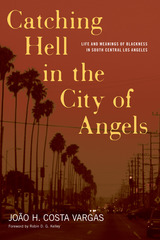 Catching Hell In The City Of Angels: Life And Meanings Of Blackness In South Central Los Angeles
João H. Costa Vargas
University of Minnesota Press, 2006 Since the 1980s, Los Angeles has become the most racially and economically divided city in the United States. In the poorest parts of South Central Los Angeles, buildings in disrepair—the legacy of racial unrest. Moving beyond stereotypes of South Central's predominantly African American residents, João H. Costa Vargas recounts his almost two years living in the district. Personal, critical, and disquieting, Catching Hell in the City of Angels examines the ways in which economic and social changes in the twentieth century have affected the black community, and powerfully conveys the experiences that bind and divide its people.
Through compelling stories of South Central, including his own experience as an immigrant of color, Vargas presents portraits of four groups. He talks daily with women living in a low-income Watts apartment building; works with activists in a community organization against police brutality; interacts with former gang members trying to maintain a 1992 truce between the Bloods and the Crips; and listens to amateur jazz musicians who perform in a gentrified section of the neighborhood. In each case he describes the worldviews and the definitions of “blackness” these people use to cope with oppression. Vargas finds, in turn, that blackness is a form of racial solidarity, a vehicle for the renewal of African American culture, and a political expression of revolutionary black nationalism.
Vargas reveals that the social fault lines in South Central reflect both contemporary disparities and long-term struggles. In doing so, he shows both the racialized power that makes “blackness” a prized term of identity and the terrible price that African Americans have paid for this emphasis. Ultimately, Catching Hell in the City of Angels tells the story of urban America through the lives of individuals from diverse, overlapping, and vibrant communities.
João H. Costa Vargas is assistant professor in the Center for African and African American Studies and the department of anthropology at the University of Texas, Austin.
Robin D. G. Kelley is the William B. Ransford Professor of Cultural and Historical Studies at Columbia University. He is the author of numerous books, including Yo Mama's Disfunktional: Fighting the Culture Wars in Urban America.
Catching History on the Wing: Race, Culture and Globalisation
A. Sivanandan
Pluto Press, 2008 A. Sivanandan is a highly influential thinker on race, racism, globalisation and resistance. Since 1972, he has been the director of the Institute of Race Relations and the editor of Race & Class, which set the policy agenda on ethnicity and race in the UK and worldwide. Sivanandan has been writing for over forty years and this is the definitive collection of his work.
The articles selected span his entire career and are chosen for their relevance to today's most pressing issues. Included is a complete bibliography of Sivanandan’s writings, and an introduction by Colin Prescod (chair of the IRR), which sets the writings in context.
This book is highly relevant to undergraduate politics students and anyone reading or writing on race, ethnicity and immigration.
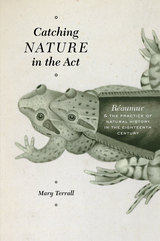 Catching Nature in the Act: Réaumur and the Practice of Natural History in the Eighteenth Century
Mary Terrall
University of Chicago Press, 2014 Natural history in the eighteenth century was many things to many people—diversion, obsession, medically or economically useful knowledge, spectacle, evidence for God’s providence and wisdom, or even the foundation of all natural knowledge. Because natural history was pursued by such a variety of people around the globe, with practitioners sharing neither methods nor training, it has been characterized as a science of straightforward description, devoted to amassing observations as the raw material for classification and thus fundamentally distinct from experimental physical science. In Catching Nature in the Act, Mary Terrall revises this picture, revealing how eighteenth-century natural historians incorporated various experimental techniques and strategies into their practice.
At the center of Terrall’s study is René-Antoine Ferchault de Réaumur (1683–1757)—the definitive authority on natural history in the middle decades of the eighteenth century—and his many correspondents, assistants, and collaborators. Through a close examination of Réaumur’s publications, papers, and letters, Terrall reconstructs the working relationships among these naturalists and shows how observing, collecting, and experimenting fit into their daily lives. Essential reading for historians of science and early modern Europe, Catching Nature in the Act defines and excavates a dynamic field of francophone natural history that has been inadequately mined and understood to date.
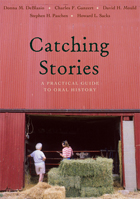 Catching Stories: A Practical Guide to Oral History
Donna M. DeBlasio
Ohio University Press, 2009 In neighborhoods, schools, community centers, and workplaces, people are using oral history to capture and collect the kinds of stories that the history books and the media tend to overlook: stories of personal struggle and hope, of war and peace, of family and friends, of beliefs, traditions, and values—the stories of our lives. Catching Stories: A Practical Guide to Oral History is a clear and comprehensive introduction for those with little or no experience in planning or undertaking oral history projects. Opening with the key question, “Why do oral history?” the guide outlines the stages of a project from idea to final product—planning and research, the interviewing process, basic technical principles, and audio and video recording techniques. The guide covers interview transcribing, ethical and legal issues, archiving, funding sources, and sharing oral history with audiences. Intended for teachers, students, librarians, local historians, and volunteers as well as individuals, Catching Stories is the place to start for anyone who wants to document the memories and collect the stories of community or family.
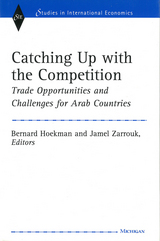 Catching Up with the Competition: Trade Opportunities and Challenges for Arab Countries
Bernard Hoekman and Jamel Zarrouk, Editors
University of Michigan Press, 2000 At a time when countries in the Middle East and North Africa (MENA) are joining the World Trade Organization, the lack of an economically sound analysis of trade policies in the region is especially notable. This volume remedies the situation by bringing together a distinguished group of applied trade economists to provide a broad view of the state of trade in and among the region's nations. The contributors provide original empirical analyses on key reform issues, and their work reflects deep knowledge of government concerns and policies.
Part 1 sets the scene by comparing the performance of the MENA region with the rest of the world on a large number variables and indicators. Part 2 contains a number of CGE model-based analyses of trade policy reform options. Part 3 focuses on specific policy areas: standards as nontariff barriers and red tape, trade facilitation, an assessment of the impact of protecting intellectual property using partial equilibrium techniques, and a review of the existing Euro-Med agreements. Part 4 discusses how the region could benefit from WTO membership and from changing the existing regional integration schemes into arrangements that help promote a growth enhancing reform agenda.
The volume will be essential reading for economists and policymakers working in and with the MENA nations, as well as officials at the multilateral and regional institutions.
Contributors are A. Halis Akder, Benita Cox, Dean De Rosa, Hana'a Kheir El Din, Sherine El Ghoneim, Oleh Havrylyshyn, Bernard Hoekman, Denise Konan, Peter Kunzel, Will Martin, Keith Maskus, Mustapha Nabli, Thomas Rutherford, Elisabet Rutstrom, David Tarr, Subidey Togan, L. Alan Winters, Alexander Yeats, and Jamel Zarrouk.
Bernard Hoekman is an Economist with the Development Research Group's Trade team of the World Bank. Jamel Zarrouk is an Economist with the Arab Monetary Fund.
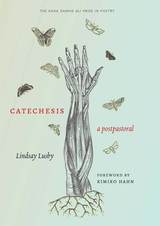 Catechesis: A Postpastoral
Lindsay Lusby
University of Utah Press, 2019 Winner of the 2018 Agha Shahid Ali Prize in Poetry
“A girl has two choices: / to be a tree or / to be the forest.” Catechesis combines Grimm fairy tales with horror movies and the Book of Revelation to construct a vision of the dangers and apocalyptic transformations inherent in girlhood. This lyric lore, which includes curious diagrams and collages of the botanical and the anatomical, contains hidden instructions to prepare girls for the hazards ahead.
In retelling lore alongside other Grimm-style stories, the poet turns horror classics The Silence of the Lambs and Alien into macabre fairy tales in their own right. Herein lurks violence and decay, but also a wild, overgrown beauty. Mothers and fathers are as much a part of this treacherous landscape as the carnivorous flora and shape-shifting fauna—and their effects are just as devastating. Framing all of this within biblical language and motifs gives these fabulist poems an ominous sense of urgency. Catechesis is a hybrid collection of textual and visual poems that examine belief and obsession. It explores how beauty leads to danger and danger births another kind of beauty, in a cycle of creation and destruction.
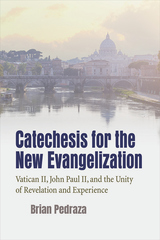 Catechesis for the New Evangelization: Vatican II, John Paul II, and the Unity of Revelation and Experience
Brian Pedraza
Catholic University of America Press, 2020 Popes Francis, Benedict XVI, and John Paul II have called the present a time of New Evangelization for the Church and have stressed the importance of catechesis for this mission. John Paul II claimed that this renewal of the Church’s mission is grounded in the teachings of the Second Vatican Council. Nevertheless, approaches to catechesis in the conciliar and postconciliar era have varied greatly, as evidenced by the shifts in catechetical practice effected by the modern catechetical movement. Just as the dominant forms of theology changed from neo-scholastic to anthropological approaches so, too, did catechesis move from catechism-based approaches to more anthropological models based upon human experience.
In light of this context, Catechesis for the New Evangelization examines the theological foundations of catechesis in the Church’s understanding of divine revelation and its reception by the human person, especially as found in the conciliar constitutions, Dei Verbum and Gaudium et Spes. After drawing norms on divine revelation from these documents, it traces the history of the modern catechetical movement in order to compare this history with the conciliar norms, highlighting the renewal’s strengths and weaknesses.
These steps prepare the way for the main part of the book: an examination of the anthropology of Karol Wojtyła/Pope John Paul II. Ultimately, his anthropology provides an understanding of the person that can unite divine revelation and human experience in a way that takes what is best from the modern catechetical movement, while developing the ministry in a way that can be fruitful for the New Evangelization.
Pedraza’s book is not only an incisive look at modern catechetical history and theory. It also touches upon some of the most important theological topics of the past century, including the neo-scholastic crisis, the proper interpretation of the Council, the relationship of nature and grace, and the modern understanding of the imago dei, with the research and competency appropriate for scholarly interest and the accessibility needed for educated practitioners in catechesis.
A Catechism For Business
Andrew V. Abela
Catholic University of America Press, 2014 A Catechism for Business presents the teachings of the Catholic Church as they relate to more than one hundred specific and challenging moral questions that have been asked by business leaders. Andrew V. Abela and Joseph E. Capizzi have assembled the relevant quotations from recent Catholic social teaching as responses to these questions. Questions and answers are grouped under major topics such as marketing, finance, and investment. Business ethics questions can be too subtle for definitive yes / no answers, so the book offers no more and no less than church teaching on each particular question. Where the church has offered definitive answers, the book provides them. When the church has not, the book offers guidelines for reflection and insights into what one should consider in given situations.
A Catechism for Business
Andrew V. Abela
Catholic University of America Press, 2016 This second edition streamlines some of the editing from the first addition, and more importantly, includes material from Pope Francis's encyclical, Laudato Si, and his apostolic exhortation, Evangelii Gaudium. A Catechism for Business presents the teachings of the Catholic Church as they relate to more than one hundred specific and challenging moral questions as they have been asked by business leaders. Andrew V. Abela and Joseph E. Capizzi have assembled the relevant quotations from recent Catholic social teaching as responses to these questions. Questions and answers are grouped together under major topics such as marketing, finance and investment. The book's easy-to-use question and answer approach invites quick reference for tough questions and serves as a basis for reflection and deeper study in the rich Catholic tradition of social doctrine.
A Catechism for Business: Tough Ethical Questions & Insights from Catholic Teaching, Third Edition
Andrew V. Abela
Catholic University of America Press, 2021 In the four years since the publication of the second edition of A Catechism for Business, Pope Francis' enormous contributions to spreading the good news of the gospel has led to his promulgation of two apostolic exhortations and now a new encyclical, Fratelli tutti, focusing on human fraternity and solidarity. The vibrant tradition of Catholic thinking on social issues is unparalleled in its capacity to help guide human beings towards individual and communal flourishing. The context of a world emerging from a pandemic and new challenges to Christian faith and practice beckon for a refreshed look at pressing questions. Editors Andrew Abela and Joseph Capizzi offer the updated third edition which will incorporate material from both of these apostolic exhortations and the new encyclical.
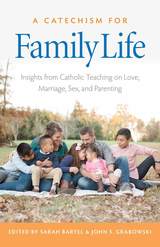 A Catechism for Family Life
Sarah Bartel
Catholic University of America Press, 2018 The purpose of A Catechism for Family Life: Insights from Catholic Teaching on Love, Marriage, Sex, and Parenting is to present the teachings of the Catholic Church as they relate to specific questions in marriage and family life. Many Catholics are under-catechized and have trouble both understanding and articulating Church teaching on sexuality and marriage to an increasingly challenging culture. Pope Francis, along with the fathers of the two recent Synods on the Family, have called for better formation for those who work in the area of marriage and family life (see Amoris Laetitia, 202).
To address this need, we gathered pertinent questions facing men, women, and pastoral workers in marriage and family life. We then found passages relevant to these questions by researching Church documents on marriage and family from the past one hundred years. These include papal encyclicals, apostolic exhortations, and addresses, Vatican II documents, and the Catechism of the Catholic Church.
Mainstream media coverage of Church events and Church teaching leads many to misunderstand Catholic positions on marriage and family life. While the Catholic Church has developed a rich, detailed, and positive teaching on marriage, family, and sexuality, many Catholics do not have access to this teaching, buried as it is in lengthy Church documents which many find intimidating. Finding the relevant teaching to address specific questions is not always a simple task, either. This book’s main contribution is to present Church teaching relevant to marriage and family in one volume clearly organized by topic and question.
 A Catechism for Health Care: Insights from Catholic Teaching on Human Life, Medical Ethics, and Love of Neighbor
Stephen Napier
Catholic University of America Press, 2024 The Catholic Church’s teachings on ethical issues arising in healthcare delivery and biomedical science are distributed across a plethora of different places ranging from papal allocutions, encyclicals, instructions by the Congregation for the Doctrine of the Faith, and guidance documents authored by various congregations of bishops. Furthermore, they are distributed throughout time ranging from, for example, the Didache (or teaching of the 12 apostles, circa 1st Century), to Pope Pius XII’s address in 1954 addressing ethical issues in transplantation, and onto the 2009 instruction entitled Dignitas personae. It is difficult for a wider audience to make sense of these sources on the various issues arising in healthcare delivery and scientific research, but the editors of A Catechism for Health Care have collated them in a way that makes them easier to understand
The purpose of this book is to present the teachings of the Catholic Church as they pertain to ethical issues arising in the healthcare and biomedical sciences. The premise of the project is that the Catholic Church’s teaching speaks in an accessible way to a wide range of people concerned about healthcare ethics. It is important to present these teachings concisely. The book is ordered around numerous questions concerning the most common practices in health care that have ethical dimensions. It then provides concise answers to these questions as are found in various magisterial Church documents. These answers are refreshingly clear and to the point.
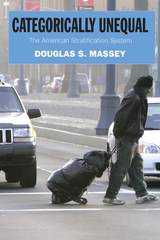 Categorically Unequal: The American Stratification System
Douglas S. Massey
Russell Sage Foundation, 2007 The United States holds the dubious distinction of having the most unequal income distribution of any advanced industrialized nation. While other developed countries face similar challenges from globalization and technological change, none rivals America's singularly poor record for equitably distributing the benefits and burdens of recent economic shifts. In Categorically Unequal, Douglas Massey weaves together history, political economy, and even neuropsychology to provide a comprehensive explanation of how America's culture and political system perpetuates inequalities between different segments of the population. Categorically Unequal is striking both for its theoretical originality and for the breadth of topics it covers. Massey argues that social inequalities arise from the universal human tendency to place others into social categories. In America, ethnic minorities, women, and the poor have consistently been the targets of stereotyping, and as a result, they have been exploited and discriminated against throughout the nation's history. African-Americans continue to face discrimination in markets for jobs, housing, and credit. Meanwhile, the militarization of the U.S.-Mexican border has discouraged Mexican migrants from leaving the United States, creating a pool of exploitable workers who lack the legal rights of citizens. Massey also shows that women's advances in the labor market have been concentrated among the affluent and well-educated, while low-skilled female workers have been relegated to occupations that offer few chances for earnings mobility. At the same time, as the wages of low-income men have fallen, more working-class women are remaining unmarried and raising children on their own. Even as minorities and women continue to face these obstacles, the progressive legacy of the New Deal has come under frontal assault. The government has passed anti-union legislation, made taxes more regressive, allowed the real value of the federal minimum wage to decline, and drastically cut social welfare spending. As a result, the income gap between the richest and poorest has dramatically widened since 1980. Massey attributes these anti-poor policies in part to the increasing segregation of neighborhoods by income, which has insulated the affluent from the social consequences of poverty, and to the disenfranchisement of the poor, as the population of immigrants, prisoners, and ex-felons swells. America's unrivaled disparities are not simply the inevitable result of globalization and technological change. As Massey shows, privileged groups have systematically exploited and excluded many of their fellow Americans. By delving into the root causes of inequality in America, Categorically Unequal provides a compelling argument for the creation of a more equitable society. A Volume in the Russell Sage Foundation's Centennial Series
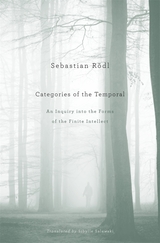 Categories of the Temporal: An Inquiry into the Forms of the Finite Intellect
Sebastian Rödl
Harvard University Press, 2012 The publication of Frege’s Begriffsschrift in 1879 forever altered the landscape for many Western philosophers. Here, Sebastian Rödl traces how the Fregean influence, written all over the development and present state of analytic philosophy, led into an unholy alliance of an empiricist conception of sensibility with an inferentialist conception of thought.
According to Rödl, Wittgenstein responded to the implosion of Frege’s principle that the nature of thought consists in its inferential order, but his Philosophical Investigations shied away from offering an alternative. Rödl takes up the challenge by turning to Kant and Aristotle as ancestors of this tradition, and in doing so identifies its unacknowledged question: the relation of judgment and truth to time. Rödl finds in the thought of these two men the answer he urges us to consider: the temporal and the sensible, and the atemporal and the intelligible, are aspects of one reality and cannot be understood independently of one another. In demonstrating that an investigation into the categories of the temporal can be undertaken as a contribution to logic, Rödl seeks to transform simultaneously our philosophical understanding of both logic and time.
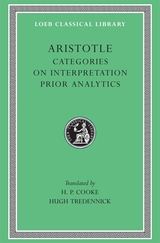 Categories. On Interpretation. Prior Analytics
Aristotle
Harvard University Press The philosopher’s toolkit.
Aristotle, great Greek philosopher, researcher, reasoner, and writer, born at Stagirus in 384 BC, was the son of a physician. He studied under Plato at Athens and taught there (367–347); subsequently he spent three years at the court of a former pupil in Asia Minor. After some time at Mitylene, in 343–342 he was appointed by King Philip of Macedon to be tutor of his teen-aged son Alexander. After Philip’s death in 336, Aristotle became head of his own school (of “Peripatetics”), the Lyceum at Athens. Because of anti-Macedonian feeling there after Alexander’s death in 323, he withdrew to Chalcis in Euboea, where he died in 322.
Nearly all the works Aristotle prepared for publication are lost; the priceless ones extant are lecture-materials, notes, and memoranda (some are spurious). They can be categorized as follows:
I Practical: Nicomachean Ethics; Great Ethics (Magna Moralia); Eudemian Ethics; Politics; Economics (on the good of the family); On Virtues and Vices.
II Logical: Categories; Analytics (Prior and Posterior); Interpretation; Refutations used by Sophists; Topica.
III Physical: Twenty-six works (some suspect) including astronomy, generation and destruction, the senses, memory, sleep, dreams, life, facts about animals, etc.
IV Metaphysics: on being as being.
V Art: Rhetoric and Poetics.
VI Other works including the Constitution of Athens; more works also of doubtful authorship.
VII Fragments of various works such as dialogues on philosophy and literature; and of treatises on rhetoric, politics, and metaphysics.
The Loeb Classical Library edition of Aristotle is in twenty-three volumes.
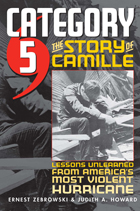 Category 5: The Story of Camille, Lessons Unlearned from America's Most Violent Hurricane
Ernest Zebrowski and Judith A. Howard
University of Michigan Press, 2005 ". . . the authors sound a pessimistic note about society's short-term memory in their sobering, able history of Camille" --Booklist
"This highly readable account aimed at a general audience excels at telling the plight of the victims and how local political authorities reacted. The saddest lesson is how little the public and the government learned from Camille. Highly recommended for all public libraries, especially those on the Gulf and East coasts."
—Library Journal online
As the unsettled social and political weather of summer 1969 played itself out amid the heat of antiwar marches and the battle for civil rights, three regions of the rural South were devastated by the horrifying force of Category 5 Hurricane Camille.
Camille's nearly 200 mile per hour winds and 28-foot storm surge swept away thousands of homes and businesses along the Gulf Coast of Louisiana and Mississippi. Twenty-four oceangoing ships sank or were beached; six offshore drilling platforms collapsed; 198 people drowned. Two days later, Camille dropped 108 billion tons of moisture drawn from the Gulf onto the rural communities of Nelson County, Virginia-nearly three feet of rain in 24 hours. Mountainsides were washed away; quiet brooks became raging torrents; homes and whole communities were simply washed off the face of the earth.
In this gripping account, Ernest Zebrowski and Judith Howard tell the heroic story of America's forgotten rural underclass coping with immense adversity and inconceivable tragedy.
Category 5 shows, through the riveting stories of Camille's victims and survivors, the disproportionate impact of natural disasters on the nation's poorest communities. It is, ultimately, a story of the lessons learned-and, in some cases, tragically unlearned-from that storm: hard lessons that were driven home once again in the awful wake of Hurricane Katrina.
"Emergency responses to Katrina were uncoordinated, slow, and--at least in the early days--woefully inadequate. Politicians argued about whether there had been one disaster or two, as if that mattered. And before the last survivors were even evacuated, a flurry of finger-pointing had begun. The question most neglected was: What is the shelf life of a historical lesson?"
Ernest Zebrowski is founder of the doctoral program in science and math education at Southern University, a historically black university in Baton Rouge, Louisiana, and Professor of Physics at Pennsylvania State University's Pennsylvania College of Technology. His previous books include Perils of a Restless Planet: Scientific Perspectives on Natural Disasters. Judith Howard earned her Ph.D. in clinical social work from UCLA, and writes a regular political column for the Ruston, Louisiana, Morning Paper.
"Category 5 examines with sensitivity the overwhelming challenges presented by the human and physical impacts from a catastrophic disaster and the value of emergency management to sound decisions and sustainability."
--John C. Pine, Chair, Department of Geography & Anthropology and Director of Disaster Science & Management, Louisiana State University
Catering an Affair
Alberta Skaggs
Southern Illinois University Press, 2018 The story of a woman simultaneously sustained and stifled by her affair, this book invites readers to ask how we come to be who we are and what it is exactly that we believe about ourselves. Skaggs investigates the heartbreaks we witness, the experiences we take into ourselves, and those we internalize through the pretense of avoidance. This book will leave readers feeling stronger and more capable.
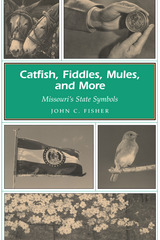 Catfish, Fiddles, Mules, and More: Missouri's State Symbols
John C. Fisher
University of Missouri Press, 2003 Throughout history symbols have been used in a variety of ways, often playing important roles. Each state has its own representative symbols—ranging from seals, flags, and buildings to rocks, minerals, plants, and animals—but how did they come to be chosen? In Catfish, Fiddles, Mules, and More, John C. Fisher provides an answer to that question for Missourians with a handy reference on the various official symbols of the state. Fisher explores each of the symbols adopted by the legislature as well as the state nickname and the legislative process in Missouri. A chapter is devoted to each symbol, providing information about when it was adopted, why it came to be considered as a state symbol, and how it relates to and is representative of the state. For those symbols that are items of economic importance to the state, the nature of their contribution is also explained. In the case of animal and plant symbols, their biology and where they occur within the state is presented. This important work, which includes thirty illustrations, will be helpful in acquainting Missourians and others interested in the state with not only the state’s symbols but the history of Missouri as well. Because the symbols were adopted over a long period of time, much of Missouri’s history has been included in the course of discussing them. Thoroughly researched and well written, Catfish, Fiddles, Mules, and More fills a niche for this kind of information in a way no other work has done. It will be valuable to anyone with an interest in Missouri, and it will be particularly useful to elementary and high school students in their study of the state.
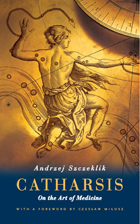 Catharsis: On the Art of Medicine
Andrzej Szczeklik
University of Chicago Press, 2005 The ancient Greeks used the term catharsis for the cleansing of both the body by medicine and the soul by art. In this inspiring book, internationally renowned cardiologist Andrzej Szczeklik draws deeply on our humanistic heritage to describe the artistry and the mystery of being a doctor. Moving between examples ancient and contemporary, mythological and scientific, Catharsis explores how medicine and art share common roots and pose common challenges.
The process of diagnosis, for instance, belongs to a world of magic and metaphor; the physician must embrace it like a poem or painting, with particular alertness and keen receptivity. Speculation on ways to slow aging through genetics, meanwhile, draws directly on the dream of immortality that artists and poets have nourished through the ages. And the concept of catharsis itself has made its way from the writings of Aristotle to today's growing interest in the benefits of music to health, especially in newborns. As Szczeklik explores such subjects as the mysteries of the heart rhythm, the secret history of pain relief, the enigmatic logic of epidemics, near-death or out-of-body experiences, and many more, he skillfully weaves together classical literature, the history of medicine, and moving anecdotes from his own clinical experiences. The result is a life-affirming book that will enrich the healing work of patients and doctors alike and make an invaluable contribution to our still-expanding vision of the art of medicine.
Cathedral Of The North
Connie Voisine
University of Pittsburgh Press, 2001 Set against a fantastic backdrop of religious imagery, myth and dreams, science fiction, and the stark realities of a northern factory town, Voisine's poems carefully detail the life of a common hero and his family.
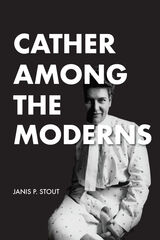 Cather Among the Moderns
Janis P. Stout
University of Alabama Press, 2019 A masterful study by a preeminent scholar that situates Cather as a visionary practitioner of literary modernism
Willa Cather is often pegged as a regionalist, a feminine and domestic writer, or a social realist. In Cather Among the Moderns, Janis P. Stout firmly situates Cather as a visionary practitioner of literary modernism, something other scholars have hinted at but rarely affirmed. Stout presents Cather on a large, dramatic stage among a sizable cast of characters and against a brightly lit social and historical backdrop, invoking numerous figures and instances from the broad movement in the arts and culture that we call modernism.
Early on, Stout addresses the matter of gender. The term “cross-dresser” has often been applied to Cather, but Stout sees Cather’s identity as fractured or ambiguous, a reading that links her firmly to early twentieth-century modernity. Later chapters take up topics of significance both to Cather and to twentieth-century American modernists, including shifting gender roles, World War I’s devastation of social and artistic norms, and strains in racial relations. She explores Cather’s links to a small group of modernists who, after the war, embraced life in New Mexico, a destination of choice for many artists, and which led to two of Cather’s most fully realized modernist novels, The Professor’s House and Death Comes for the Archbishop.
The last chapter addresses Cather’s place within modernism. Stout first places her in relation to Ezra Pound and T. S. Eliot with their shared ties to tradition even while making, sometimes startling, innovations in literary form, then showing parallels with William Faulkner with respect to economic disparity and social injustice.
Catherine: A Story
William Makepeace Thackeray
University of Michigan Press, 1999 The Thackeray Edition proudly announces two additions to its collection: Catherine and The Luck of Barry Lyndon. The Thackeray Edition is the first full-scale scholarly edition of William Makepeace Thackeray's works to appear in over seventy years, and the only one ever to be based on an examination of manuscripts and relevant printed texts. It is also a concrete attempt to put into practice a theory of scholarly editing that gives new insight into Thackeray's own compositional process. Written in 1839-40 for Fraser's Magazine, Catherine was Thackeray's first novel. Although originally intended as a spoof of the 1830s Newgate school of criminal romance, it has intrinsic merit of its own for its cynical narrator and roguish heroine, both of whom harbinger similar creations in Vanity Fair eight years later.
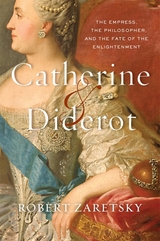 Catherine & Diderot: The Empress, the Philosopher, and the Fate of the Enlightenment
Robert Zaretsky
Harvard University Press, 2019 A dual biography crafted around the famous encounter between the French philosopher who wrote about power and the Russian empress who wielded it with great aplomb.
In October 1773, after a grueling trek from Paris, the aged and ailing Denis Diderot stumbled from a carriage in wintery St. Petersburg. The century’s most subversive thinker, Diderot arrived as the guest of its most ambitious and admired ruler, Empress Catherine of Russia. What followed was unprecedented: more than forty private meetings, stretching over nearly four months, between these two extraordinary figures. Diderot had come from Paris in order to guide—or so he thought—the woman who had become the continent’s last great hope for an enlightened ruler. But as it soon became clear, Catherine had a very different understanding not just of her role but of his as well. Philosophers, she claimed, had the luxury of writing on unfeeling paper. Rulers had the task of writing on human skin, sensitive to the slightest touch.
Diderot and Catherine’s series of meetings, held in her private chambers at the Hermitage, captured the imagination of their contemporaries. While heads of state like Frederick of Prussia feared the consequences of these conversations, intellectuals like Voltaire hoped they would further the goals of the Enlightenment.
In Catherine & Diderot, Robert Zaretsky traces the lives of these two remarkable figures, inviting us to reflect on the fraught relationship between politics and philosophy, and between a man of thought and a woman of action.
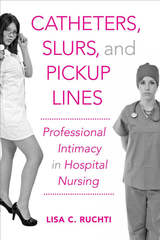 Catheters, Slurs, and Pickup Lines: Professional Intimacy in Hospital Nursing
Lisa C. Ruchti
Temple University Press, 2012 Every day, hospital nurses must negotiate intimate trust and intimate conflict in an effort to provide quality health care. However, interactions between nurses and patients—which often require issues of privacy—are sometimes made more uncomfortable with inappropriate behavior, as when a patient has a racist and/or sexist outburst. Not all nurses are prepared to handle such intimacy, but they can all learn how to "be caring."
In Catheters, Slurs, and Pickup Lines, Lisa Ruchti carefully examines this fragile relationship between intimacy and professional care, and provides a language for patients, nurses, and administrators to teach, conduct, and advocate for knowledgeable and skilled intimate care in a hospital setting. She also recommends best training practices and practical and effective policy changes to handle conflicts.
Ruchti shows that "caring" is not just a personality characteristic but is work that is structured by intersections of race, gender, and nationality.
 A Catholic Approach to Literacy for Struggling Students: Connecting Philosophy and Practice
Margaret G. Walsh
Catholic University of America Press, 2025 Discover effective literacy methods that align with a Christian anthropological view of the human person, as described by Aquinas and Aristotle and joined to research-based strategies. Through this work you will learn the most important pieces to building the skills needed for literacy acquisition. The aim of this book is to provide parents and educators with the foundational understanding of how a person learns to read in order to equip them with the tools needed to effectively implement a full reading curriculum. Included are intervention methods that can be used in conjunction with reading curriculum to improve reading outcomes for students who struggle.
The principles used in this book are research-based intervention methods that are blended with models of human development set out by Aristotle and St Thomas Aquinas. In the Summa Theologiae, St Thomas Aquinas writes about the faculties of the soul, relying on the foundational work of Aristotle in the De Anima. In Aquinas’ description of the powers of the soul, he outlines the way in which man comes to know, through the systematic use of his senses, imagination, memory, cogitative powers and finally his intellect and will. Effective intervention methods, as outlined in this work, align with the process Aquinas outlines. Understanding effective intervention strategies in light of the bigger picture of who man is and what he is made for, elevates learning and puts the development of literacy in a holistic perspective.
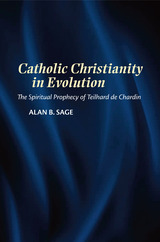 Catholic Christianity in Evolution: The Spiritual Prophecy of Teilhard de Chardin
Alan B. Sage
Sussex Academic Press, 2022 Christianity, and its theological and spiritual underpinnings, does not fulfil the needs of people living in a rapidly changing world. For all its good intention, the Catholic Church has failed to provide the necessary religious tools to its congregants and wider Catholic community to confront the ecological and environmental problems that confront mankind. This book sets out the required parameters of spirituality within an evolutionary world context, linking the theological with the practical, under the aegis of the Jesuit Pierre Teilhard de Chardin. His writings promote a concept of God at the centre of the world we live in a Christian way of living, fully engaged.
At the heart of Teilhard's world view are creation, evolution, and the environment. He provides the spiritual tools to understand a God that is, in real effect, our evolving world and our actions toward it. In looking after God's world through our daily commitment we meet the needs of the whole of creation. And this makes Christian faith truly meaningful and of direct relevance to our living in the world. Indeed, the second encyclical of Pope Francis (Laudato si') with its care for our common home message, is
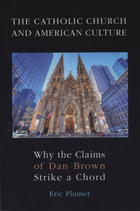 The Catholic Church and American Culture: Why the Claims of Dan Brown Strike a Chord
Eric A. Plumer
University of Scranton Press, 2009 More than fifty books debunking the religious claims of The Da Vinci Code have been published. Thisis the first book devoted to the fundamentally more interesting question: if those claims are so unfounded and erroneous, why have they resonated so strongly with millions of intelligent readers and filmgoers? From the sexual abuse scandal that shook the foundations of the Catholic Church to the 9/11 terrorist attacks that cast a cloud over a troubled nation, Eric Plumer’s The Catholic Church and American Culture: Why the Claims of the DaVinci Code Struck a Chord investigates the contemporary events, ideas, and movements that fostered Dan Brown’s unprecedented dominance of best-seller lists and dinner-table conversation. This ambitious book considers the feminist movement, radical individualism, twelve-step programs, the authority of science and psychology, and other cultural developments that paved the way for The Da Vinci Code craze. It also reflects on the recent publication of the Gnostic Gospels, including the Gospel of Mary Magdalene. Plumer’s engaging book is sure to stimulate further discussion about the role of religion in contemporary life.
The Catholic Church and Democracy in Chile and Peru
Michael Fleet
University of Notre Dame Press, 1997 Recent changes imposed by the Vatican may redefine the Chilean and Peruvian Church's involvement in politics and social issues. Fleet and Smith argue that the Vatican has been moving to restrict the Chilean and Peruvian Church's social and political activities. Fleet and Smith have gathered documentary evidence, conducted interviews with Catholic elites, and compiled surveys of lay Catholics in the region. The result will help chart the future of the Church and Chile and Peru.
The Catholic Church and Politics in Nicaragua and Costa Rica
Philip Williams
University of Pittsburgh Press, 1989 Unlike most recent studies of the Catholic Church in Latin America, Philip J. Williams analyzes the Church in two very dissimilar political contexts-Nicaragua and Costa Rica. Despite the obvious differences, Williams argues that in both cases the Church has responded to social change in remarkably similar fashion. The efforts of progressive clergy to promote change in both countries have been largely blocked by Church hierarchy, fearful that such change will threaten the Church's influence in society.
 The Catholic Church and the Nation-State: Comparative Perspectives
Paul Christopher Manuel, Lawrence C. Reardon, and Clyde Wilcox, Editors
Georgetown University Press, 2006 Presenting case studies from sixteen countries on five continents, The Catholic Church and the Nation-State paints a rich portrait of a complex and paradoxical institution whose political role has varied historically and geographically. In this integrated and synthetic collection of essays, outstanding scholars from the United States and abroad examine religious, diplomatic, and political actions—both admirable and regrettable—that shape our world. Kenneth R. Himes sets the context of the book by brilliantly describing the political influence of the church in the post-Vatican II era. There are many recent instances, the contributors assert, where the Church has acted as both a moral authority and a self-interested institution: in the United States it maintained unpopular moral positions on issues such as contraception and sexuality, yet at the same time it sought to cover up its own abuses; it was complicit in genocide in Rwanda but played an important role in ending the horrific civil war in Angola; and it has alternately embraced and suppressed nationalism by acting as the voice of resistance against communism in Poland, whereas in Chile it once supported opposition to Pinochet but now aligns with rightist parties. With an in-depth exploration of the five primary challenges facing the Church—theology and politics, secularization, the transition from serving as a nationalist voice of opposition, questions of justice, and accommodation to sometimes hostile civil authorities—this book will be of interest to scholars and students in religion and politics as well as Catholic Church clergy and laity. By demonstrating how national churches vary considerably in the emphasis of their teachings and in the scope and nature of their political involvement, the analyses presented in this volume engender a deeper understanding of the role of the Roman Catholic Church in the world.
 Catholic Culture in Early Modern England
Ronald Corthell
University of Notre Dame Press, 2007
This collection of essays explores the survival of Catholic culture in sixteenth- and seventeenth-century England—a time of Protestant domination and sometimes persecution. Contributors examine not only devotional, political, autobiographical, and other written texts, but also material objects such as church vestments, architecture, and symbolic spaces. Among the topics discussed in this volume are the influence of Latin culture on Catholic women, Marian devotion, the activities of Catholics in continental seminaries and convents, the international context of English Catholicism, and the influential role of women as maintainers of Catholic culture in a hostile religious and political environment.
Catholic Culture in Early Modern England makes an important contribution to the ongoing project of historians and literary scholars to rewrite the cultural history of post-Reformation English Catholicism.
“This collection contains cutting-edge research on a topic that has, until recently, been shockingly unrecognized and under-studied in the academic mainstream. This is a timely publication and one bound to prove a key point of reference in the future. “ —Alison Shell, University of Durham
“In recent years, English Catholicism has emerged as one of the most richly provocative and productive veins of scholarship and critical inquiry in Early Modern studies. Catholic Culture in Early Modern England shows why this is so. The editors have assembled a well-balanced and wide-ranging collection of essays that impressively demonstrates how the question of what counts as English Catholic experience opens up fresh perspectives on the nature and scope of confessional and political identity and, more broadly, on the meaning of culture itself in relation to the diaspora that left its mark not only on early modern religious and social space but also on gender roles, aesthetic practice, and the uses of symbolic forms.” —Lowell Gallagher, UCLA
“Catholic Culture in Early Modern England is a well-considered contribution to the ongoing re-evaluation of post-Reformation English Catholicism and early modern history. The judicious introduction appropriately locates the essays in the wider context of contemporary scholarship and places them in relation to each other. The essays themselves shed light on familiar figures (Queen Henrietta Maria, William Alabaster, John Gerard, William Allen, and Robert Persons) as well as on unfamiliar ones (Helena Wintour and Barbara Constable). Some illuminate Catholic institutions, cultural practices, and individual works. All in all, this is a timely, thoughtful, and valuable collection.” —Robert S. Miola, Gerard Manley Hopkins Professor, Loyola College
“English Catholics lived among their Protestant neighbors, but they had cultural practices that identified them as Catholics, gave them a sense of community, and quietly asserted their values. These articles do a fine job of opening up the mental and physical worlds they created and represented in their gardens, houses, needlework, conversion narratives and high literature. Tied to international Catholicism, English Catholics lived within a sophisticated culture made more complex by secrecy.” —Norman Jones, Utah State University
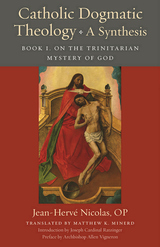 Catholic Dogmatic Theology: A Synthesis: Book 1, On the Trinitarian Mystery of God
Jean Herve Nicolas, OP
Catholic University of America Press, 2021 Every discipline, including theology, requires a synthetic overview of its acquisitions and open questions, a kind of “topography” to guide the new student and refresh the gaze of specialists. In his Synthèse dogmatique, Fr. Jean-Hervé Nicolas, OP (1910-2001) presents just such a map of Thomistic theology, focusing on the central topics of Dogmatic Theology: The One and Triune God, Christology, Mariology, Ecclesiology, the Sacraments, and the Last Things. Drawing on decades of research and teaching, Fr. Nicolas synthetically presents these topics from a faithfully Thomistic perspective. While broadly and genially engaging the theological literature of the 20th century, he nonetheless remains deeply indebted to the Thomistic school that would have formed him in his youth as a theologian. This provides the reader with an unparalleled theological vision, masterfully bringing forth, at once, what is new and what is classical.
Catholic Theology: A Dogmatic Synthesis will be published in English as a multi-volume work. In this volume, Fr. Nicolas discusses the nature of theological science and the mystery of the Triune God. At once historically-informed and speculatively-detailed, this volume carefully introduces the reader to classical Thomistic positions concerning the theological articulation of the Trinitarian mystery, including the topic of the divine missions, that is, the sending of the Son and the Spirit in the economy of salvation, thereby providing an important connection between the dogmatic portion of theology and its spiritual / moral concerns. Given the central luminosity of the Trinitarian mystery in the life of faith and in theology, this volume is a pivotal chapter in theological reflection. Indeed, objectively speaking, it is the most important discussion in all of theology.
Serving as a professor for decades, including at the University of Fribourg, Fr. Nicolas was at once a profound scholar and a masterful pedagogue. Gathering the work of a lifetime into a single pedagogical narrative, Fr. Nicolas’s Catholic Theology: A Dogmatic Synthesis provides a resource for students and scholars alike. In view of the hyper-specialization of theology today, this series of volumes provides readers with a synthetic and sapiential overview of the fundamentals of dogmatic theology from a robust and profound Thomistic perspective.
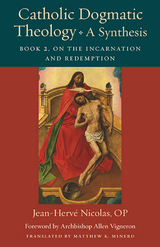 Catholic Dogmatic Theology: A Synthesis: Book 2: On the Incarnation and Redemption
Jean-Herve Nicolas
Catholic University of America Press, 2022 Every discipline, including theology, requires a synthetic overview of its acquisitions and open questions, a kind of "topography" to guide the new student and refresh the gaze of specialists. In his Synthèse dogmatique, Fr. Jean-Hervé Nicolas, OP (1910-2001) presents just such a map of Thomistic theology, focusing on the central topics of Dogmatic Theology: The One and Triune God, Christology, Mariology, Ecclesiology, the Sacraments, and the Last Things. Drawing on decades of research and teaching, Fr. Nicolas synthetically presents these topics from a faithfully Thomistic perspective. While broadly and genially engaging the theological literature of the 20th century, he nonetheless remains deeply indebted to the Thomistic school that would have formed him in his youth as a theologian. This provides the reader with an unparalleled theological vision, masterfully bringing forth, at once, what is new and what is classical.
Catholic Theology: A Dogmatic Synthesis will be published in English as a multi-volume work. In this volume, Fr. Nicolas discusses the mysteries of faith directly connected with the Redemptive Incarnation: the formation of orthodox Christological dogma in the course of the first centuries of the Church; the nature of the Hypostatic Union; the latter's effects in Christ's holiness, knowledge, and incarnate activity; the mariological mysteries connected to the divine maternity; the soteriological meaning of Christ's vicarious satisfaction; and the eschatological return of Christ in Glory.
Serving as a professor for decades, including at the University of Fribourg, Fr. Nicolas was at once a profound scholar and a masterful pedagogue. Gathering the work of a lifetime into a single pedagogical narrative, Fr. Nicolas's Catholic Theology: A Dogmatic Synthesis provides a resource for students and scholars alike. In view of the hyper-specialization of theology today, this series of volumes provides readers with a synthetic and sapiential overview of the fundamentals of dogmatic theology from a robust and profound Thomistic perspective.
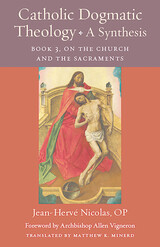 Catholic Dogmatic Theology: A Synthesis, Book 3: On the Church and the Sacraments
Jean-Herve Nicolas
Catholic University of America Press, 2024 Every discipline, including theology, requires a synthetic overview of its acquisitions and open questions, a kind of "topography" to guide the new student and refresh the gaze of specialists. In his Synthèse dogmatique, Fr. Jean-Hervé Nicolas, OP (1910-2001) presents just such a map of Thomistic theology, focusing on the central topics of Dogmatic Theology: The One and Triune God, Christology, Mariology, Ecclesiology, the Sacraments, and the Last Things. Drawing on decades of research and teaching, Fr. Nicolas synthetically presents these topics from a faithfully Thomistic perspective. While broadly and genially engaging the theological literature of the 20th century, he nonetheless remains deeply indebted to the Thomistic school that would have formed him in his youth as a theologian. This provides the reader with an unparalleled theological vision, masterfully bringing forth, at once, what is new and what is classical.
Catholic Theology: A Dogmatic Synthesis is being published in English as a multi-volume work. In this volume, Fr. Nicolas takes up the raison d’être for the mission of the Holy Spirit: the work of sanctification in and through the Church, the mystical body of Christ and sacrament of salvation. In the ecclesiology articulated in this volume, he presents a theology of the Church that is at once wholly Thomistic and also faithful to the great themes of the Second Vatican Council, drawing especially from the works of Journet, Congar, and Bouyer, in critical dialogue with other theologians of his day. He then presents a complete and detailed sacramental theology, both concerning the nature of the sacraments in general, as well as concerning each sacrament in particular, carefully striving to balance positive and scholastic theology.
Serving as a professor for decades, including at the University of Fribourg, Fr. Nicolas was at once a profound scholar and a masterful pedagogue. Gathering the work of a lifetime into a single pedagogical narrative, Fr. Nicolas's Catholic Theology: A Dogmatic Synthesis provides a resource for students and scholars alike. In view of the hyper-specialization of theology today, this series of volumes provides readers with a synthetic and sapiential overview of the fundamentals of dogmatic theology from a robust and profound Thomistic perspective.
 Catholic Dogmatic Theology: A Synthesis: Book 4: On Creation and the Creator
Jean-Herve Nicolas, OP, Jean-Herve
Catholic University of America Press, 2024 Every discipline, including theology, requires a synthetic overview of its acquisitions and open questions, a kind of "topography" to guide the new student and refresh the gaze of specialists. In his Synthèse dogmatique, Fr. Jean-Hervé Nicolas, OP (1910-2001) presents just such a map of Thomistic theology, focusing on the central topics of Dogmatic Theology: The One and Triune God, Christology, Mariology, Ecclesiology, the Sacraments, and the Last Things. Drawing on decades of research and teaching, Fr. Nicolas synthetically presents these topics from a faithfully Thomistic perspective. While broadly and genially engaging the theological literature of the 20th century, he nonetheless remains deeply indebted to the Thomistic school that would have formed him in his youth as a theologian. This provides the reader with an unparalleled theological vision, masterfully bringing forth, at once, what is new and what is classical.
Catholic Dogmatic Theology: A Synthesis is being published in English as a multi-volume work. In this volume, originally written as a supplement to his large Synthèse dogmatique, Fr. Nicolas returns to the theological topics of the One God and Creation. In a tightly unified presentation, he discusses: what we can naturally and supernaturally know about the One God; the nature of creation and providence; the nature of bodily creatures and their evolution; the nature and activity of spiritual creatures, men and angels alike; the problem of evil; and the relationship between the natural and the supernatural. By returning to these themes classically treated in the context of the Prima pars of the Summa theologiae, Fr. Nicolas presents his readers with the completion of his dogmatic synthesis.
Serving as a professor for decades, including at the University of Fribourg, Fr. Nicolas was at once a profound scholar and a masterful pedagogue. Gathering the work of a lifetime into a single pedagogical narrative, Fr. Nicolas's Catholic Dogmatic Theology: A Synthesis provides a resource for students and scholars alike. In view of the hyper-specialization of theology today, this series of volumes provides readers with a synthetic and sapiential overview of the fundamentals of dogmatic theology from a robust and profound Thomistic perspective.
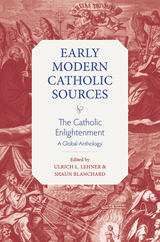 The Catholic Enlightenment: A Global Anthology
Ulrich L. Lehner
Catholic University of America Press, 2021 The Catholic Enlightenment: A Global Anthology presents readers with accessible, translated selections from the writings of fifteen major Catholic Enlightenment authors. These early modern authors include women, priests, lay intellectuals, and bishops. Twelve of these figures are being brought into English for the first time. The purpose of the volume is to provide students, scholars, and interested non-specialists with a single point of departure to delve into the primary sources of the Catholic Enlightenment. This anthology shows the geographical and intellectual diversity of the Catholic Enlightenment, while also demonstrating significant threads of commonality in intellectual orientation.
One strength of this volume is the geographical spread of the figures considered. Included are Catholic thinkers from England, the United States, Mexico, Spain, Portugal, Brazil, France, Portugal, and the Italian and German-speaking lands. Another strength of this volume is the breadth of subject matter treated – it features pastoral letters, mystical tracts, pedagogical treatises, political manifestos, and theological works. These texts elucidate Catholic Enlightenment views on topics such as the history of women’s education, liturgy and devotions, and the relationship between church and state.
The co-editors, Ulrich Lehner and Shaun Blanchard, have assembled a team of international scholars from Europe and the Americas for this exciting project. Lehner is one of the central scholars behind the renewed interest in the Catholic Enlightenment. He co-edits the volume, contributes to the introduction, and introduces and translates two significant German-speaking figures. Shaun Blanchard, who has recently published a monograph on radical Catholic Enlightenment figures, also co-edits, contributes selections from two English-speaking figures and has completed the first English translation of a section of Lodovico Muratori’s landmark On the Regulated Devotion of a Christian since 1789.
 The Catholic Ethic and the Spirit of Community
John E. Tropman
Georgetown University Press, 2002 Starting where Max Weber's The Protestant Ethic and the Spirit of Capitalism left off, John E. Tropman develops the idea that there is another religious-based ethic permeating society, a Catholic ethic. Where Weber proposed that a Protestant ethic supported the development of capitalism, Tropman argues that there is a Catholic ethic as well, and that it is more caring and community-oriented. Weber's notion of the Protestant ethic has become widely accepted, but until Tropman's work, beginning in the mid-1980s, there had been no discussion of another, religious-based ethic. He suggests that if the Protestant ethic is an "achievement" ethic, the Catholic ethic is a "helping" one. Tropman outlines a Catholic ethic that is distinctive in its sympathy and outreach toward the poor, and in its emphasis on family and community over economic success. This book fully explores the Catholic ethic and its differing focus by using both historical and survey research. It also points to the existence of other religious-based ethics. This clearly written book, employing the tools of both sociology and religious thought, will appeal to a wide audience, including students and scholars in disciplines informed by the influence of religion on politics and on social and economic behavior.
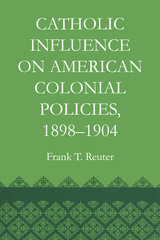 Catholic Influence on American Colonial Policies, 1898-1904
By Frank T. Reuter
University of Texas Press, 1967 At the close of the Spanish-American War the United States found itself in possession of a colonial empire. The role played by the American Catholic Church in influencing administrative policy for the new, and predominately Catholic, dependencies is the subject of this incisive study by Frank T. Reuter. Reuter discusses the centuries-old intricate involvement of the Spanish crown and the native Roman Catholic Church in the civil, social, and charitable institutions of Cuba, Puerto Rico, Guam, and the Philippines. He explores the attempts of United States officials to apply the traditional doctrine of separation of church and state in resolving the problems of a Church-run school system, the alleged desecration of native Catholic churches by American forces in the Philippines, the native antagonism toward the Spanish friars, and the disposition of Church property in dependencies with a deeply rooted correlation between the Catholic Church and the state. Recounting the development of the Catholic Church in America, which felt responsible for maintaining the islands’ religious structure after Spanish control was removed, Reuter sees the reaction of the Church to the war with Spain and to colonial policy in the early postwar period as voiced not by a monolithic political force, but by diverse spokesmen—in particular the unofficial voice of the Catholic press. He traces the growth of the Church in the United States from a disparate group of dioceses clinging to European backgrounds, disunited by a divided hierarchy, and attacked by the wave of the anti-Catholic, nativistic sentiments of the last two decades of the nineteenth century, to a church body unified by the problems in the colonies. Catholic opinion, although not utilized to its full political potential, achieved a common focus through the formation of the Federation of American Catholic Societies and the debate in Congress over the Philippine Government Bill. This study of American and native Catholic attitudes toward the formulation of United States policy in the insular dependencies and the attitude of the United States government toward the Catholic interests in the dependencies details the interplay of personalities and organizations: Presidents William McKinley and Theodore Roosevelt; William Howard Taft, civil governor of the Philippines; James Cardinal Gibbons, moderator between Catholic factions and official spokesman of the hierarchy to the Papacy and the United States government; Archbishop Placide L. Chapelle, apostolic delegate of the Vatican to the Philippines; Archbishop John Ireland, friend of President McKinley; the Philippine Commissions; and the Taft Mission to the Vatican in 1902.
 Catholic Intellectuals and the Challenge of Democracy
Jay P. Corrin
University of Notre Dame Press, 2002 Tracing the development of progressive Catholic approaches to political and economic modernization, Catholic Intellectuals and the Challenge of Democracy disputes standard interpretations of the Catholic response to democracy and modernity in the English-speaking world--particularly the conventional view that the Church was the servant of right-wing reactionaries and authoritarian, patriarchal structures.
Starting with the writings of Bishop Wilhelm von Ketteler of Germany, the Frenchman Frédérick Ozanam, and England's Cardinal Henry Edward Manning, whose pioneering work laid the foundation of the Catholic "third way," Corrin reveals a long tradition within Roman Catholicism that championed social activism. These visionary writers were the forerunners of Pope John XXIII's aggiornamento, a call for Catholics to broaden their historical perspectives and move beyond a static theology fixed to the past.
By examining this often overlooked tradition, Corrin attempts to confront the perception that Catholicism in the modern age has invariably been an institution of reaction that is highly suspicious of liberalism and progressive social reform. Catholic Intellectuals and the Challenge of Democracy charts the efforts of key Catholic intellectuals, primarily in Britain and the United States, who embraced the modern world and endeavored to use the legacies of their faith to form an alternative, pluralistic path that avoided both socialist collectivism and capitalism.
In this sweeping volume, Corrin discusses the influences of Cecil and G. K. Chesterton, H. A. Reinhold, Hilaire Belloc, and many others on the development of Catholic social, economic, and political thought, with a special focus on Belloc and Reinhold as representatives of reactionary and progressive positions, respectively. He also provides an in-depth analysis of Catholic Distributists' responses to the labor unrest in Britain prior to World War I and later, in the 1930s, to the tragedy of the Spanish Civil War and the forces of fascism and communism.
JAY P. CORRIN is Chairman and Professor of the Division of Social Science in the College of General Studies at Boston University.
----------
"A fascinating study of the distinctly varying perspectives of early Twentieth Century intellectuals consciously moved by Catholic principles. Corrin's careful analysis shows that thinkers like Belloc, Chesterton, H.A. Reinhold, and Luigi Sturzo defy easy categorization. An excellent guide to their different responses to issues like the Spanish Civil War." --John P. McCarthy, Professor of History and Director, Institute of Irish Studies, Fordham University
"Professor Corrin has produced an informative, balanced, and insightful study of the Catholic Church's liberal or progressive voices from the late 1800s to the mid-1900s. This book is required reading for anyone reflecting on how the Church should relate to the contemporary world."--Robert Krieg
"Professor Corrin's book is a significant contribution to our understanding of the Catholic reaction to the modern world, and particularly to the cataclysmic events of the 1920s and ‘30s. Corrin succeeds splendidly in bringing to light the activities of a small and oft-ignored group of progressive Catholics struggling against reactionary critics to show the world that Church teaching was not hostile to democracy. The author's wide reading in the sources and his clear explanatory style make this work necessary reading for anyone who wants to understand Catholic thought as an essential element in the entire fabric of intellectual discourse on the problems of democracy and of the poor." --Jose Sanchez, professor of history at Saint Louis University and the author of The Spanish Civil War as a Religious Tragedy
"Corrin presents a thoughtful and well-crafted book on political Catholicism, examining the relationship of the Catholic Church to modernity in general and to democracy in particular. This important study deserves a place in both university and seminary libraries and in any library with a Catholic constituency." --Library Journal
"Corrin meticulously follows the development of some of the most significant progressive American and European Catholic thinkers on politics and social issues. He reliably assesses their contributions, carefully establishing the background against which they acted." --Choice
"Corrin provides an invaluable survey of the main currents of modern Catholic social thought up to World War II. His book should be required reading for undergraduates and the general reader interested in social ethics or the history of ideas." --Christianity Today
"Corrin's study is thought provoking, carefully researched and documented throughout. It has much to teach, and all serious students of Catholic political history should have a look at it." --American Catholic Studies
"Social scientist Jay Corrin presents a historical and informative perspective on the progressive drive within the Catholic church between the late 1800s and the mid 1950s -- a time when anti-democratic forces appeared to hold sway." --Conscience
" … an interesting read …" --Catholic Historical Review
"Jay P. Corrin's new book is a major contribution to the study of Catholic intellectuals and their varying responses to these issues in the century following the French Revolution. Thoroughly researched, the book provides a comprehensive view of the Catholic intellectual scene in Europe and America through the prism of the personalities and events that shaped their thinking. Catholic intellectuals brings to light an important part of Catholic intellectual history that societies like the United States, in which Catholics comprise the largest single religious denomination, should revisit." --Crisis Magazine
"The subject itself is fascinating and the compendium of facts which Corrin assembles is a fitting testimony to the considerable historical research he has undertaken. As a historical document it has much to offer."--Review of Politics
"...splendid … a seminal contribution to Chesterton studies, and also to scholarship in Catholic intellectual history and in modern political thought. This volume … is researched deeply, written lucidly, and argued with an admirable fair mindedness.... Catholic Intellectuals and the Challenge of Democracy is an estimable, weighty work of scholarship that deserves careful, respectful reading." --The Chesterton Review
"[Corrin] has done a tremendous amount of research into primary sources, and the extensive documentation is impressive. He provides an engaging treatment of English Catholics in general and Belloc in particular, and splendid treatment of the Spanish Civil War. …[Corrin] has written a rewarding volume filled with colorful characters, insightful comments on well-known events, and revealing information on more obscure chapters in the tale of Catholic thinkers and democracy." --Theological Studies
Catholic Labor Movements in Europe
Paul Misner
Catholic University of America Press, 2015 Catholic Labor Movements in Europe narrates the history of industrial labor movements of Catholic inspiration in the period from the onset of World War I to the reconstruction after World War II. The stated goal of concerned Catholics in the 1920s and 1930s was to "rechristianize society." But dominant labor movements in many countries during this period consisted of socialist elements that viewed religion as an obstacle to social progress. It was a daunting challenge to build robust organizations of Catholics who identified themselves with the working classes and their struggles.
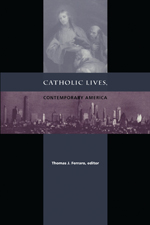 Catholic Lives, Contemporary America
Thomas J. Ferraro, ed.
Duke University Press, 1997 What does it mean to be—or to have been raised—Catholic in America today, now that formally nonpracticing Catholics outnumber the memberships of any other single denomination? Catholic Lives, Contemporary America is a collection of informed and spirited essays focusing on Catholic lay practices not commonly recognized or, at times, officially sanctioned. For the formidable array of scholars and writers gathered here, being Catholic is not simply a matter of going to confession or attending Mass, and Catholicism’s contributions to American cultural identity remain open to question. Edited and with an introduction by Thomas J. Ferraro, Catholic Lives, Contemporary America offers a banquet of essays and interviews, at once subtle and accessible, treating American Catholic lives and legacies with compassion and flair. Contributors. Patrick Allitt, Paul Crowley, Thomas J. Ferraro, James T. Fisher, Paul Giles, Mary Gordon, Stanley Hauerwas, Frank Lentricchia, Robert A. Orsi, Camille Paglia, David Plante, Richard Rodriguez, Kathy Rudy, Andrew Sullivan, Mary Jo Weaver
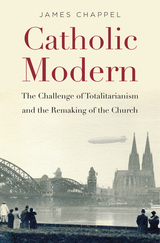 Catholic Modern: The Challenge of Totalitarianism and the Remaking of the Church
James Chappel
Harvard University Press, 2018 In 1900 the Catholic Church stood staunchly against human rights, religious freedom, and the secular state. According to the Catholic view, modern concepts like these, unleashed by the French Revolution, had been a disaster. Yet by the 1960s, those positions were reversed. How did this happen? Why, and when, did the world’s largest religious organization become modern?
James Chappel finds an answer in the shattering experiences of the 1930s. Faced with the rise of Nazism and Communism, European Catholics scrambled to rethink their Church and their faith. Simple opposition to modernity was no longer an option. The question was how to be modern. These were life and death questions, as Catholics struggled to keep Church doors open without compromising their core values. Although many Catholics collaborated with fascism, a few collaborated with Communists in the Resistance. Both strategies required novel approaches to race, sex, the family, the economy, and the state.
Catholic Modern tells the story of how these radical ideas emerged in the 1930s and exercised enormous influence after World War II. Most remarkably, a group of modern Catholics planned and led a new political movement called Christian Democracy, which transformed European culture, social policy, and integration. Others emerged as left-wing dissidents, while yet others began to organize around issues of abortion and gay marriage. Catholics had come to accept modernity, but they still disagreed over its proper form. The debates on this question have shaped Europe’s recent past—and will shape its future.
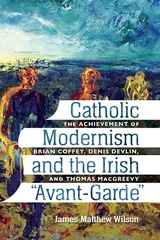 Catholic Modernism and the Irish "Avant-Garde:" The Achievement of Brian Coffey, Denis Devlin, and Thomas MacGreevey
James Matthew Wilson
Catholic University of America Press, 2023 This study constitutes the first-ever definitive account of the life and work of Irish modernist poets Thomas MacGreevy, Brian Coffey, and Denis Devlin. Apprenticed to the likes of W.B. Yeats, T.S. Eliot, James Joyce, and Samuel Beckett, all three writers worked at the center of modernist letters in England, France, and the United States, but did so from a distinctive perspective. All three writers wrote with a deep commitment to the intellectual life of Catholicism and saw the new movement in the arts as making possible for the first time a rich sacramental expression of the divine beauty in aesthetic form. MacGreevy spent his life trying to voice the Augustinian vision he found in The City of God. Coffey, a student of neo-Thomist philosopher Jacques Maritain, married scholastic thought and a densely wrought poetics to give form and solution to the alienation of modern life. Devlin contemplated the world with the eyes of Montaigne and the heart of Pascal as he searched for a poetry that could realize the divine presence in the experience of the modern person. Taken together, MacGreevy, Coffey, and Devlin exemplify the modern Catholic intellectual seeking to engage the modern world on its own terms while drawing the age toward fulfillment within the mystery and splendor of the Church. They stand apart from their Irish contemporaries for their religious seriousness and cosmopolitan openness of European modernism. They lay bare the theological potencies of modern art and do so with a sophistication and insight distinctive to themselves.
Although MacGreevy, Coffey, and Devlin have received considerable critical attention in the past, this is the first book to study their work comprehensively, from MacGreevy’s early poems and essays on Joyce and Eliot to Coffey’s essays in the neo-scholastic philosophy of science, and on to Devlin’s late poetic attempts to realize Dante’s divine vision in a Europe shattered by war and modern doubt.
 Catholic Moral Theology in the United States: A History
Charles E. Curran
Georgetown University Press, 2008 In this magisterial volume Charles E. Curran surveys the historical development of Catholic moral theology in the United States from its 19th century roots to the present day. He begins by tracing the development of pre-Vatican II moral theology that, with the exception of social ethics, had the limited purpose of training future confessors to know what actions are sinful and the degree of sinfulness. Curran then explores and illuminates the post-Vatican II era with chapters on the effect of the Council on the scope and substance of moral theology, the impact of Humanae vitae, Pope Paul VI's encyclical condemning artificial contraception, fundamental moral theology, sexuality and marriage, bioethics, and social ethics. Curran's perspective is unique: For nearly 50 years, he has been a major influence on the development of the field and has witnessed first-hand the dramatic increase in the number and diversity of moral theologians in the academy and the Church. No one is more qualified to write this first and only comprehensive history of Catholic moral theology in the United States.
 The Catholic Moral Tradition Today: A Synthesis
Charles E. Curran
Georgetown University Press, 1999 The Catholic tradition has always tried to explain its theology in a coherent and systematic way, but the great changes and tensions existing within Catholic moral theology today have made it difficult to develop systematic approaches to what was once called fundamental moral theology. Now a leading scholar active in this field for forty years offers a synthesis of Catholic moral theology set in the context of the broader Catholic tradition and the significant developments that have occurred since the Second Vatican Council. Charles E. Curran’s succinct, coherent account of his wide-ranging work in Catholic moral theology points out agreements, disagreements, and changes in significant aspects of the Catholic moral tradition. His systematic approach explores major topics in a logical development: the ecclesiological foundation and stance of moral theology; the person as moral subject and agent; virtues, principles and norms; conscience and decision making; and the role of the church as a teacher of morality. Curran’s work condenses and organizes a large amount of material to show that the Catholic theological tradition is in dialogue with contemporary life and thought while remaining conscious of its rich history. Of great interest to theologians for its broad synthetic scope, this book is also a thorough introduction to the Catholic moral tradition for students and interested readers, including non-Catholics.
 Catholic Pacifist: The Long and Lonely Quest of Gordon Zahn
Benjamin Peters
Catholic University of America Press, 2026 A study of the life and work of Gordon Zahn (1918-2007), one of the most significant and formative figures in the history of the US Catholic peace movement. During World War II, Zahn was one of only a handful of US Catholic conscientious objectors, an experience that first put him in contact with Dorothy Day and the Catholic Worker. Following the war, Zahn completed a PhD in sociology at The Catholic University of America where Paul Hanly Furfey’s “supernatural sociology” had a profound effect on him. After joining the faculty at Loyola University, Chicago, Zahn won a Fulbright year in Germany (1956-57) where he discovered the story of Franz Jägerstätter, the Austrian Catholic farmer, husband, and father who was beheaded by the Nazis in 1943 for refusing to participate in Hitler’s military. It was Zahn’s 1964 book In Solitary Witness that introduced Jägerstätter to an international audience and led to his beatification by Pope Benedict XVI in 2007. This work, along with Zahn’s several other books, secured his place as a leading intellectual in the Catholic peace movement. His work influenced the discussions of war and peace at the Second Vatican Council and he was enlisted as an expert witness during the drafting of the US Catholic Bishops’ pastoral letter on nuclear weapons, The Challenge of Peace (1983).
Zahn made one of the most intellectually developed cases in the US for "Catholic pacifism"—two terms that both Catholics and pacifists had long regarded as deeply incompatible. Forging a Catholic pacifist position led him to be far more perceptive and critical of US political and military institutions than most of fellow US Catholics. Ultimately, Zahn saw the Catholic Church as the only institution capable of resisting, and support those who resist, modern warfare and the modern war-making state. His traditional view of the Church grounded his claim that Catholics can be pacifist and his further assertion that the Church should serve as a “source of dissent” for Catholics and others, especially during times of war. While marginalized within the broader US Catholic intellectual community, Zahn found common cause with other Catholic luminaries who are now seen to be ahead of their time, including Dorothy Day, Thomas Merton, and Daniel Berrigan.
Gordon Zahn’s story serves as a template for telling the broader story of the US Catholic peace movement and the development of Catholic attitudes on war and conscientious objection that took place within the twentieth century.
 Catholic Progressives in England after Vatican II
Jay P. Corrin
University of Notre Dame Press, 2013 In Catholic Progressives in England after Vatican II, Jay P. Corrin traces the evolution of Catholic social and theological thought from the end of World War II through the 1960s that culminated in Vatican Council II. He focuses on the emergence of reformist thinking as represented by the Council and the corresponding responses triggered by the Church's failure to expand the promises, or expectations, of reform to the satisfaction of Catholics on the political left, especially in Great Britain. The resistance of the Roman Curia, the clerical hierarchy, and many conservative lay men and women to reform was challenged in 1960s England by a cohort of young Catholic intellectuals for whom the Council had not gone far enough to achieve what they believed was the central message of the social gospels, namely, the creation of a community of humanistic socialism.
This effort was spearheaded by members of the English Catholic New Left, who launched a path-breaking journal of ideas called Slant. What made Slant revolutionary was its success in developing a coherent philosophy of revolution based on a synthesis of the “New Theology” fueling Vatican II and the New Left’s Marxist critique of capitalism. Although the English Catholic New Left failed to meet their revolutionary objectives, their bold and imaginative efforts inspired many younger Catholics who had despaired of connecting their faith to contemporary social, political, and economic issues. Corrin’s analysis of the periodical and of such notable contributors as Terry Eagleton and Herbert McCabe explains the importance of Slant and its associated group within the context of twentieth-century English Catholic liberal thought and action.
"In Catholic Progressives in England after Vatican II, Jay P. Corrin situates the journal Slant within the broad sweep of reformist Catholic thinkers and actors across the twentieth century and into the twenty-first. Drawing upon an impressive range of primary and secondary sources, both scholarly and journalistic, Corrin illuminates the journal's pivotal role in English Catholic liberal thought and action and the impact its contributors' ideas continue to exert across the decades." —Steve Rosswurm, Lake Forest College
"This splendid book offers much more than the title suggests. To communicate an understanding of the radical English Catholics of the 1960s, the author presents an insightful study of English Catholicism and carefully documents that the great continental Catholic theologians and in particular the Second Vatican Council came to recognize the gospel as world-transforming divine message. I greatly enjoyed reading this book. In conservative times the memory of great moments of resistance to injustice and public lies nourishes such resistance in the present." —Gregory Baum, emeritus, McGill University
"In this study, Jay P. Corrin describes the Catholic left movement, its leaders and their major ideas, and the broad, distinct but related contexts of post–Vatican II Catholicism, British politics, and the political and cultural left. The reader will have a full picture of the ideas of the Catholic left and full assessment of those ideas and the strengths and weaknesses of the movement. Catholic Progressives in England after Vatican II makes an original contribution to the fields of Catholic studies, religious history, and the history of the political 'left' in the United Kingdom." —David J. O'Brien, Loyola Professor of Roman Catholic Studies (emeritus), Holy Cross College
 Catholic Revivalism: Theology
Jay P. Dolan
University of Notre Dame Press, 1979 Dolan has succeeded in showing that revivalism, traditionally viewed as a Protestant phenomenon, was also a central feature of Catholic life and activity in the nineteenth century. Dolan suggests that the religion of revivalism not only found a home among Catholics, but indeed was a major force in forming their piety and building up their church.
----------
"… this is a remarkable study, casting new light on the shape of Catholicism in 19th century America, illuminating from an unexpected angle discussions of the ‘Americanization' of Catholicism, and filling in the story of revivalism." --Christian Century
"This is a groundbreaking book that throws new light on the history of the Catholic Church. Drawing on a wide variety of published and unpublished sources, Dolan has succeeded in showing that revivalism, traditionally viewed as a Protestant phenomenon, was also a central feature of Catholic life and activity in the nineteenth century." --Heythrop Journal
Catholic Schools and the Common Good
Anthony Bryk, Valerie E. Lee, and Peter B. Holland
Harvard University Press, 1993 The authors examine a broad range of Catholic high schools to determine whether or not students are better educated in these schools than they are in public schools. They find that the Catholic schools do have an independent effect on achievement, especially in reducing disparities between disadvantaged and privileged students. The Catholic school of today, they show, is informed by a vision, similar to that of John Dewey, of the school as a community committed to democratic education and the common good of all students.
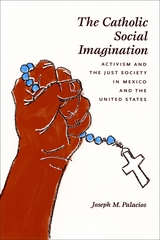 The Catholic Social Imagination: Activism and the Just Society in Mexico and the United States
Joseph M. Palacios
University of Chicago Press, 2007 The reach of the Catholic Church is arguably greater than that of any other religion, extending across diverse political, ethnic, class, and cultural boundaries. But what is it about Catholicism that resonates so profoundly with followers who live under disparate conditions? What is it, for instance, that binds parishioners in America with those in Mexico? For Joseph M. Palacios, what unites Catholics is a sense of being Catholic—a social imagination that motivates them to promote justice and build a better world.
In The Catholic Social Imagination, Palacios gives readers a feeling for what it means to be Catholic and put one’s faith into action. Tracing the practices of a group of parishioners in Oakland, California, and another in Guadalajara, Mexico, Palacios reveals parallels—and contrasts—in the ways these ordinary Catholics receive and act on a church doctrine that emphasizes social justice. Whether they are building a supermarket for the low-income elderly or waging protests to promote school reform, these parishioners provide important insights into the construction of the Catholic social imagination. Throughout, Palacios also offers important new cultural and sociological interpretations of Catholic doctrine on issues such as poverty, civil and human rights, political participation, and the natural law.
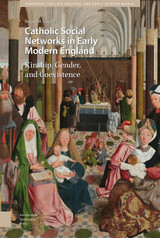 Catholic Social Networks in Early Modern England: Kinship, Gender, and Coexistence
Susan M. Cogan
Amsterdam University Press, 2021 Catholic Social Networks in Early Modern England: Kinship, Gender, and Coexistence explores the lived experience of Catholic women and men in the post-Reformation century. Set against the background of the gendered dynamics of English society, this book demonstrates that English Catholics were potent forces in the shaping of English culture, religious policy, and the emerging nation-state. Drawing on kinship and social relationships rooted in the medieval period, post Reformation English Catholic women and men used kinship, social networks, gendered strategies, political actions, and cultural activities like architecture and gardening to remain connected to patrons and to ensure the survival of their families through a period of deep social and religious change. This book contributes to recent scholarship on religious persecution and coexistence in post-Reformation Europe by demonstrating how English Catholics shaped state policy and enforcement of religious minorities and helped to define the character of early models of citizenship formation.
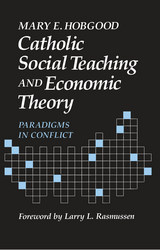 Catholic Social Teaching
Mary Hobgood
Temple University Press, 1991 "This excellent book is one of the few scholarly investigations that analyze the official Catholic School Teaching from the perspective of the secular, economic, and political sciences."
--Gregory Baum
Drawing upon a lively debate within the field of social theory, Mary E. Hobgood argues that the paradigm conflict between orthodox neoclassical and radical economic models is reflected in Catholic documents that address economic justice. She maintains that dynamics within Catholic teaching are explicable only in terms of this clash of fundamentally opposing perspectives.
This study shows how normative values of social justice are always tied to a particular social theory or model of society. When assumptions shift from one model to another, the concrete actions mandated by these justice norms change significantly. Consequently, the Catholic social justice tradition contains not only two mutually exclusive analyses of capitalist dynamics, it also has very different interpretations of such norms as economic democracy and a preferential notion for the poor. Hobgood argues that the Church needs to clarify the economic models that inform its social justice mandates and to assess those models for their compatibility with the Church's moral concerns, otherwise, Catholic social teaching's interpretations of justice and how Christians must act for it remain inconsistent.
"[Mary Hobgood] asks what Catholic teaching itself has assumed about the way the economy works, and she brings to the fore hidden assumptions that are fundamental to the policy prescriptions in Catholic teaching.... The result is a clear picture of the divided mind and practice of Catholicism when confronting twentieth-century economic realities. If Catholic teaching did us all the service of finding a strong moral and theological voice for a critique of secular economics, Dr. Hobgood points the way to make that voice a clearer one, more aware of its limitations and of its potential."
--Larry L. Rasmussen, from the Foreword
"This is one of the most enlightening analyses of Catholic social teaching that I have ever read. It goes far beyond the available commentaries because of its sharp focus on the economic--not just as the content of the teaching, but its provision of the theoretical framework in which to situate the economic content. The book is very insightful with regard to Catholic social teaching, but I think her exposition holds great value for the analysis of World Council of Churches' positions and the positions of any denomination. Even beyond that, her models throw light on the daily battles within any church institution that is working for justice and peace while at the same time engaging in the compromises and contradictions required to maintain itself within the current economic system."
--Marie J. Giblin, Maryknoll School of Theology
 Catholic Social Teaching, 1891-Present: A Historical, Theological, and Ethical Analysis
Charles E. Curran
Georgetown University Press, 2002 Charles E. Curran offers the first comprehensive analysis and criticism of the development of modern Catholic social teaching from the perspective of theology, ethics, and church history. Curran studies the methodology and content of the documents of Catholic social teaching, generally understood as comprising twelve papal letters beginning with Leo XIII's 1891 encyclical Rerum novarum, two documents from Vatican II, and two pastoral letters of the U.S. bishops. He contends that the fundamental basis for this body of teaching comes from an anthropological perspective that recognizes both the inherent dignity and the social nature of the human person—thus do the church's teachings on political and economic matters chart a middle course between the two extremes of individualism and collectivism. The documents themselves tend to downplay any discontinuities with previous documents, but Curran's systematic analysis reveals the significant historical developments that have occurred over the course of more than a century. Although greatly appreciative of the many strengths of this teaching, Curran also points out the weaknesses and continuing tensions in Catholic social teaching today. Intended for scholars and students of Catholic social ethics, as well as those involved in Catholic social ministry, this volume will also appeal to non-Catholic readers interested in an understanding and evaluation of Catholic social teaching.
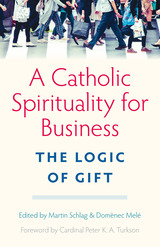 A Catholic Spirituality for Business
Martin Schlag
Catholic University of America Press, 2019 Spirituality and gift are notions that are en vogue. Topics such as spirituality at the workplace, spirituality management, spirituality in leadership, organizational spirituality and other related topics are trending in management literature. The “logic of gift” is also appearing more frequently, especially in attempts to rethink the way our economy works in order to include the marginalized.
<
The expression “logic of gift” was introduced into official Catholic social teaching by Pope Benedict XVI, who presented it in association with the principle of gratuitousness, which in turn is an expression of fraternity. However, before Caritas in Veritate and ever since Marcel Mauss’s groundbreaking work The Gift, the importance of gift for human relationships and for the cohesion of society had been increasingly recognized. Alain Caillé and Jacques T. Godbout further fleshed out the implication of gift for contemporary society in the context of secular social sciences, striving to overcome utilitarianism. It was the “civil economy” movement, however, that exercised greatest influence on Benedict XVI’s encyclical Caritas in Veritate
This present volume reflects on the general scope of these notions for business and society. This is done by structuring the book in two parts, each dedicated to one of the two concepts. Each part has two general chapters and two that apply the notions to business and to business education. The authors are a mix of well-known emeritus professors and younger talented emerging scholars. We have also been careful to combine European with American authors.
A Catholic Spirituality for Business: The Logic of Gift does not seek to provide a definitive answer to all social challenges, but to make a contribution to a better understanding of Christian spirituality and gift in connection with business organizations. The authors in this book are convinced that markets can be ethical and social, that moral change towards ethical capitalism is possible.
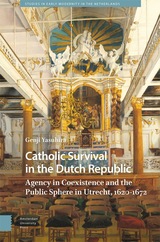 Catholic Survival in the Dutch Republic: Agency in Coexistence and the Public Sphere in Utrecht, 1620-1672
Genji Yasuhira
Amsterdam University Press, 2024 Even in adversity, Catholics exercised considerable agency in post-Reformation Utrecht. Through the political practices of repression and toleration, Utrecht’s magistrates, under constant pressure from the Reformed Church, attempted to exclude Catholics from the urban public sphere. However, by mobilizing their social status and networks, Catholic Utrechters created room to live as pious Catholics and honourable citizens, claiming more rights in the public sphere through their spatial practices and in discourses of self-representation. This book explores how Catholic priests and laypeople cooperated and managed to survive the Reformed regime by participating in a communal process of delimiting the public, continuing to rely on the medieval legacy and adapting to early modern religious diversity. Deploying their own understandings of publicness, Catholic Utrechters not only enabled their survival in the city and the Catholic revival in the Dutch Republic but also contributed to shaping a multi-religious society in the Northern Netherlands.
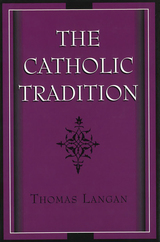 The Catholic Tradition
Thomas Langan
University of Missouri Press, 1998
In his Tradition and Authenticity in the Search for Ecumenic Wisdom, Thomas Langan argued that the close interaction of traditions in today's society calls for methodical critical appropriation of the beliefs fostered by the principal traditions. He also promised to demonstrate by example how such appropriation could be accomplished. In The Catholic Tradition, Langan successfully fulfills that vow by showing how a tradition—the Catholic—has shaped his own outlook.
In this comprehensive study, Langan examines the history of the Catholic Church and the origins of its teachings since the Church's conception. Although committed to the Catholic religion, Langan does not obscure the Church's failings as he lays out the fundamentals of the Catholic faith.
He provides insight into the great Christological councils, discusses the differences in the spiritualities of East and West, and portrays the crucial roles that the pope and bishops played during the Middle Ages. He incorporates the thought of Augustine, Aquinas, and medieval Catholicism as he traces the rise and decline of Christian Europe, the great issues raised by the reform: priesthood, the Eucharist, spirituality, and Church structure.
Satan has no greater triumph, Langan asserts, than when Catholics, who are recipients of the Good News of God's universal love, allow selections from their tradition to be turned into sectarianism and ideology. This balanced history of the Church as human reality faces such perversions squarely. But despite betrayals by its own across the centuries, the Catholic tradition, with its origin at Sinai, remains the oldest and largest extant religious institution.
In a last section Langan offers a unique overview of the church's present situation, its strengths and weaknesses, the new movement and the challenge of the "new evangelization."
 Catholic Universities in Church and Society: A Dialogue on Ex Corde Ecclesiae
John P. Langan, SJ, Editor
Georgetown University Press, 1993 The Roman Catholic Church's first significant legislative enactment on the nature and role of the Catholic university, the apostolic constitution Ex corde Ecclesiae (1990) grew out of thirty years of dialogue between ecclesiastical authorities and academic representatives. The final document affirms the explicit Catholic identity of Catholic educational institutions and outlines provisions for maintaining that identity; the questions of how to implement its provisions have in turn created the need for more dialogue and examination. In this volume, distinguished scholars and legal experts define the key questions and explore the future implications of Ex corde for American Catholic colleges and universities. The assertion of the Catholic identity of Catholic institutions of higher education prompts the contributors to examine the definition of Catholic education as a special synthesis of the religious and the academic, of faith and reason; and to discuss corollary issues such as secularization; the counter-cultural features of Catholic education; and the great diversity of such schools in the United States and of their sponsoring religious orders. The contributors probe the schools' relationships with the Church hierarchy, exploring in particular the role of the bishops, the degree of autonomy from ecclesiastical control, and questions of academic freedom. They also consider specific legal issues that American Catholic colleges must face, including recognition of student groups, tenure and promotion decisions, governance, student and faculty conduct, and the relationship between canon and civil law, including compliance with national and local civil rights provisions. This volume also includes the complete text in English of Ex corde Ecclesiae and the preliminary draft of ordinances from the Ex corde Ecclesiae Implementation Committee of the National Conference of Catholic Bishops. Appearing at a time when universities must face major issues of their own identity and governance, this volume will be of interest to all faculty and administrators, diocesan authorities and legal counsel, and everyone concerned with the future of Catholic higher education.
 The Catholic University as Promise and Project: Reflections in a Jesuit Idiom
Michael J. Buckley, SJ
Georgetown University Press, 1998 The remarkable development of the Catholic university in the United States has raised issues about its continued identity, its promise, and its academic constituents. Michael J. Buckley, SJ, explores these questions, especially as they have been experienced in Jesuit history and contemporary commitments. The fundamental proposition that grounds the Catholic university, Buckley argues, is that the academic and the religious are intrinsically related. Academic inquiry encourages a process of questioning that leads naturally to issues of ultimate significance, while the experience of faith is towards the understanding of itself and of its relationship to every other dimension of human life. This mutual involvement requires a union between faith and culture that defines the purposes of Catholic higher education. In their earliest and normative documents, Jesuit universities have been encouraged to achieve this integration through the central role given to theology. Buckley explores two commitments that implicate contemporary Catholic universities in controversy: an insistence upon open, free discussion and academic pluralism—to the objections of some in the Church; and an education in the promotion of justice—to the objections of some in the academy. Finally, to strengthen philosophical and theological studies, Buckley suggests both a "philosophical grammar" that would discover and study the assumptions and methods involved in the various forms of disciplined human inquiry and a set of "theological arts" founded upon the more general liberal arts. Entering into the contemporary discussion about the Catholic university, this book offers inspiring and thought-provoking ideas for those engaged in Catholic higher education.
|
|
